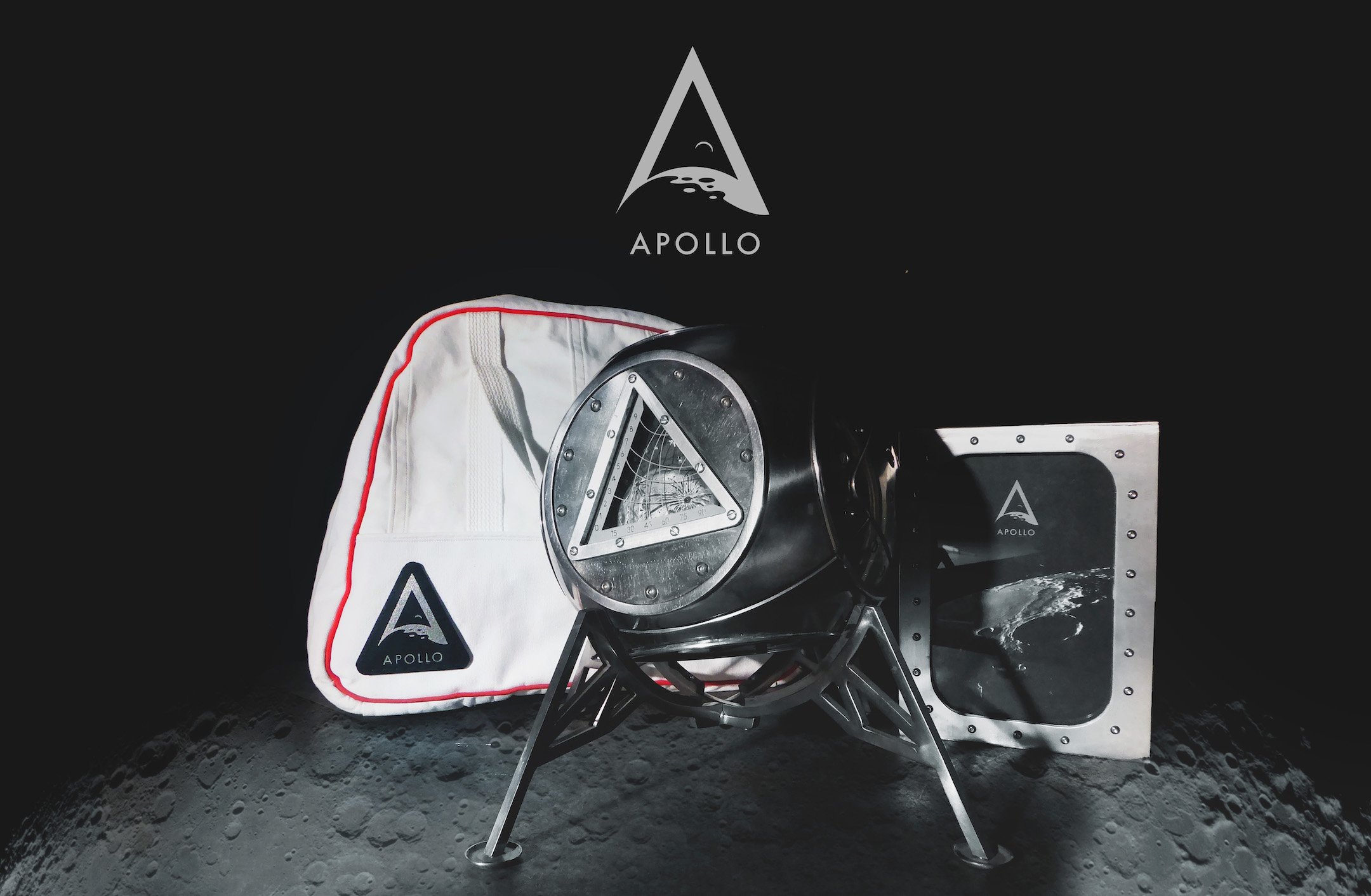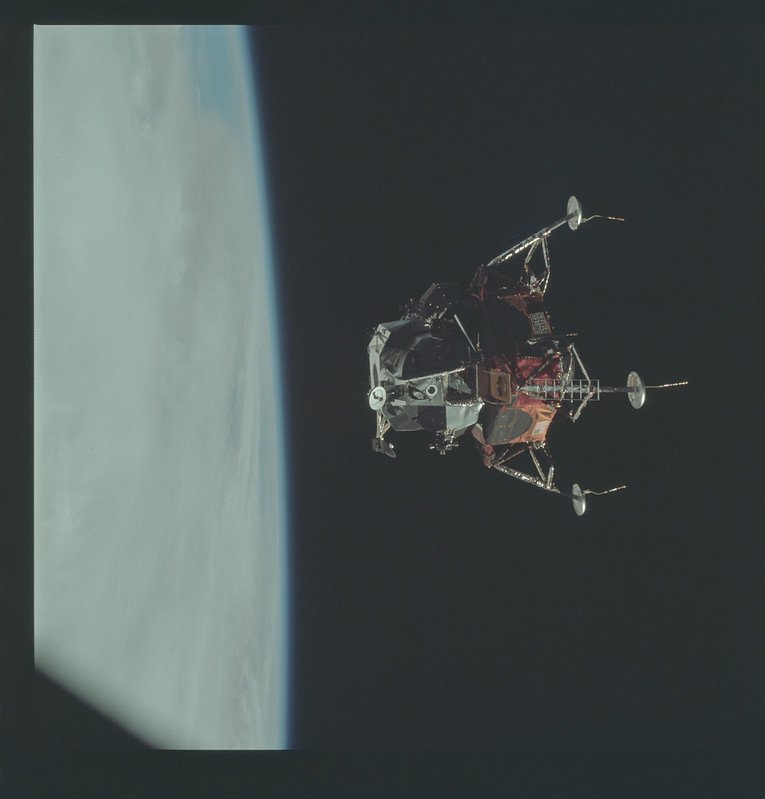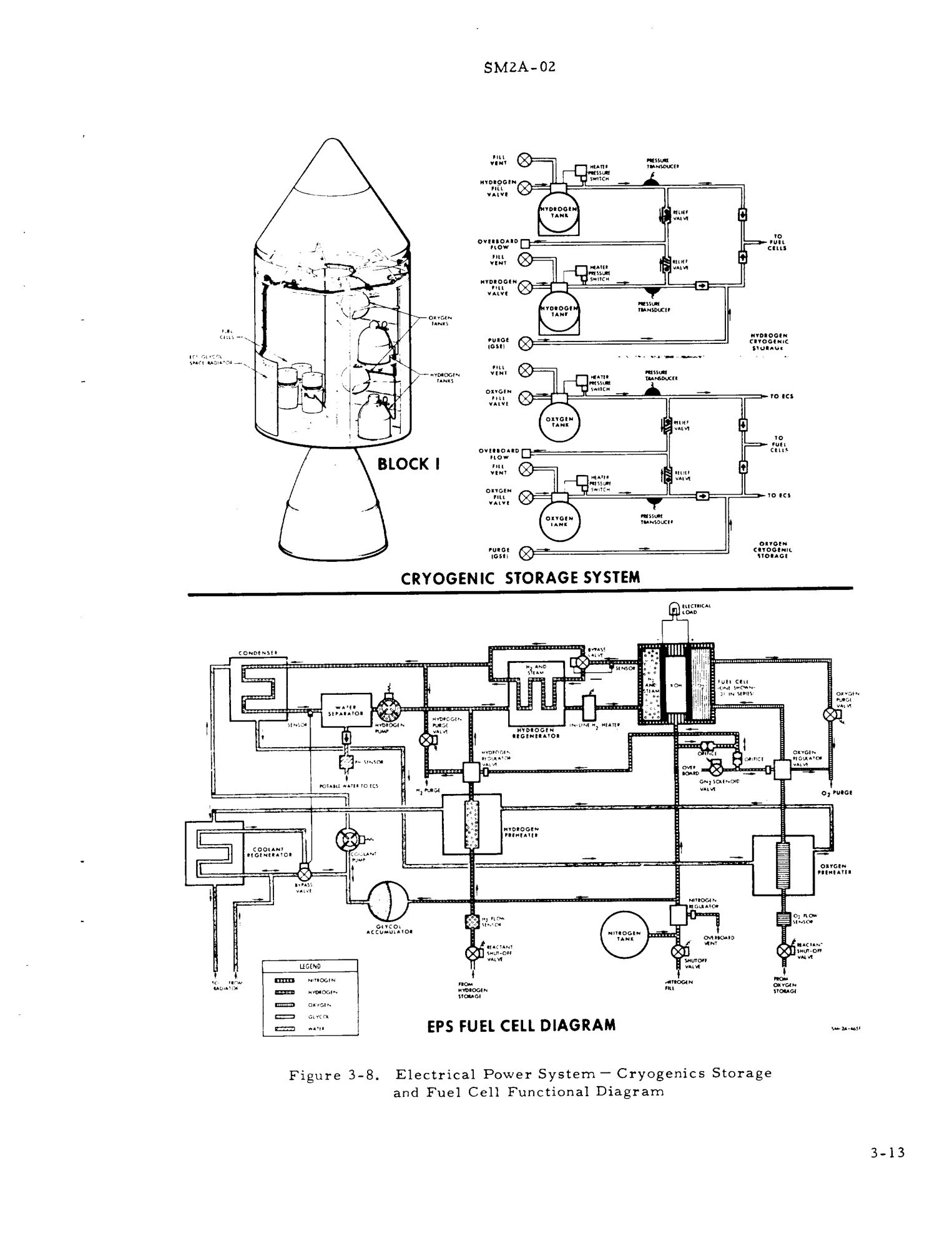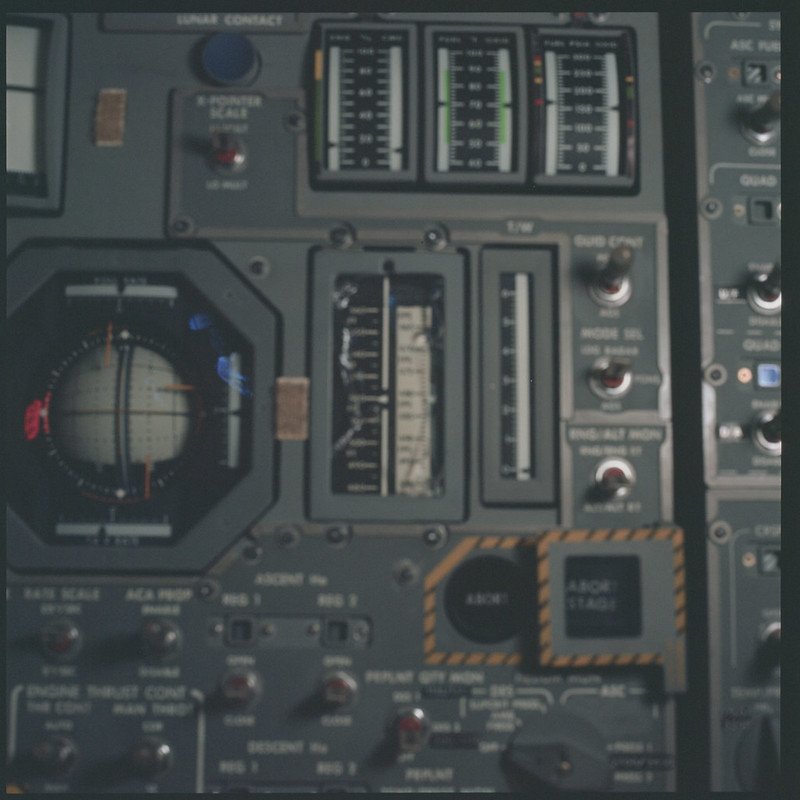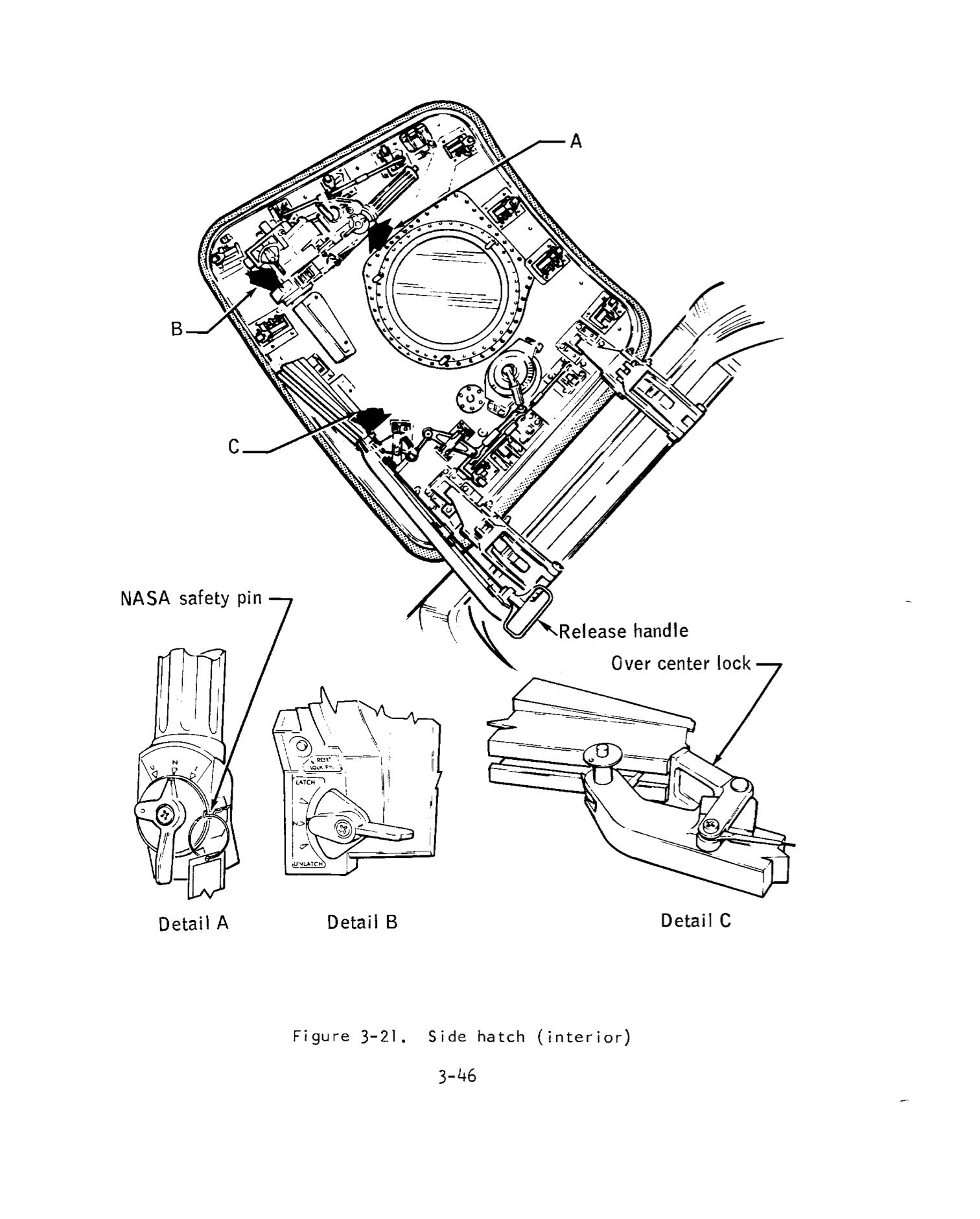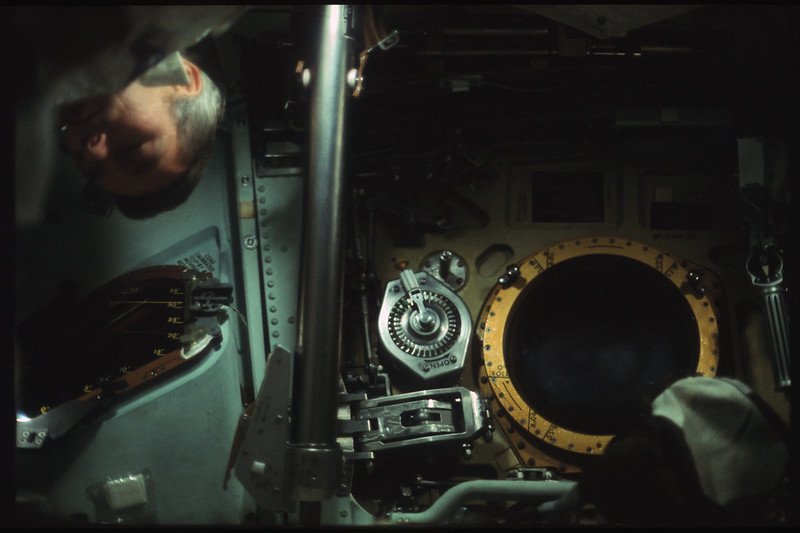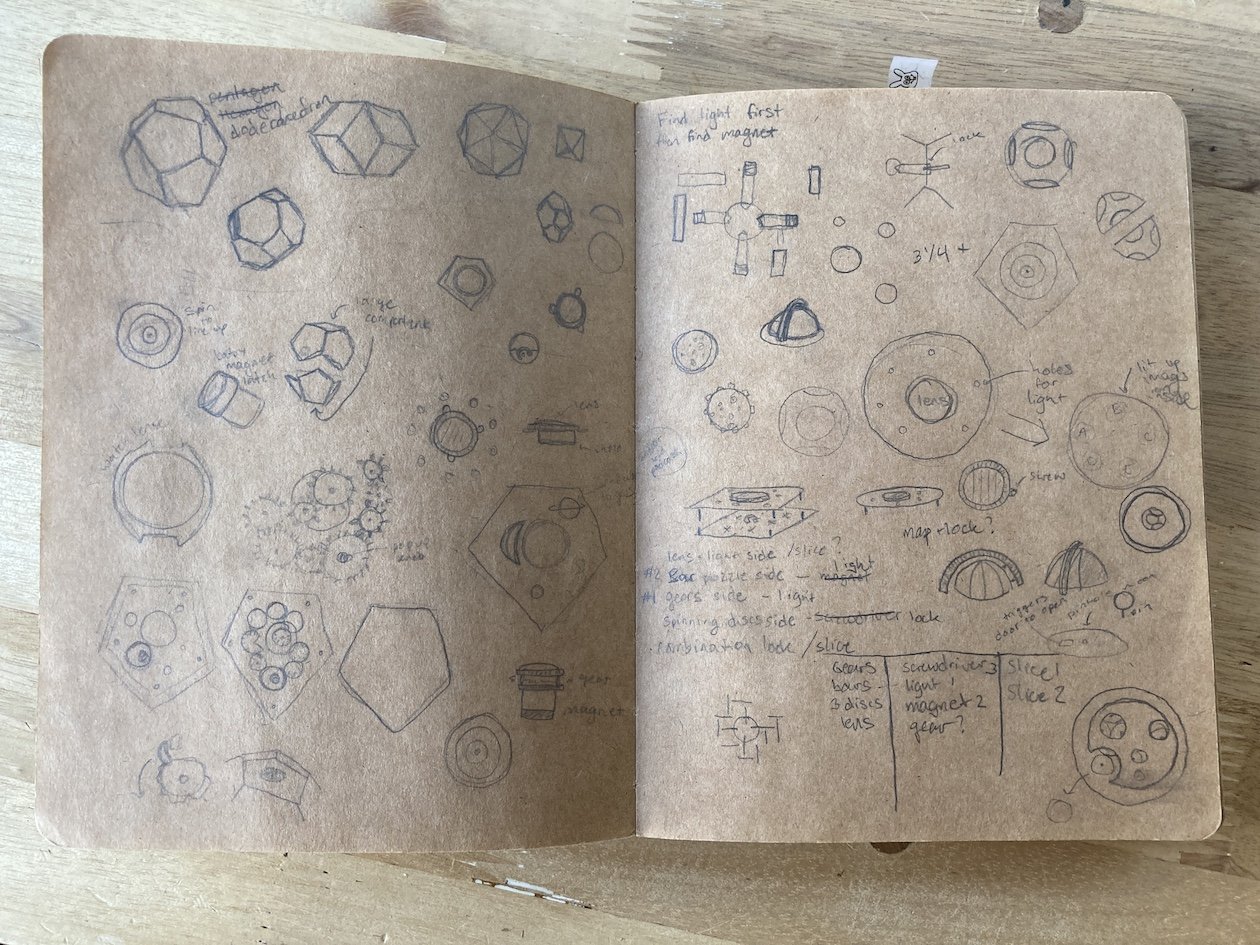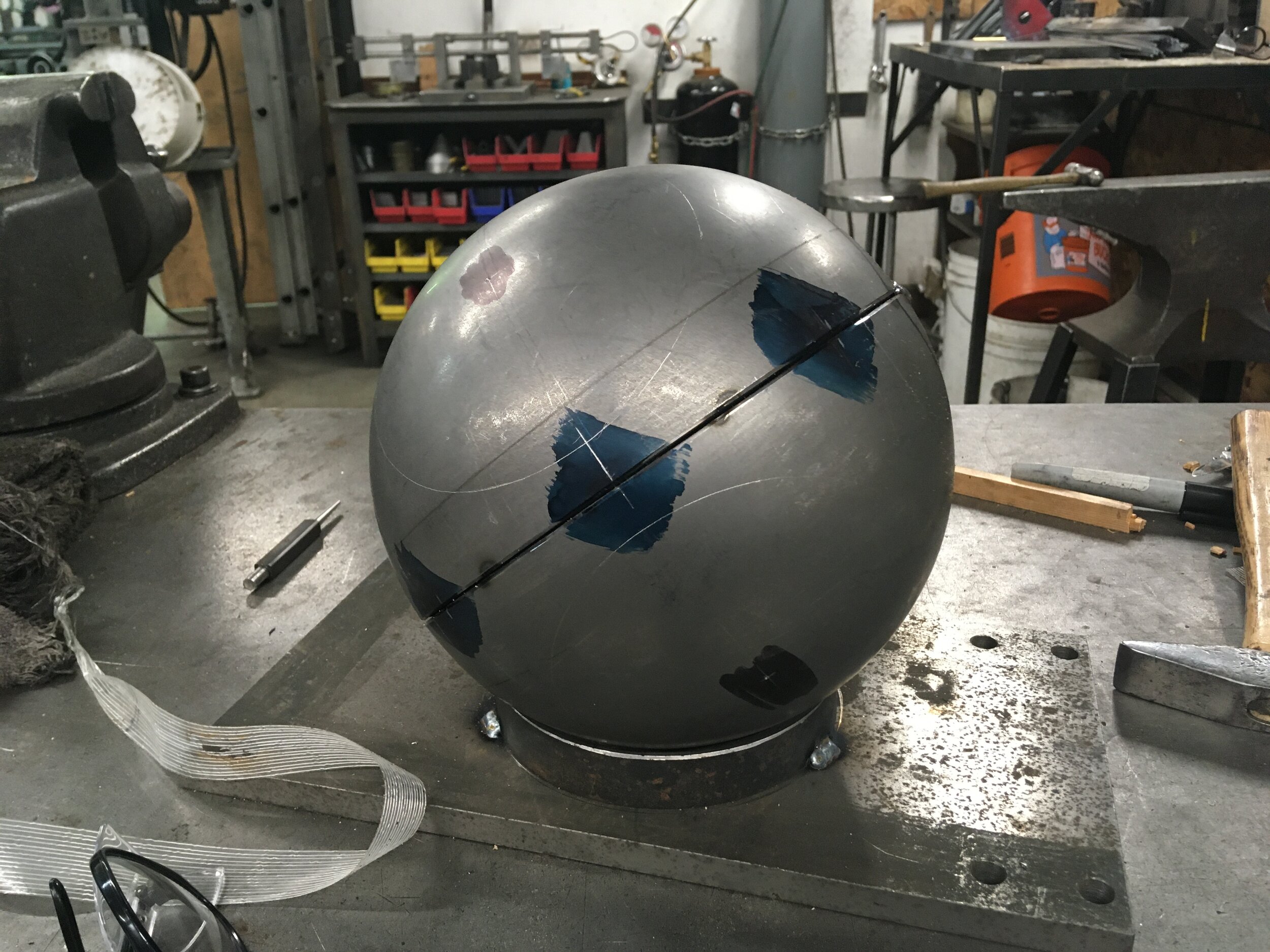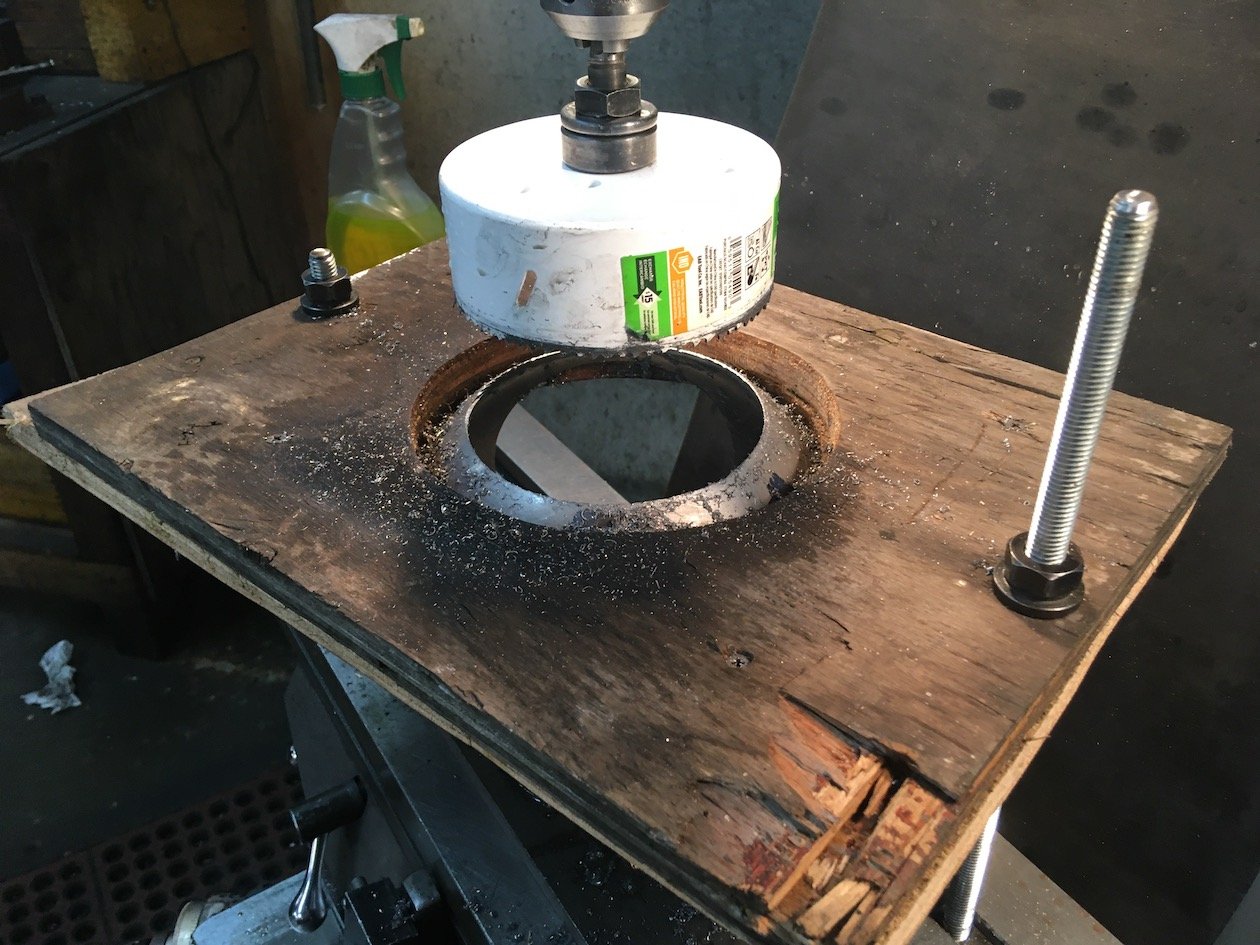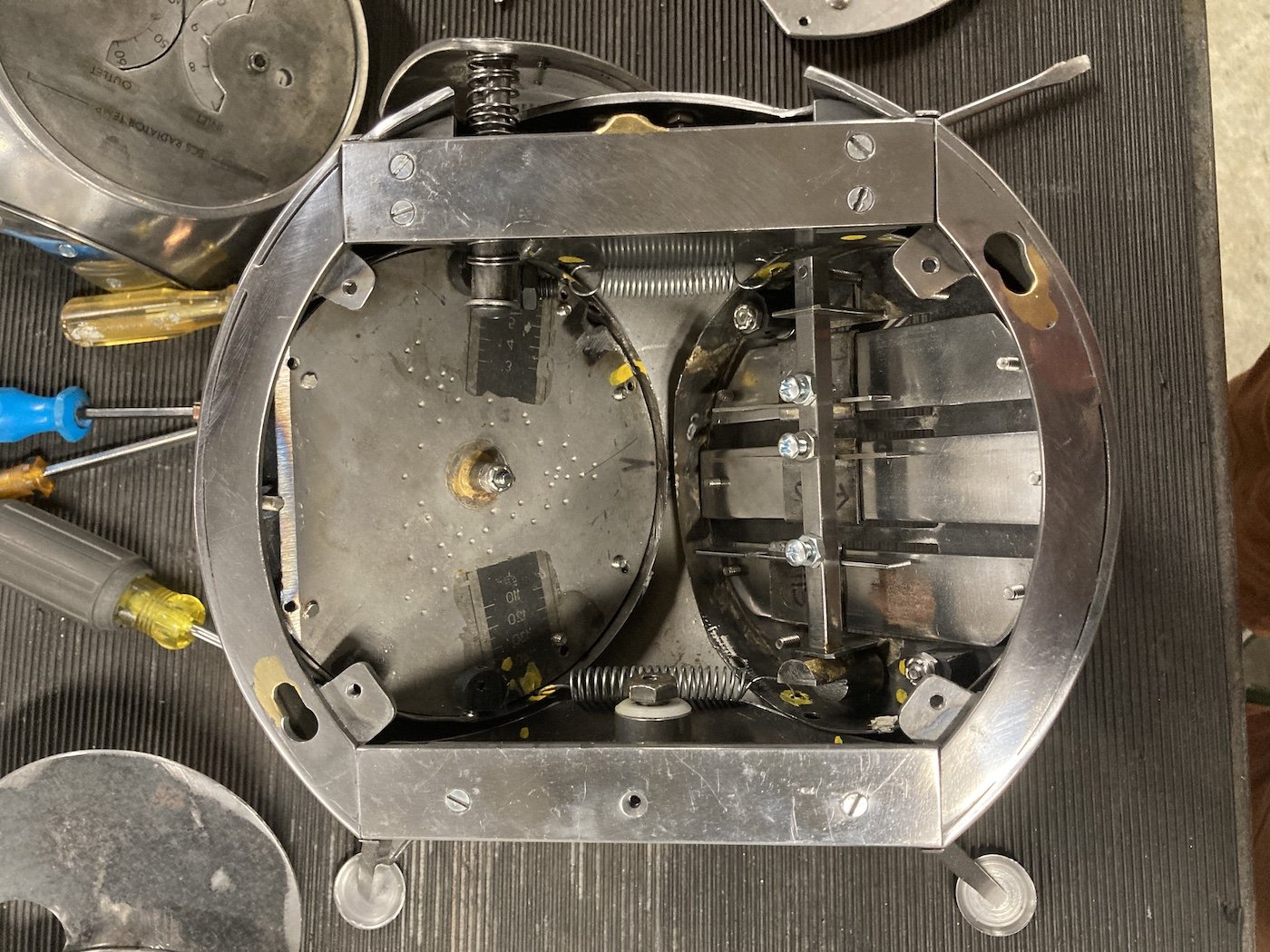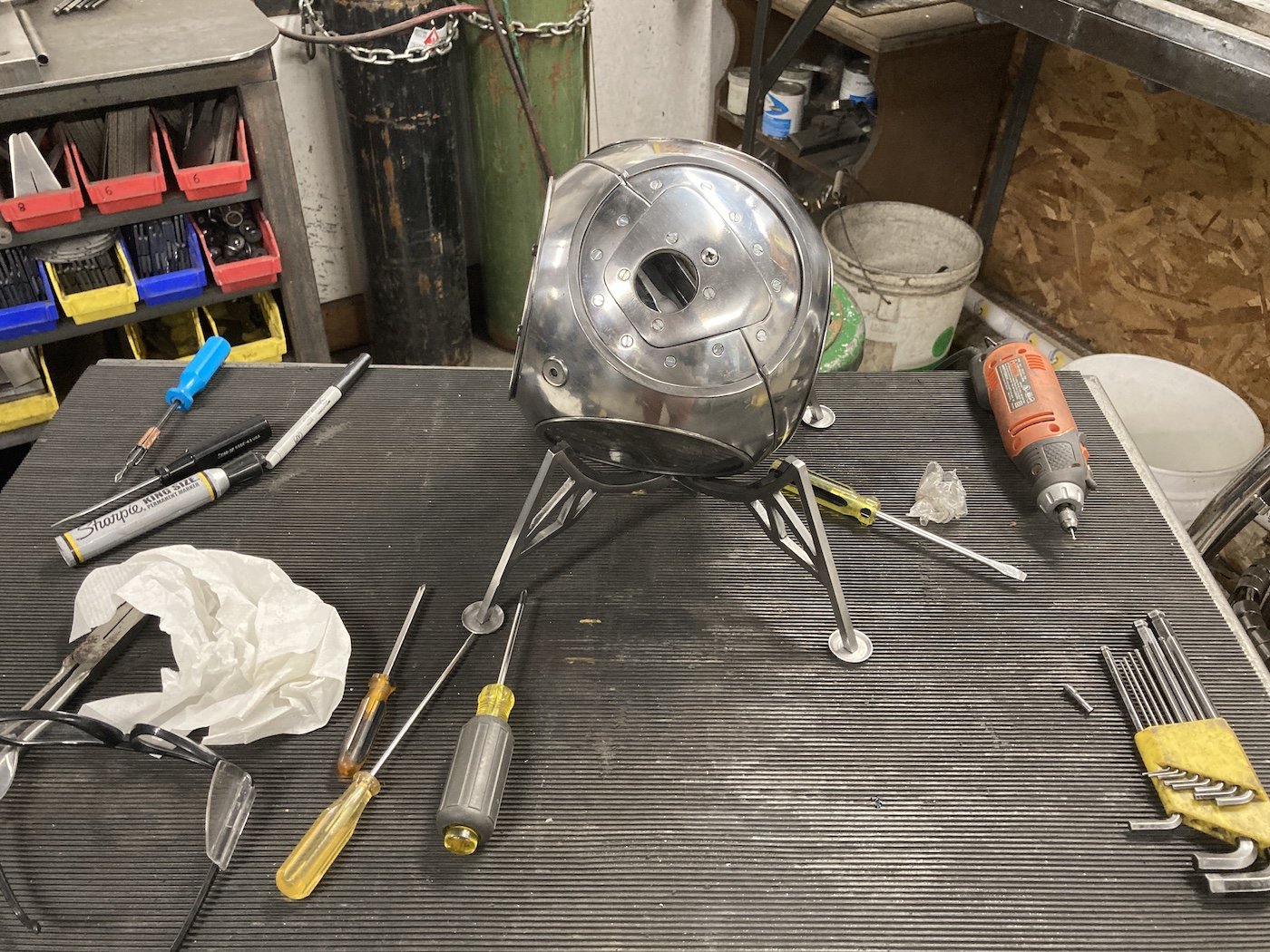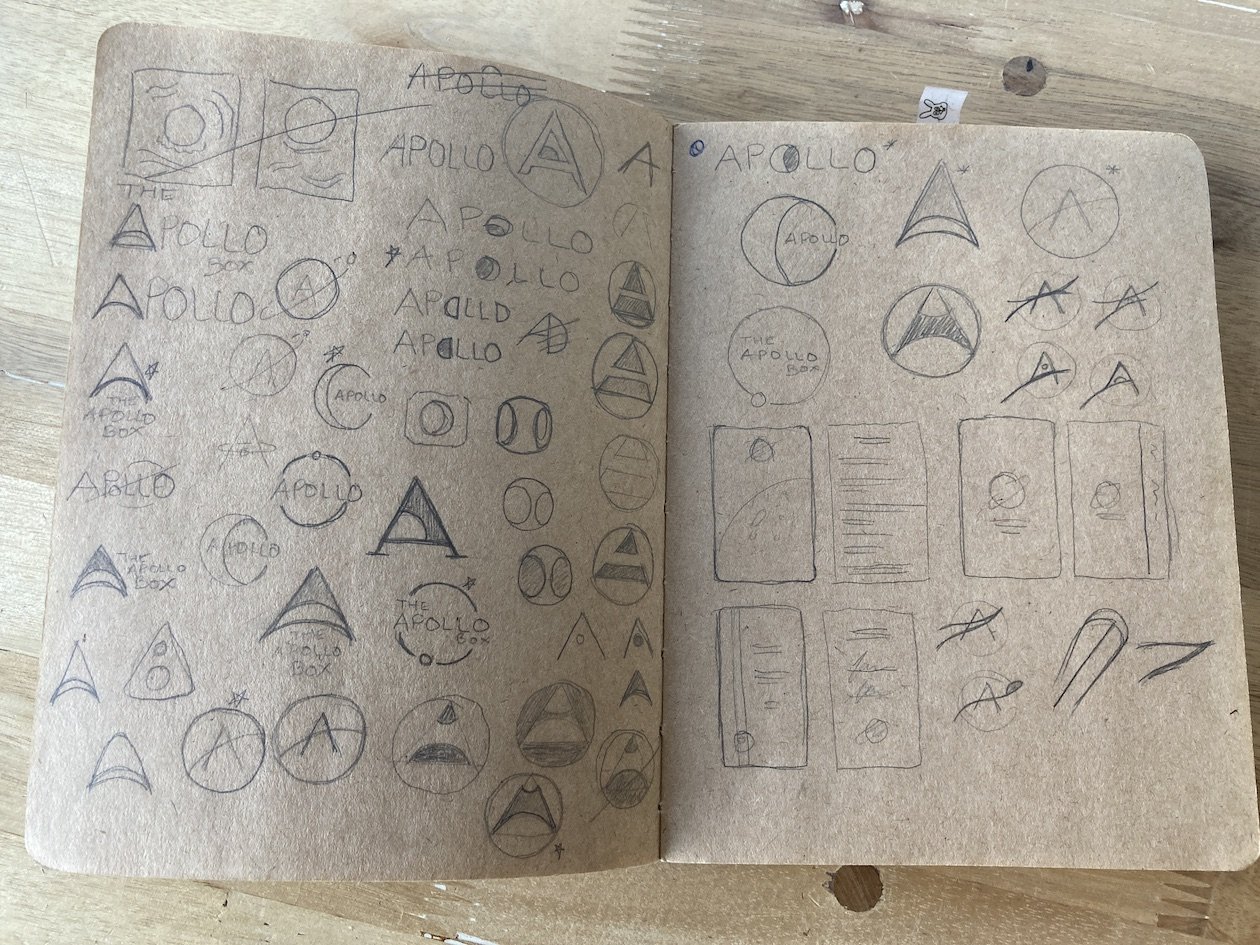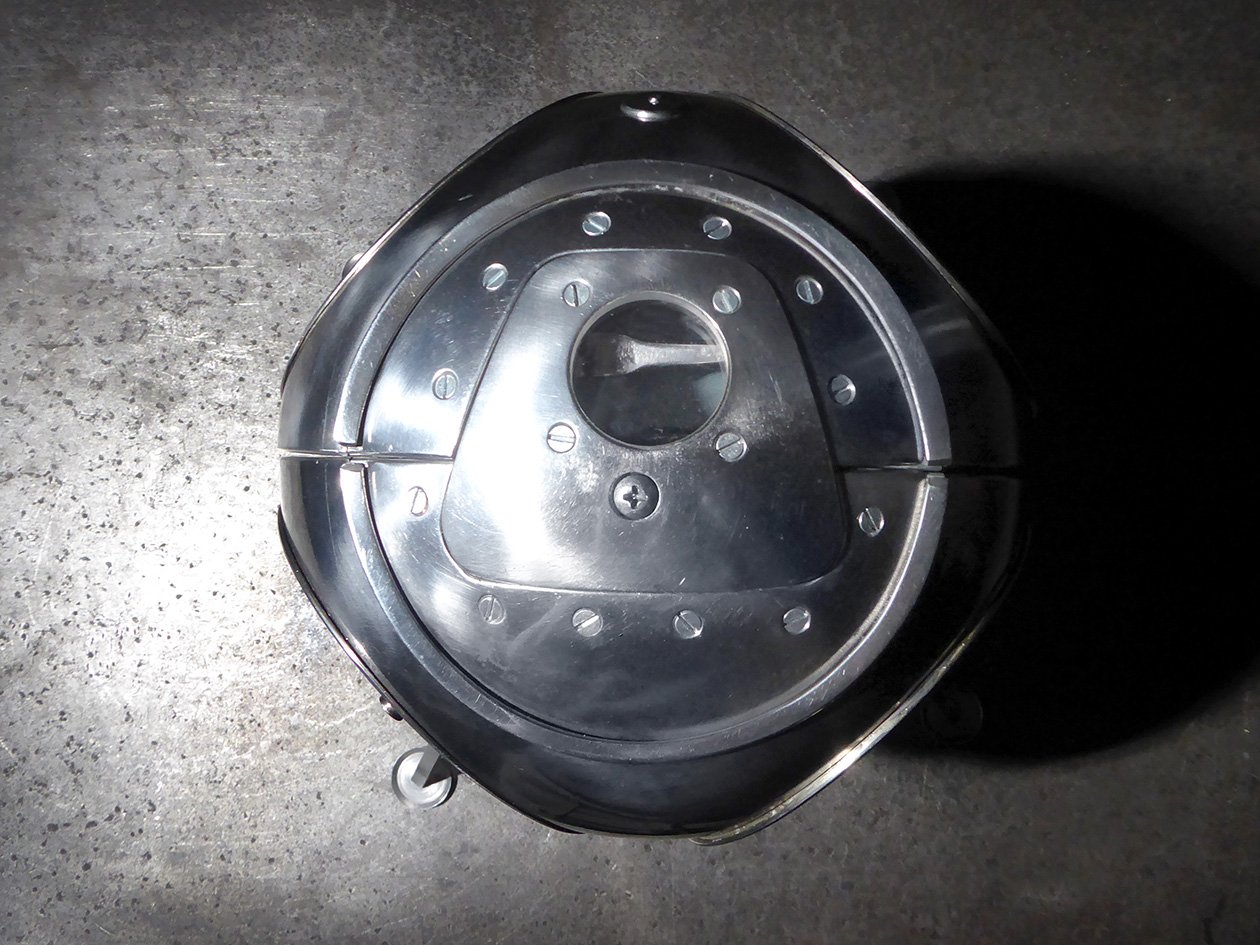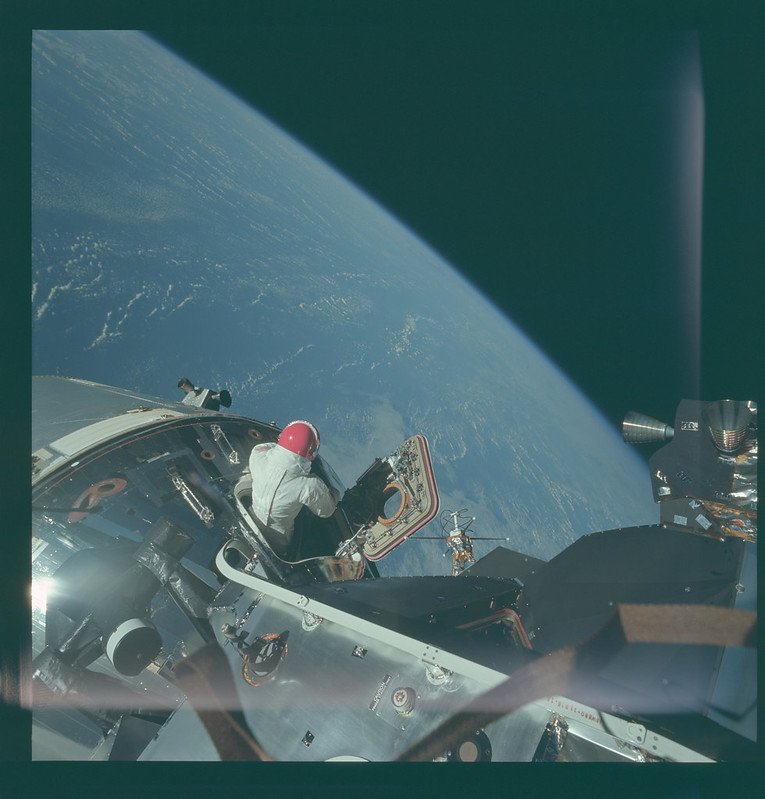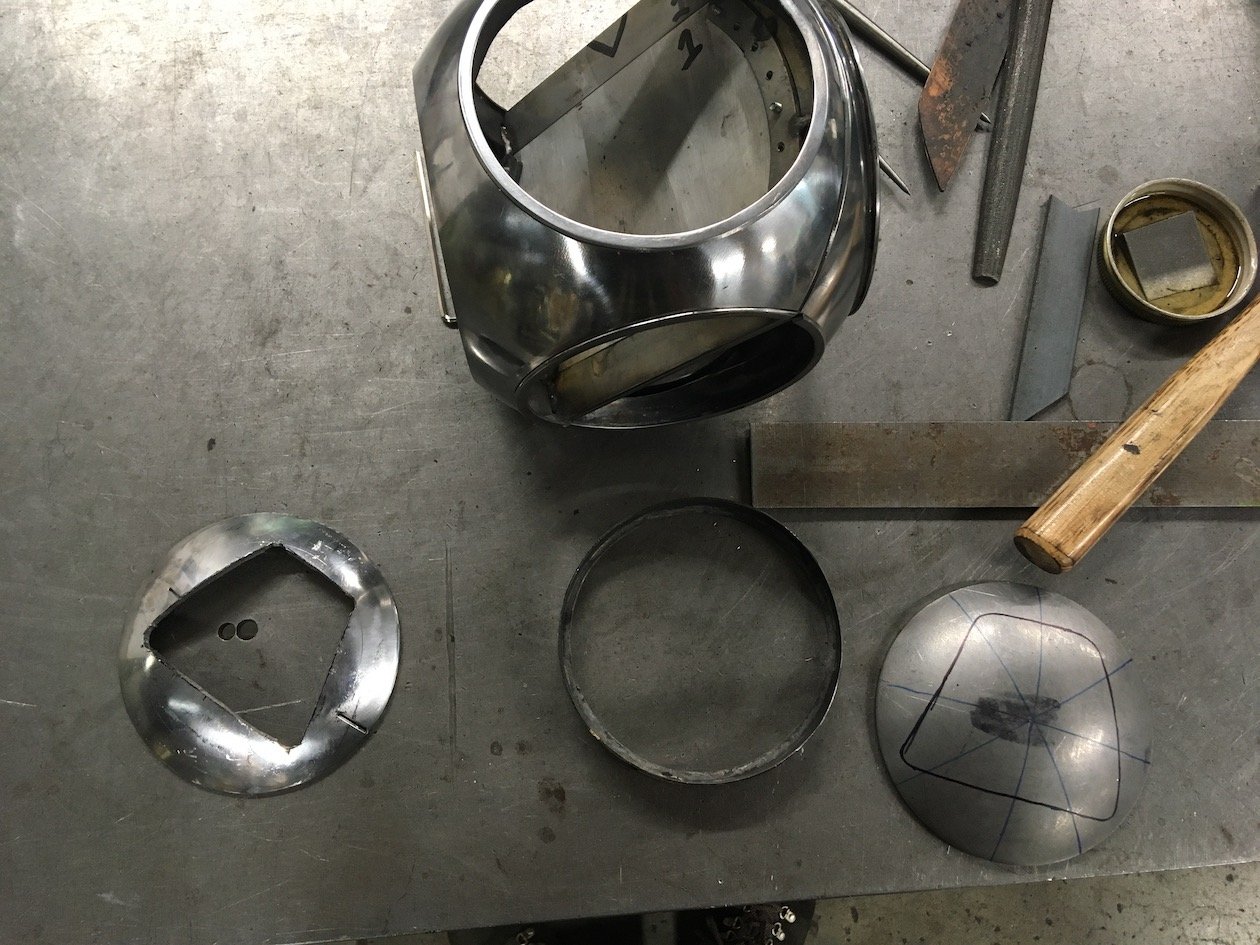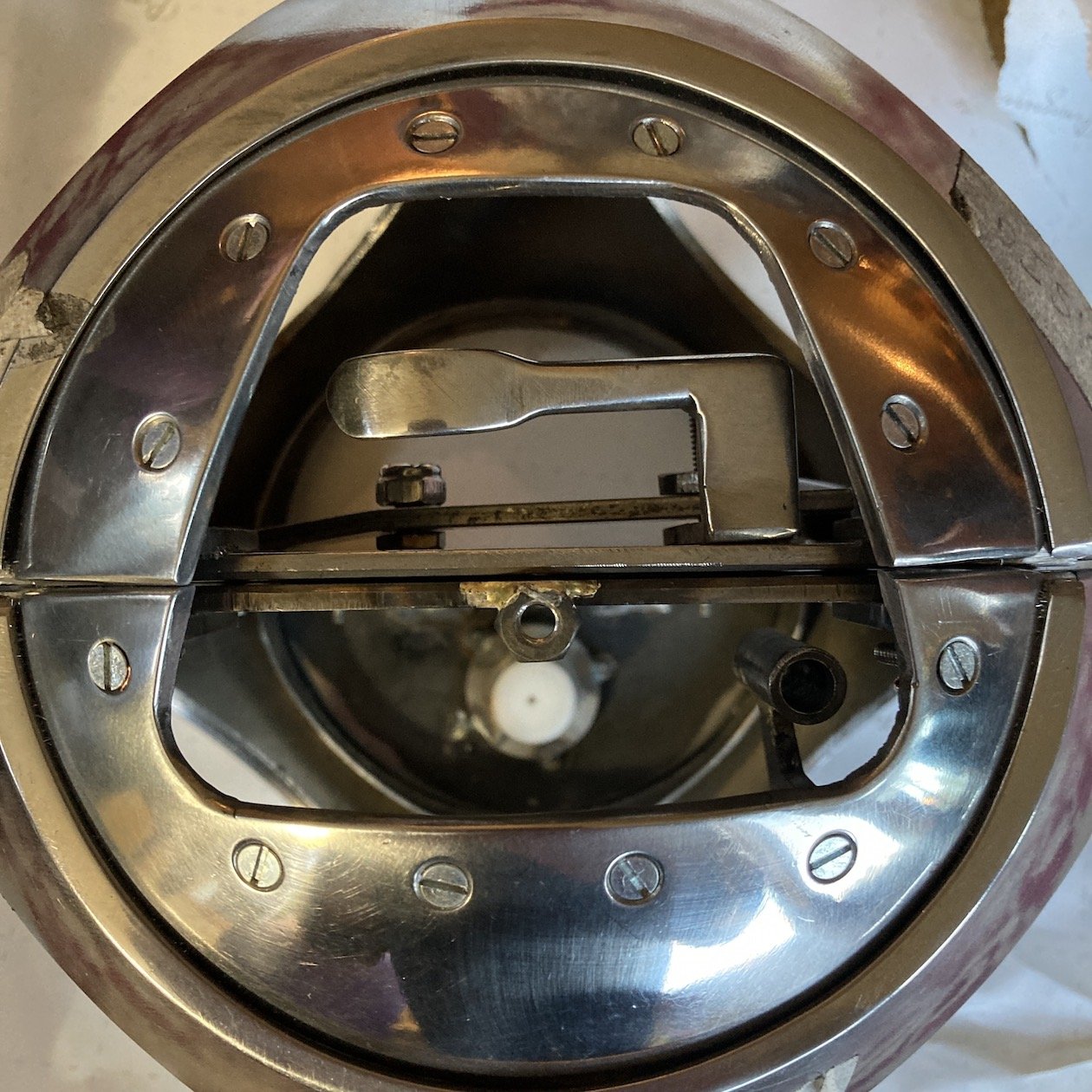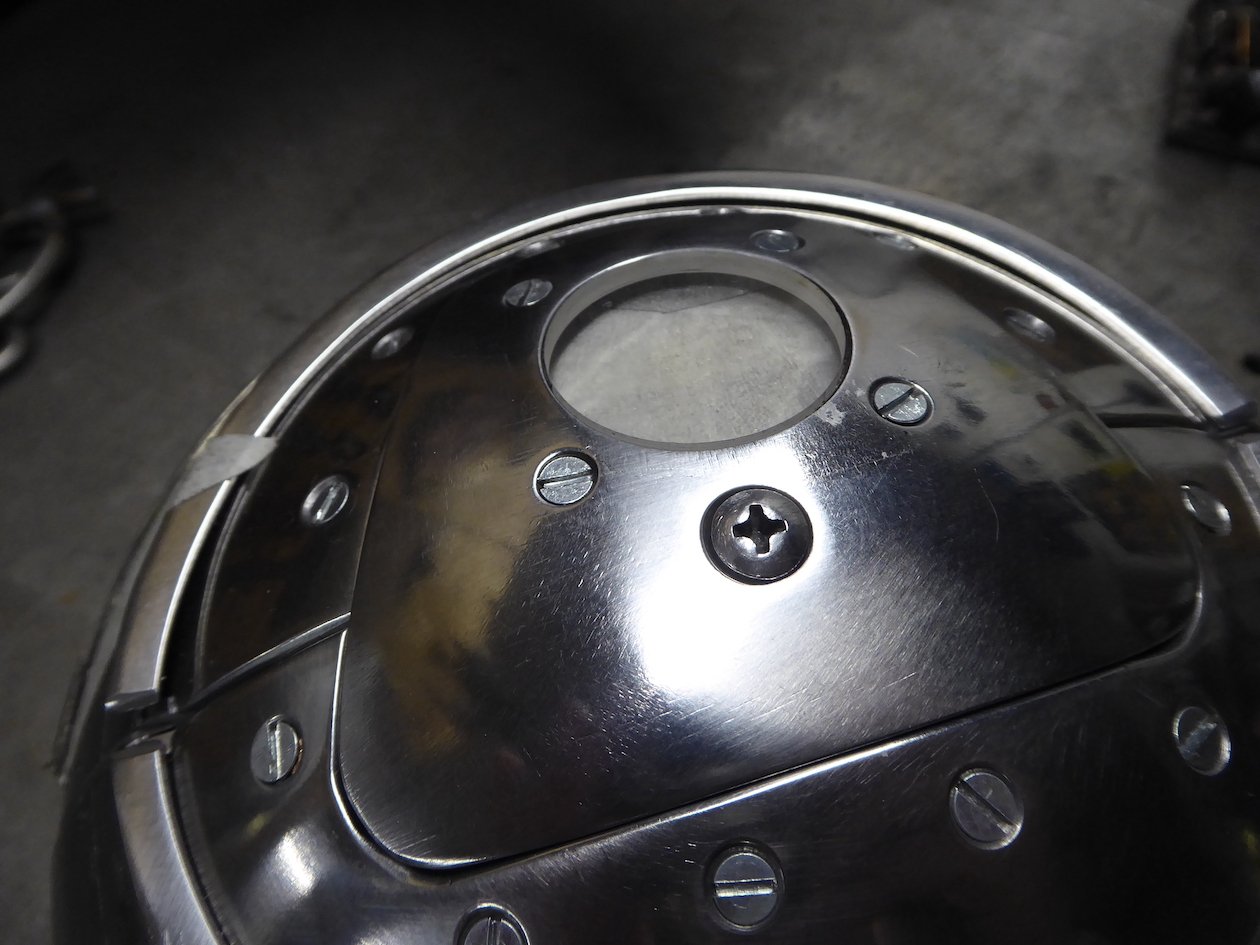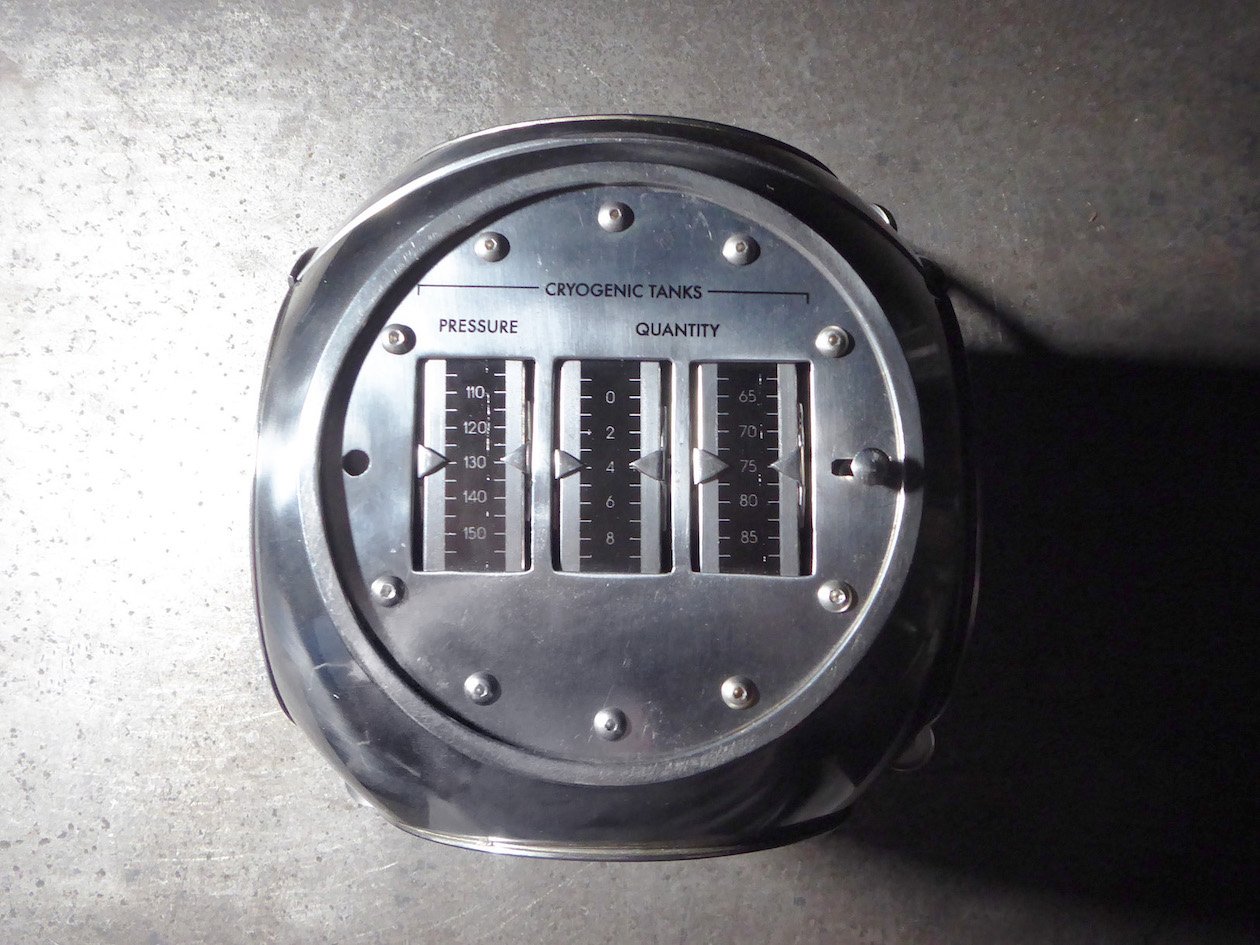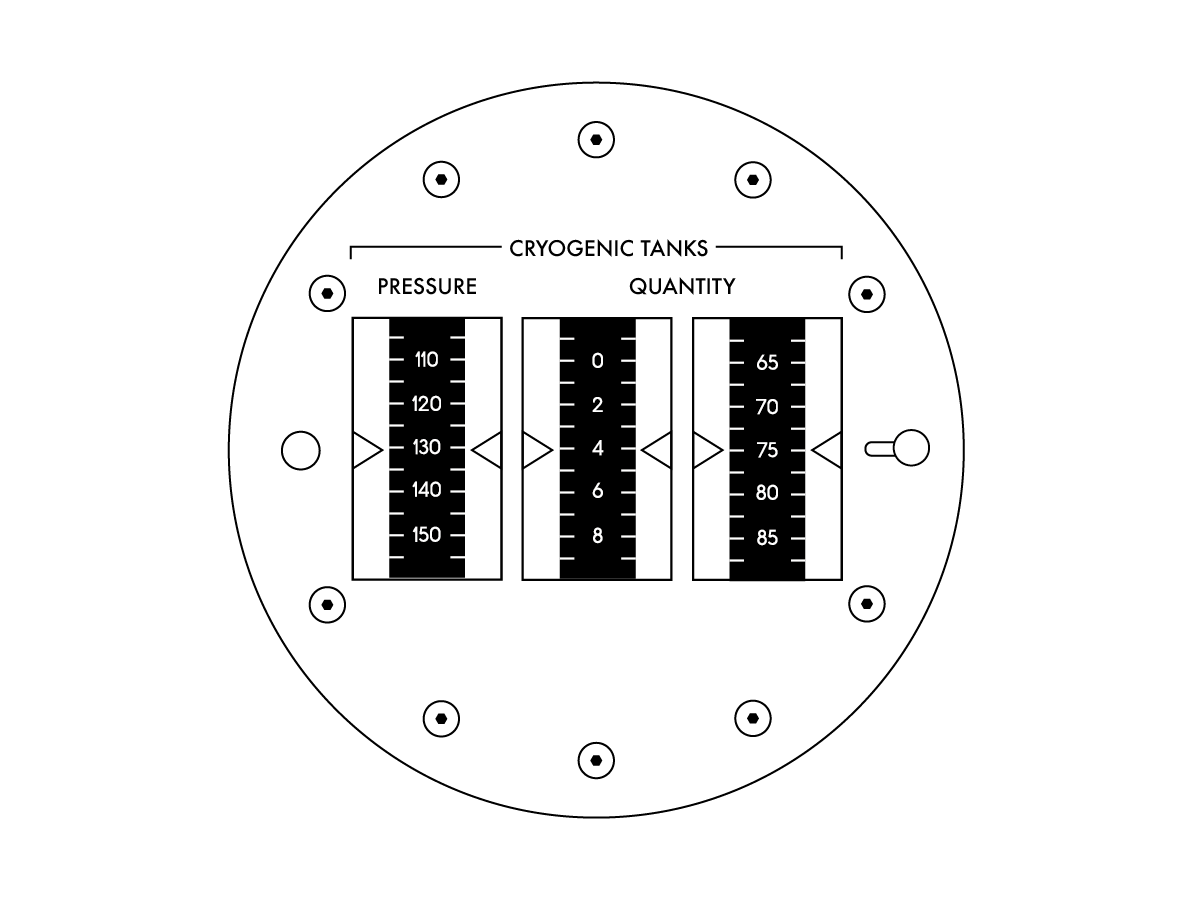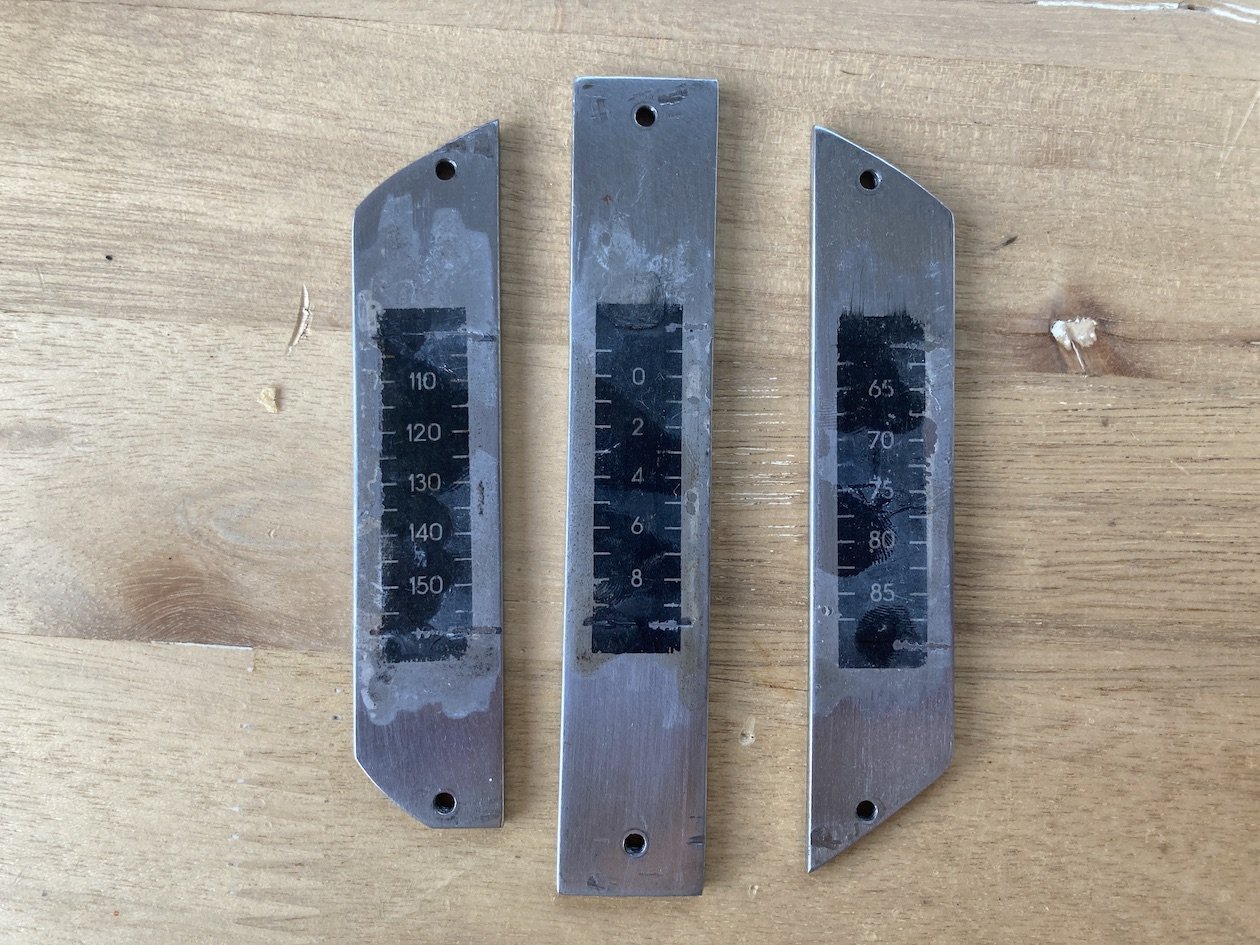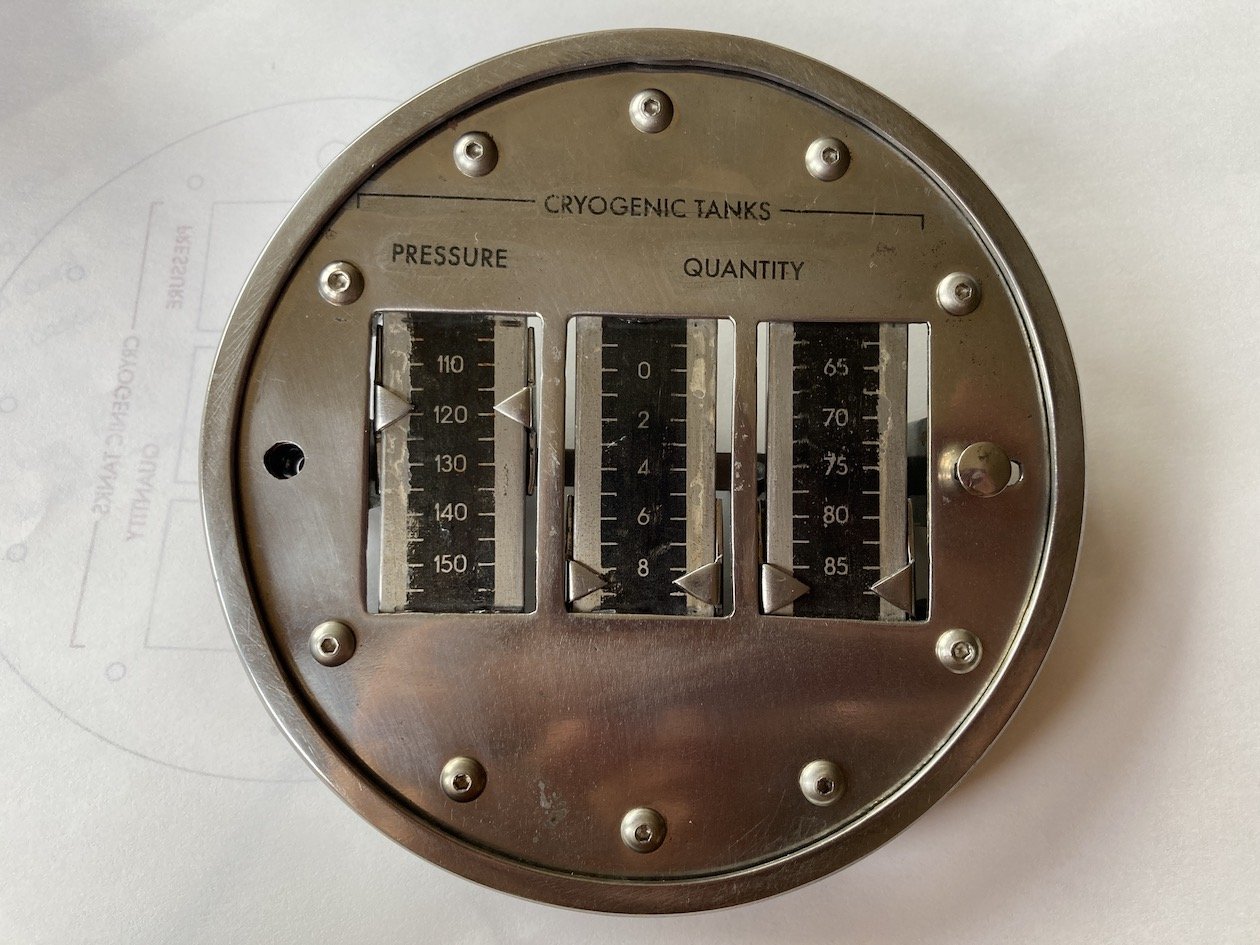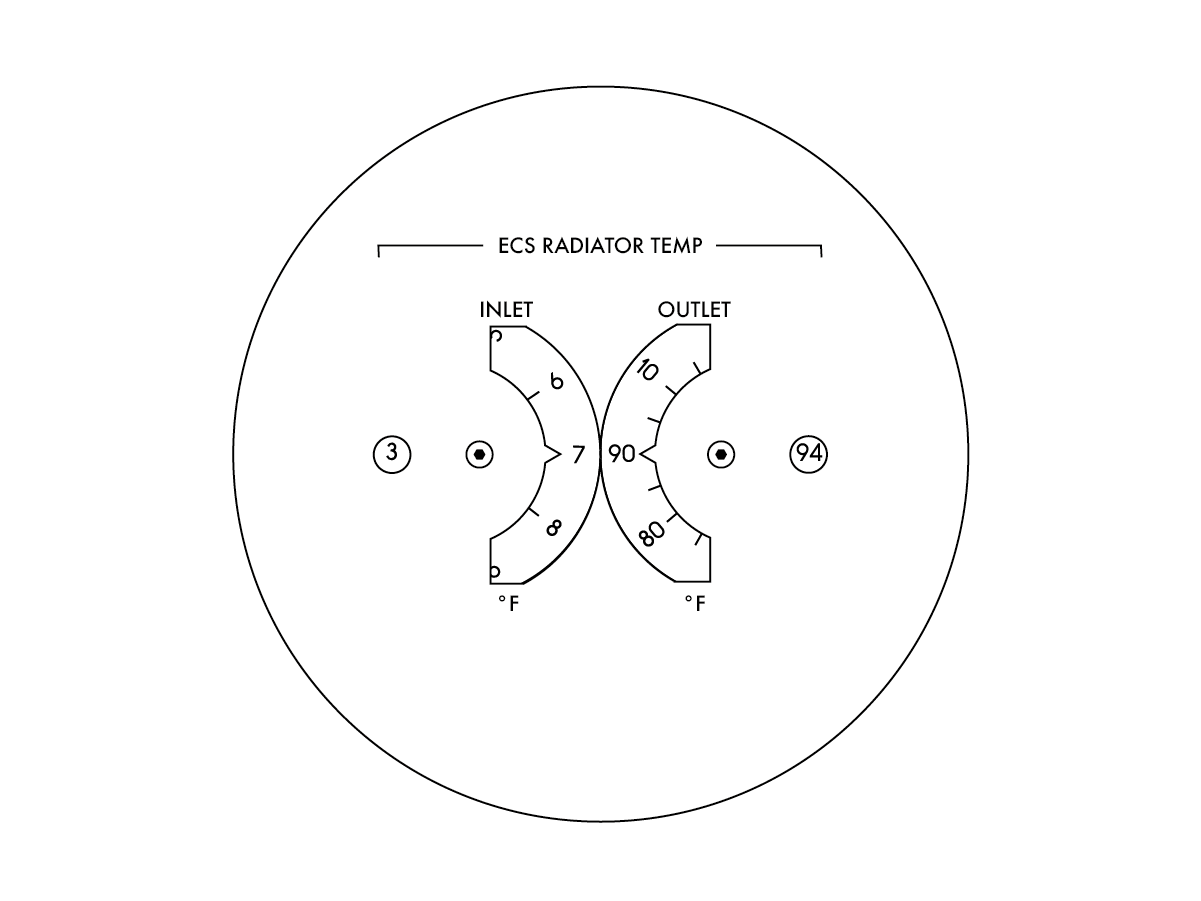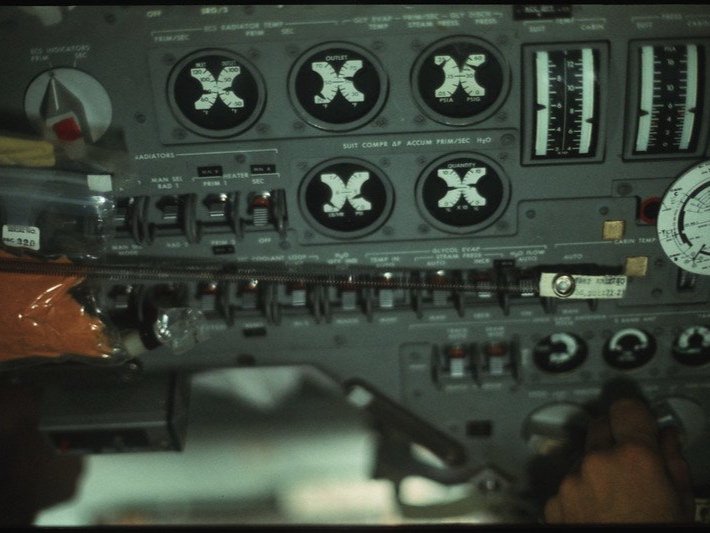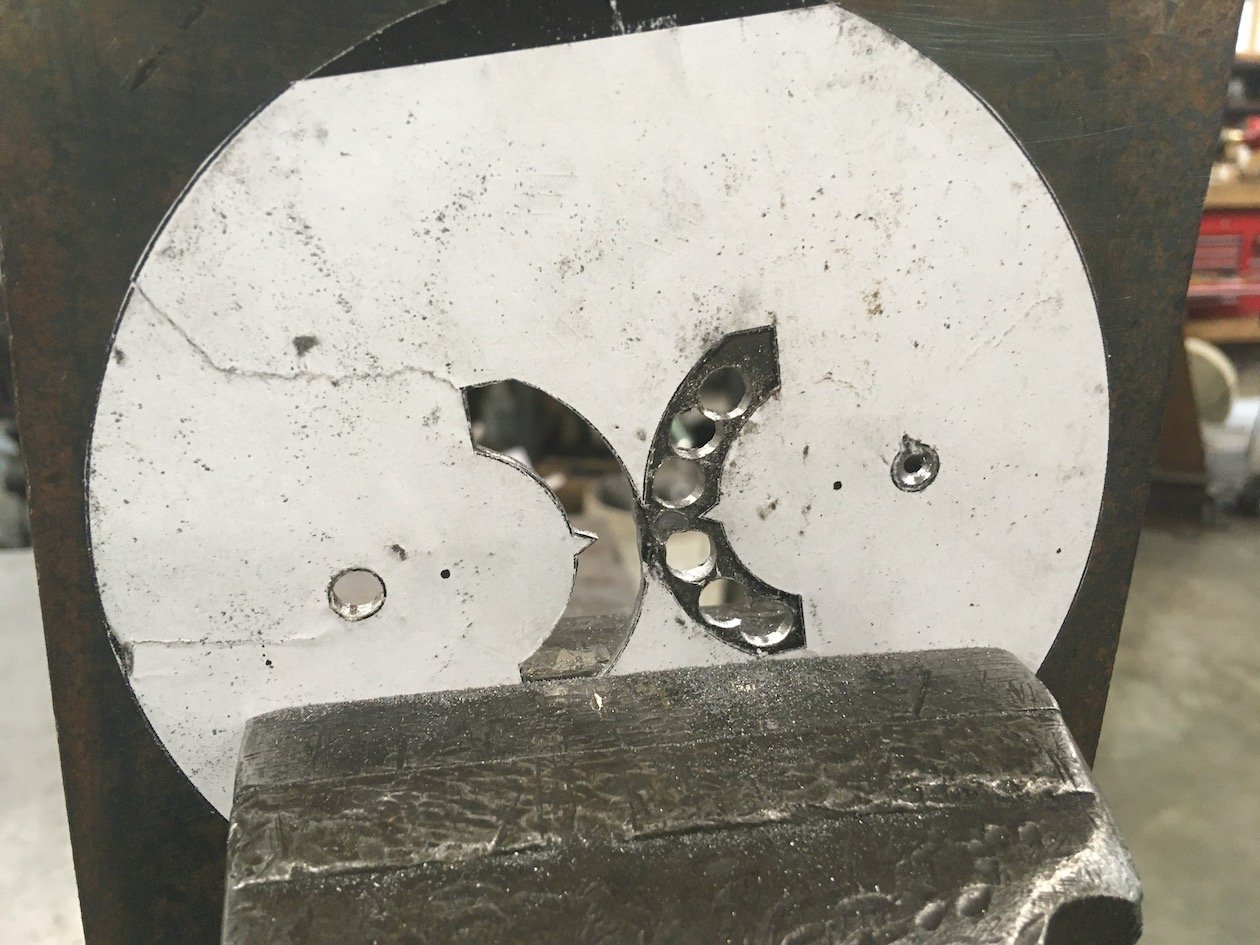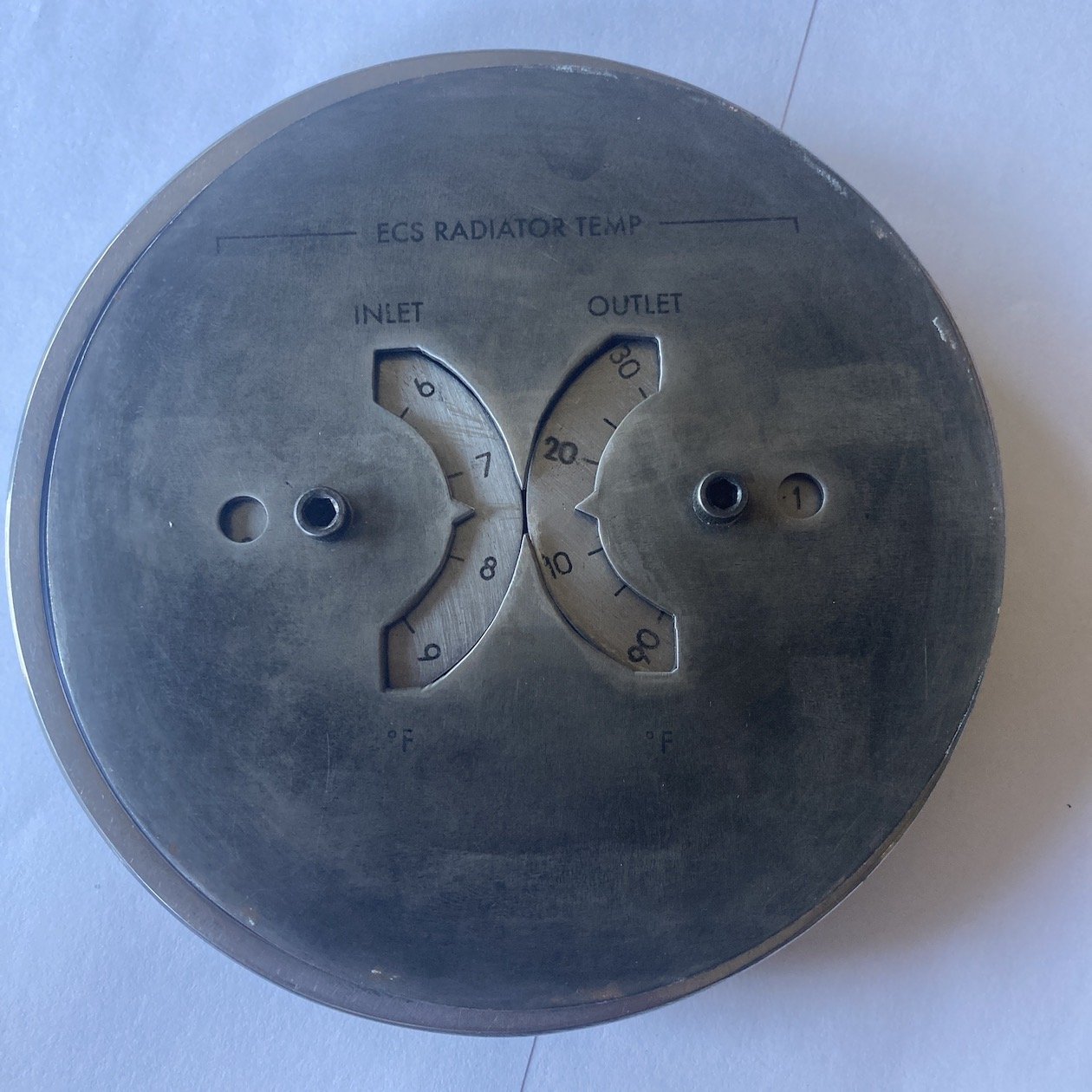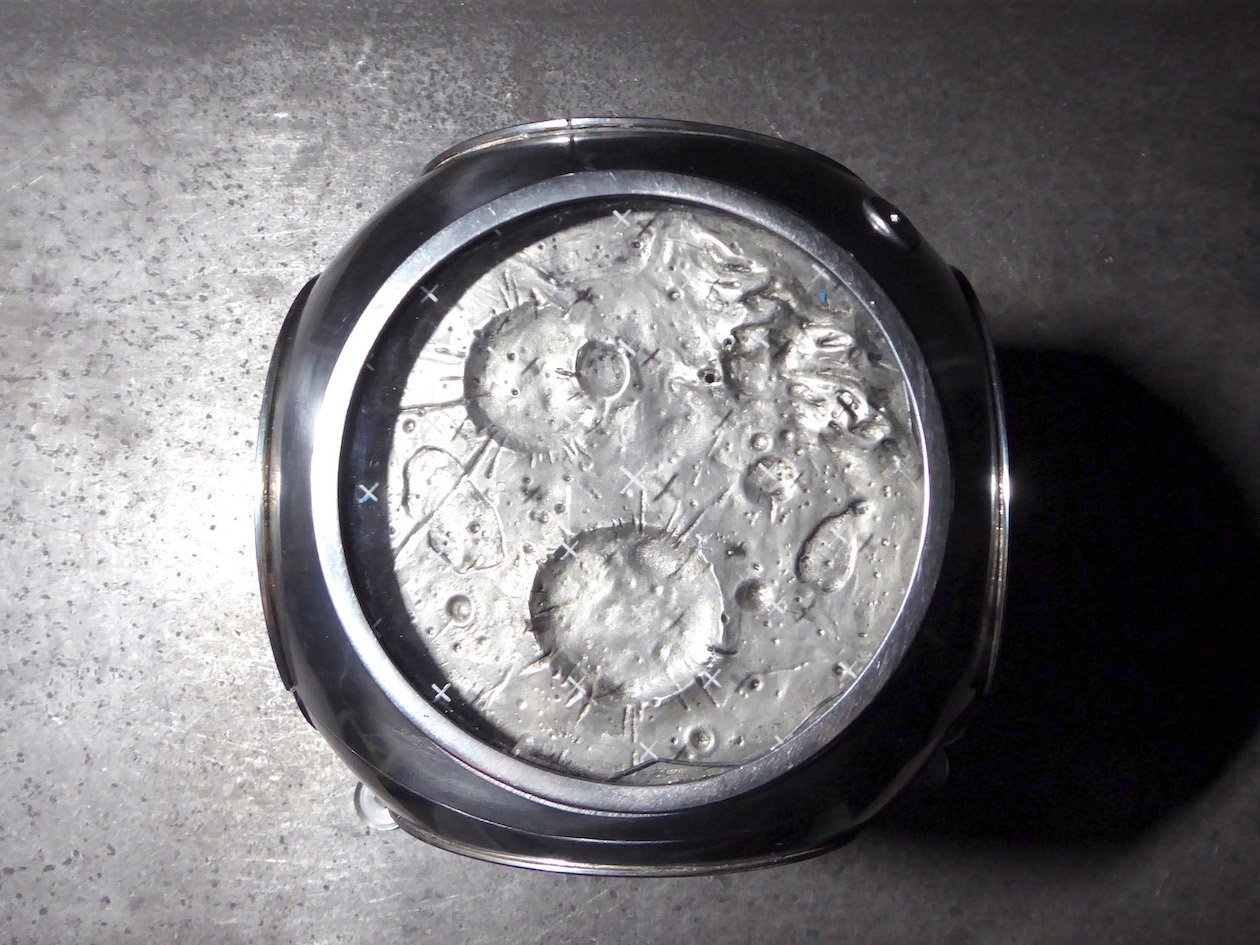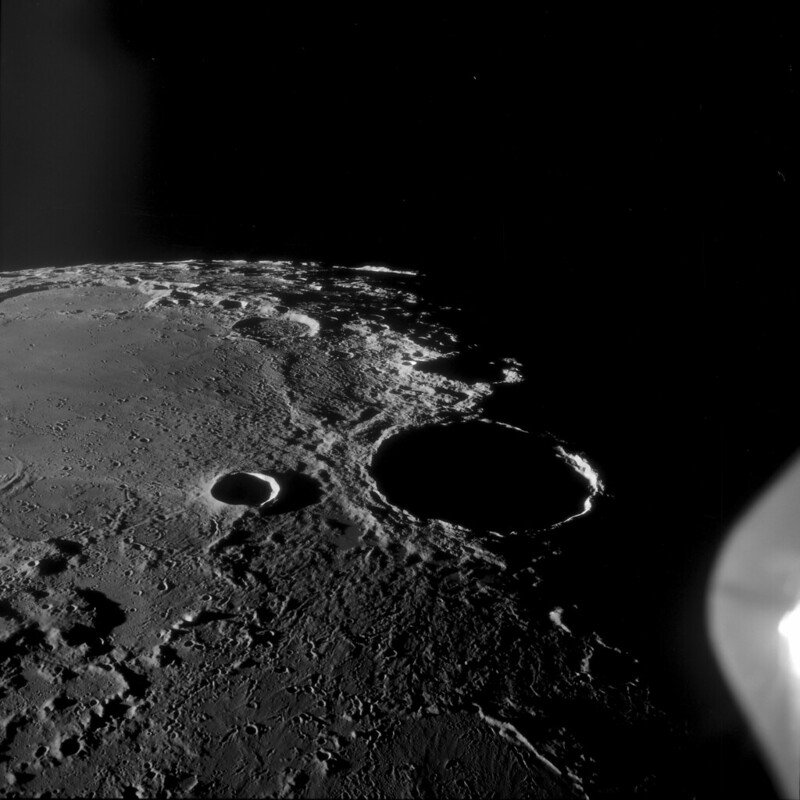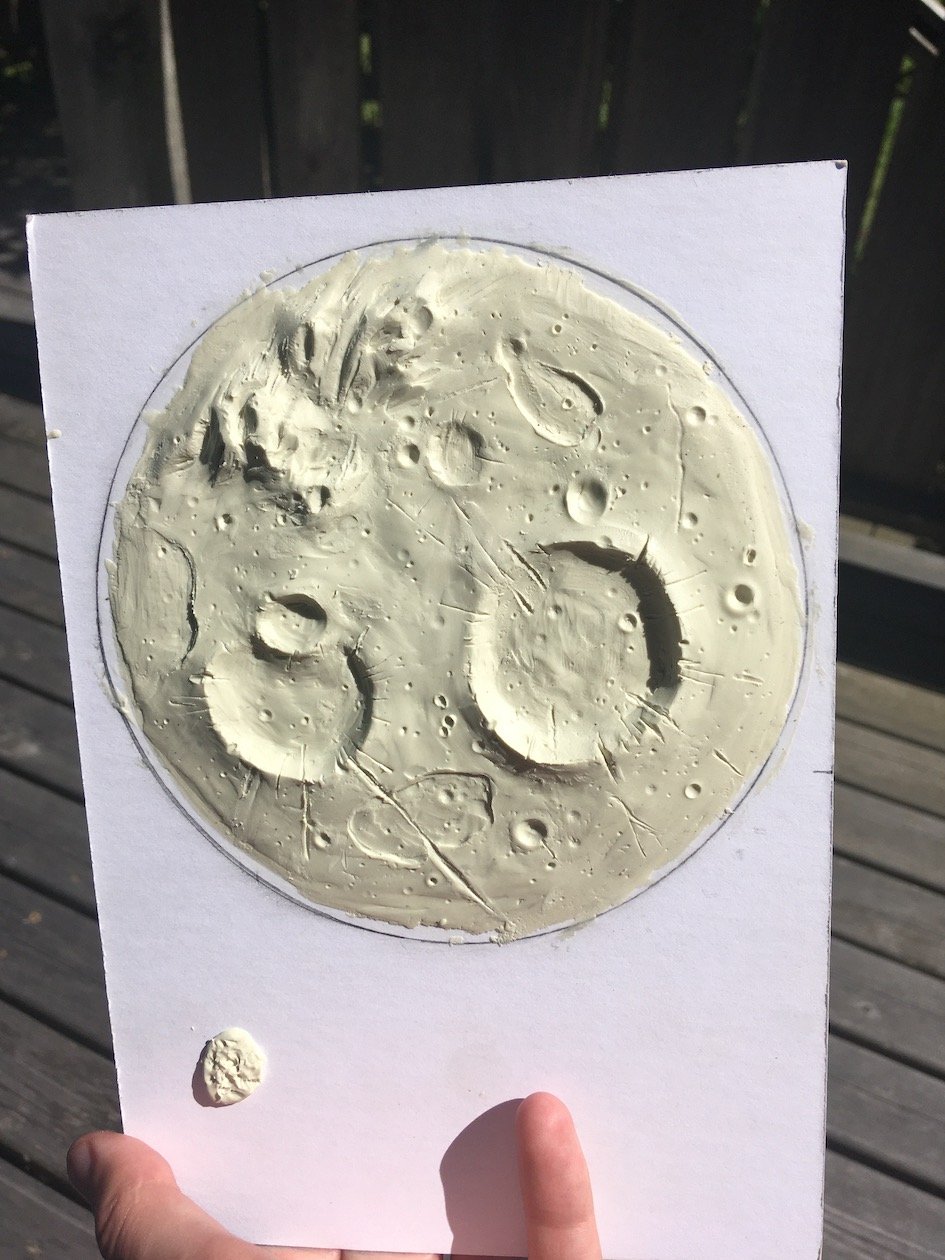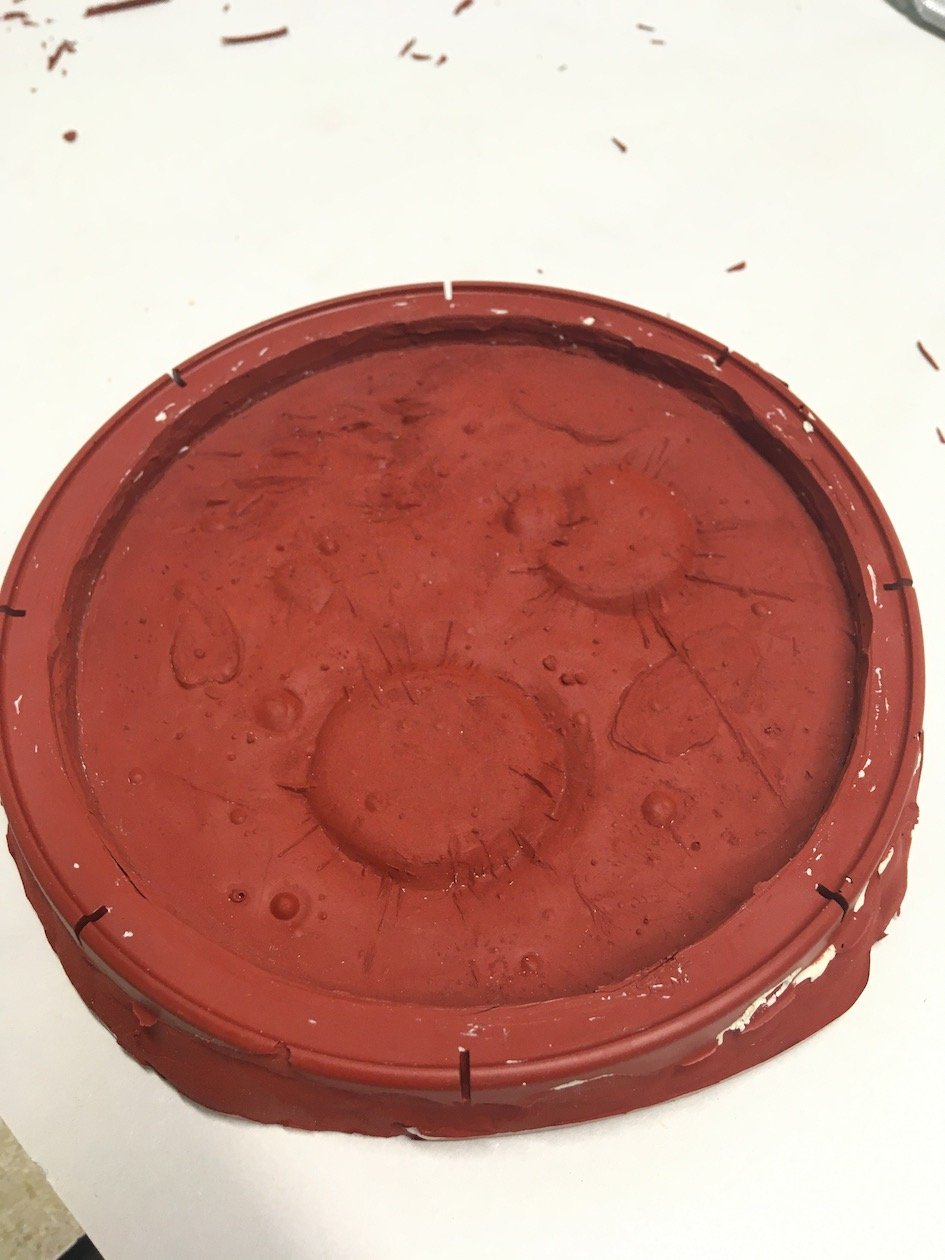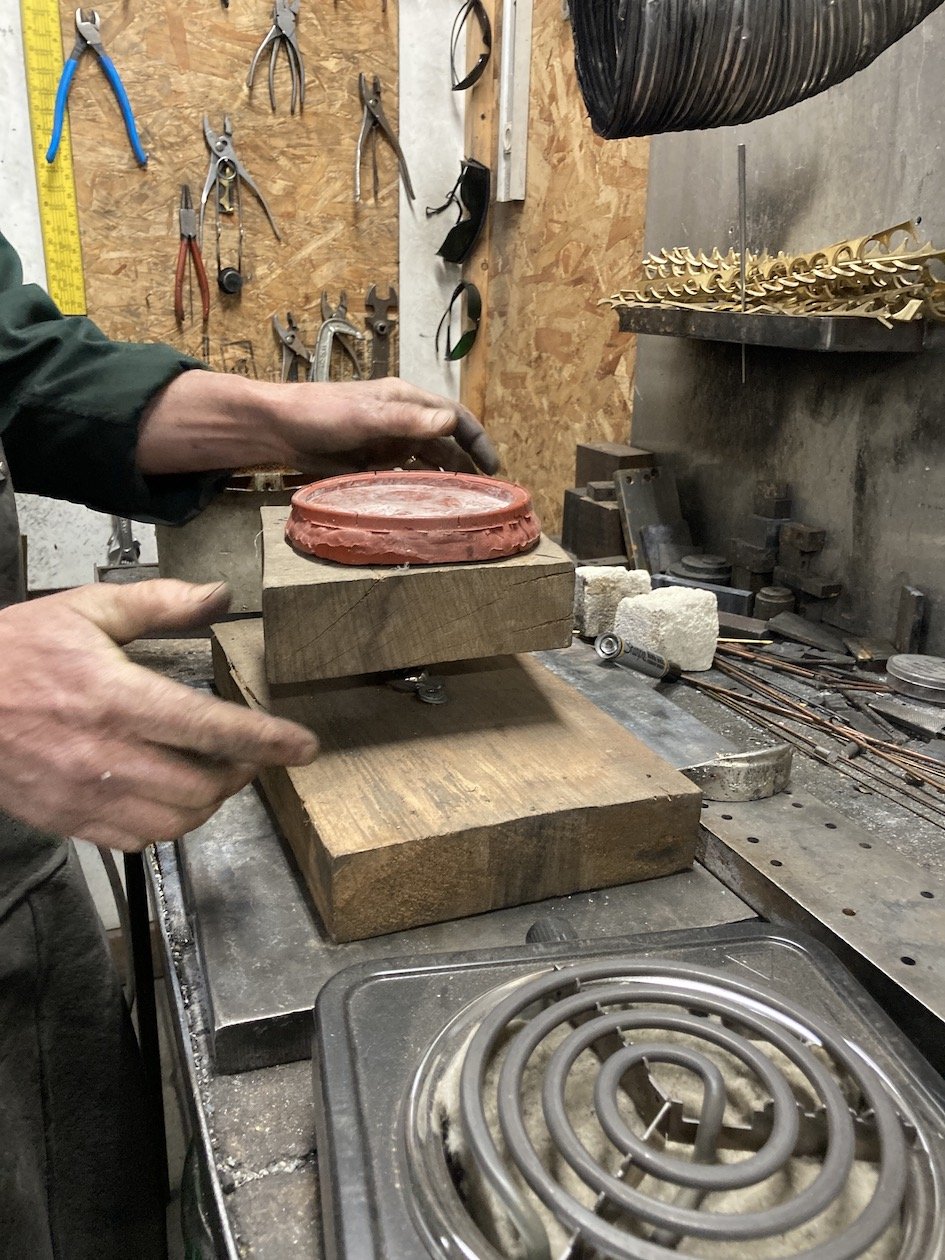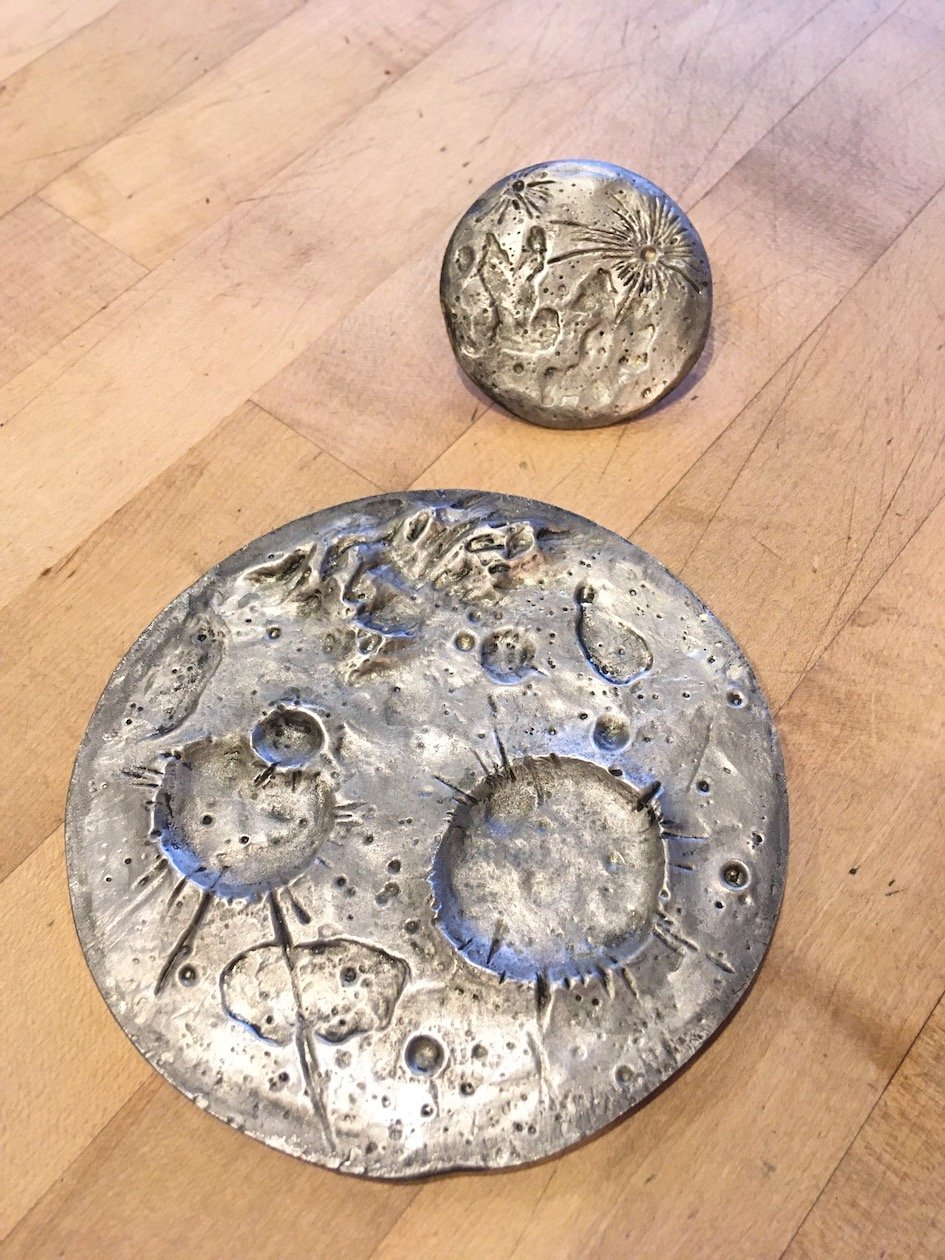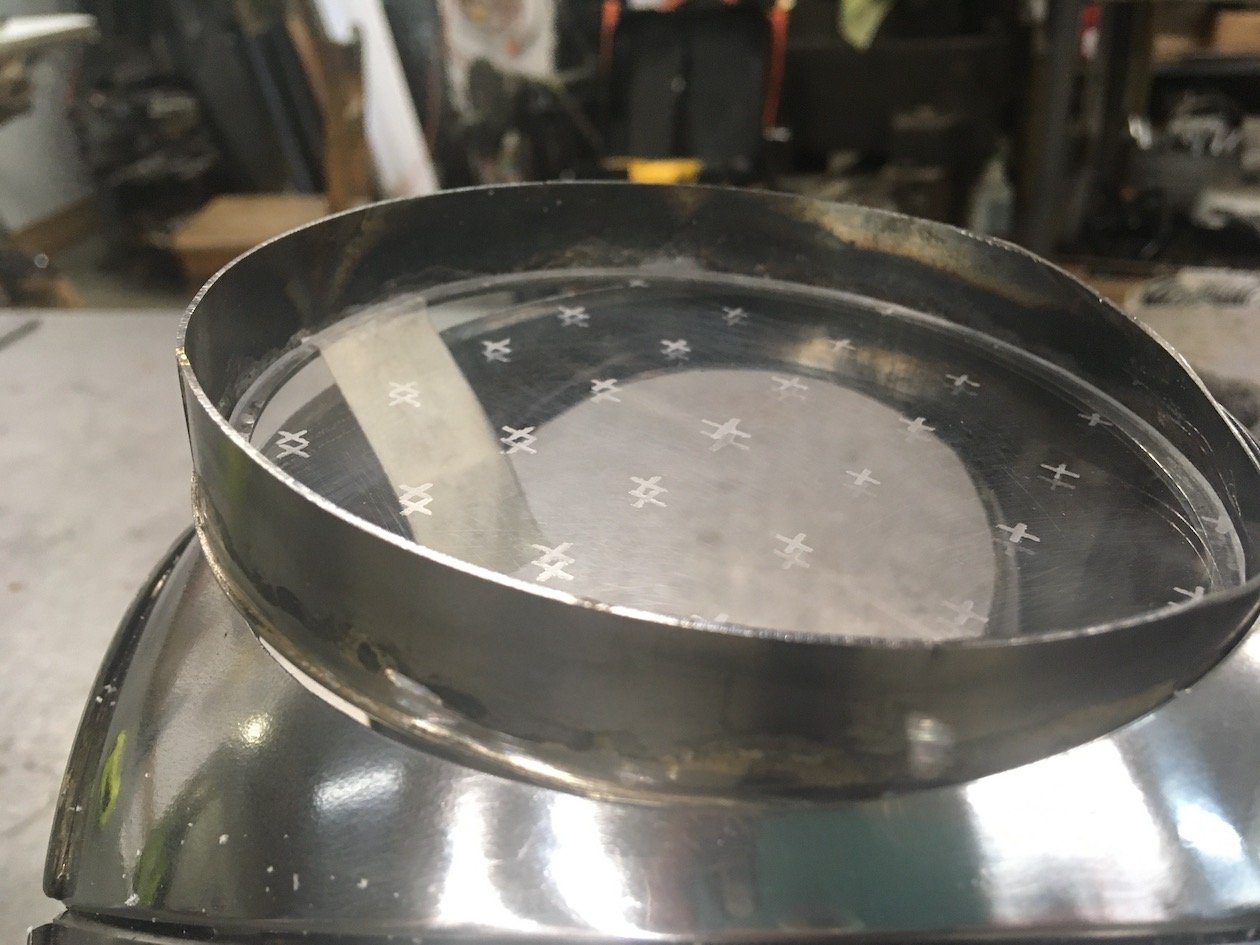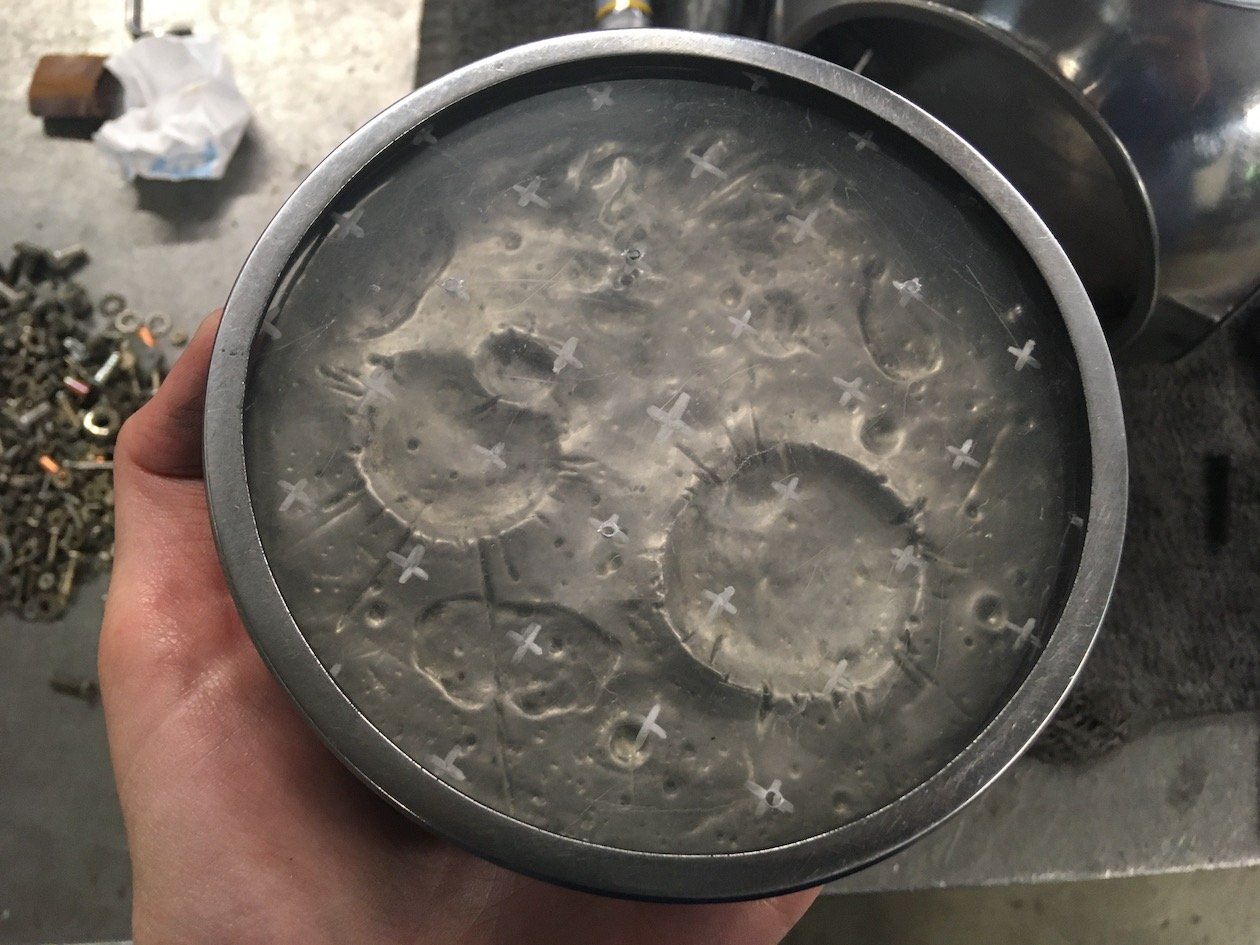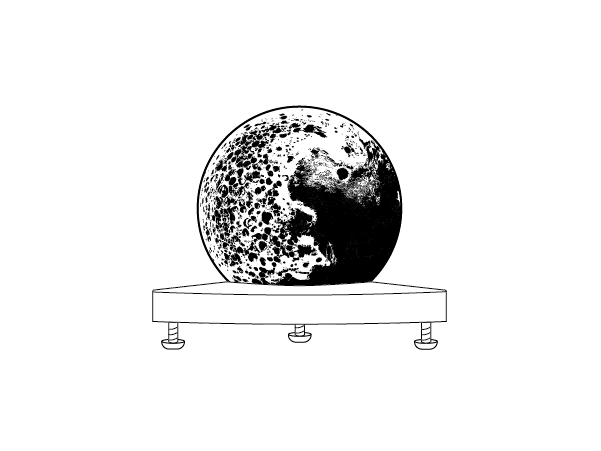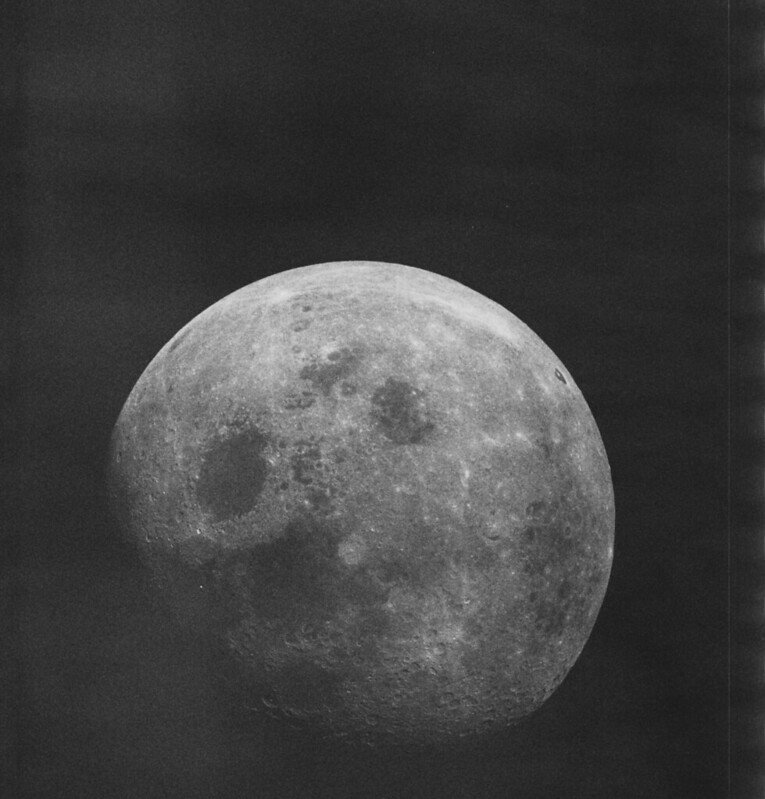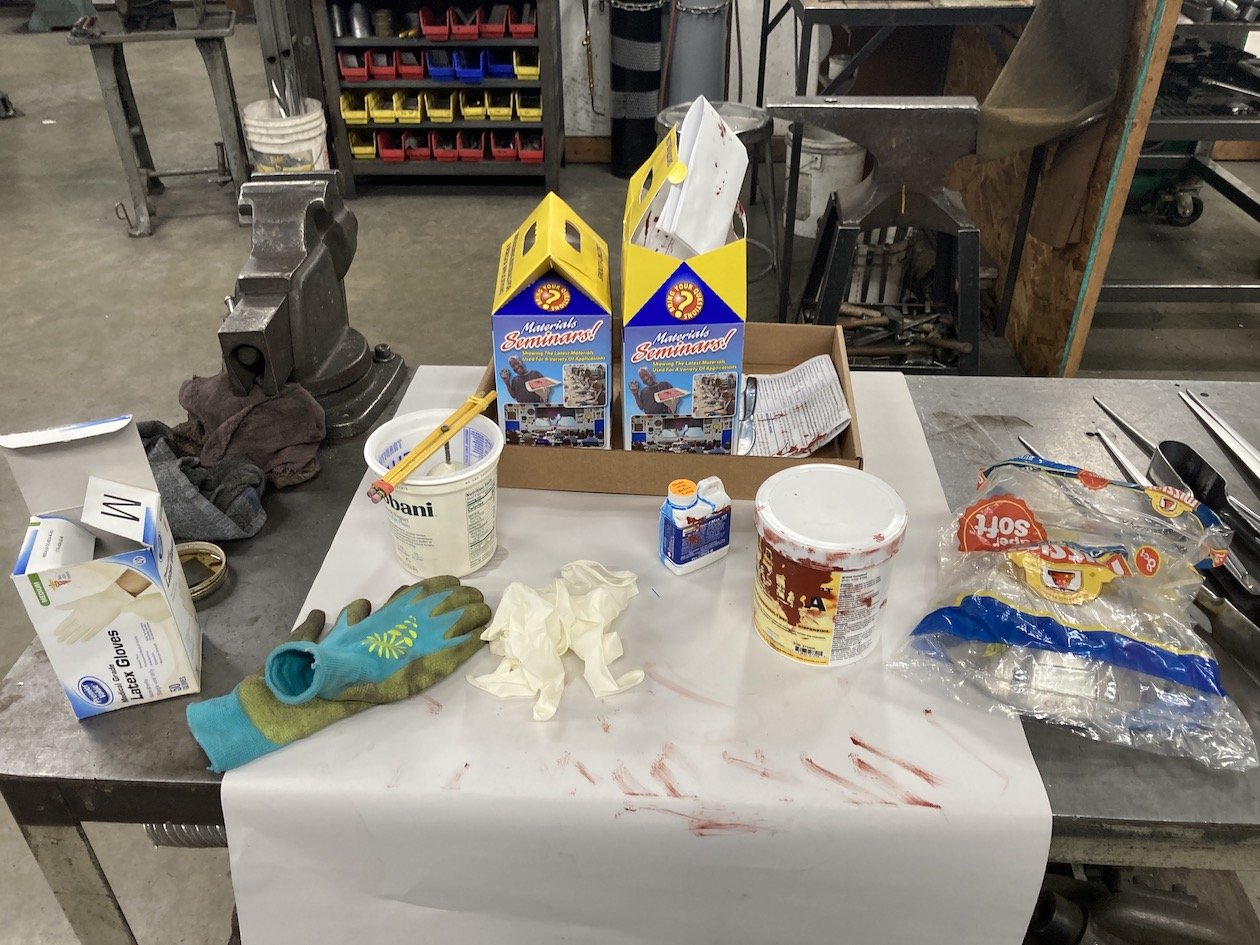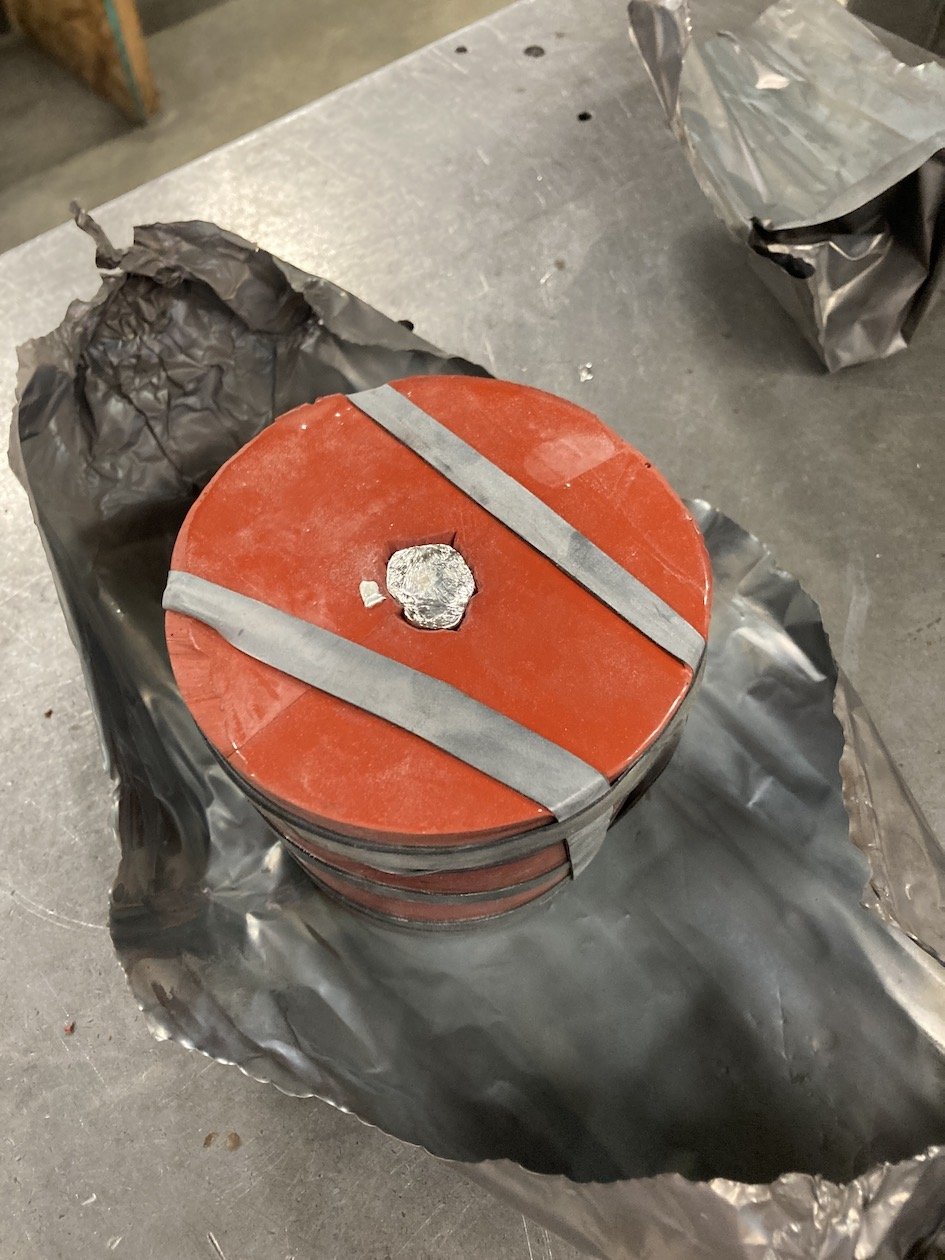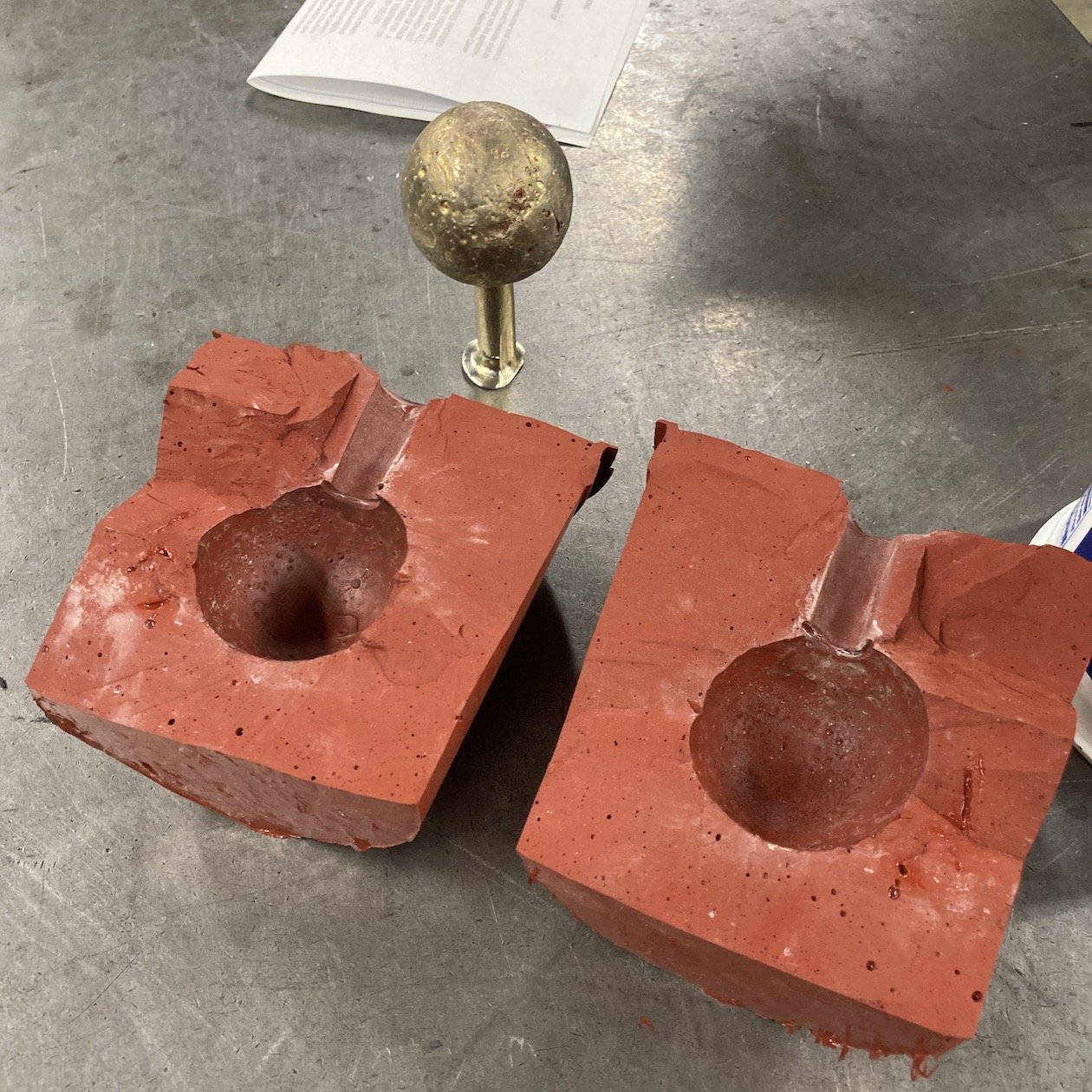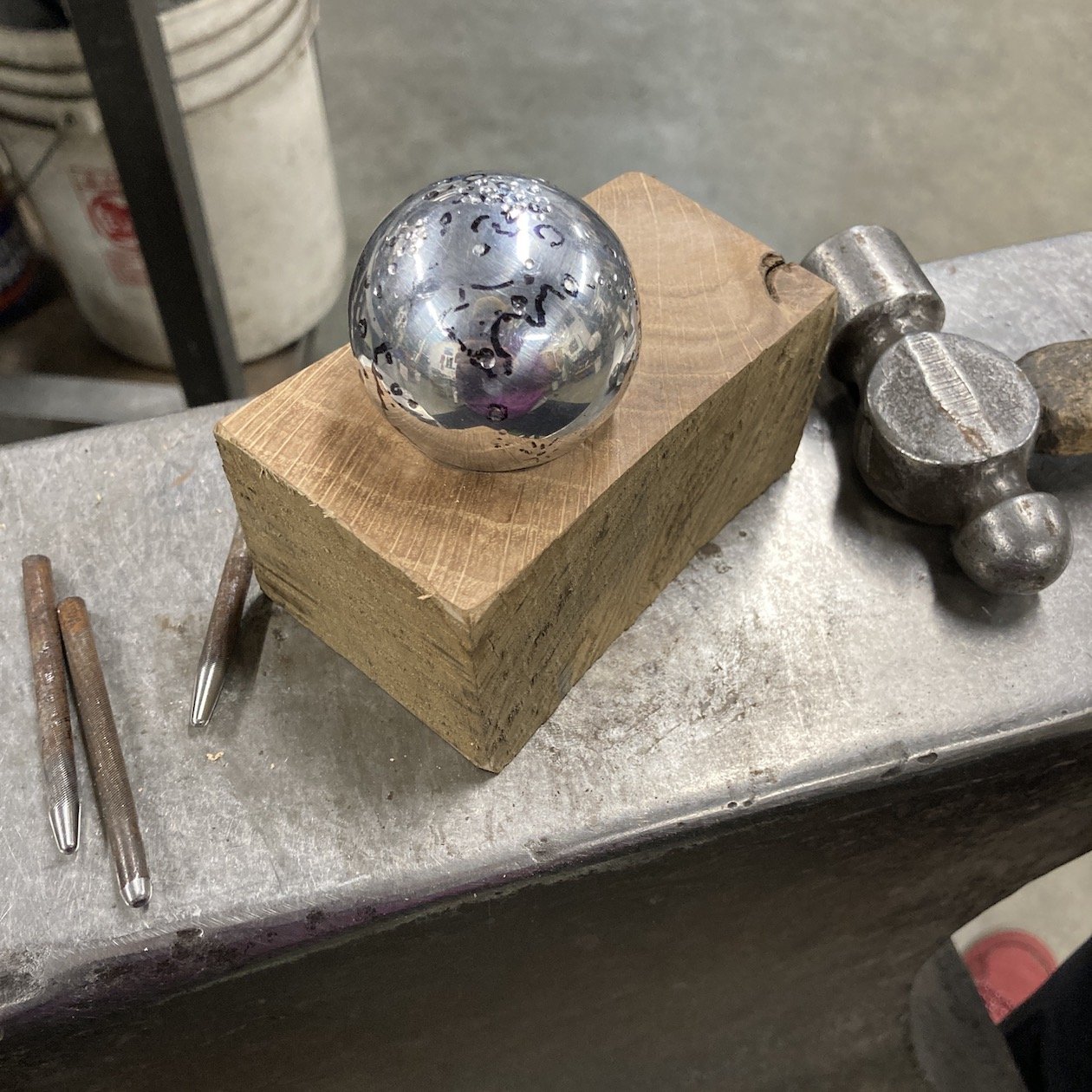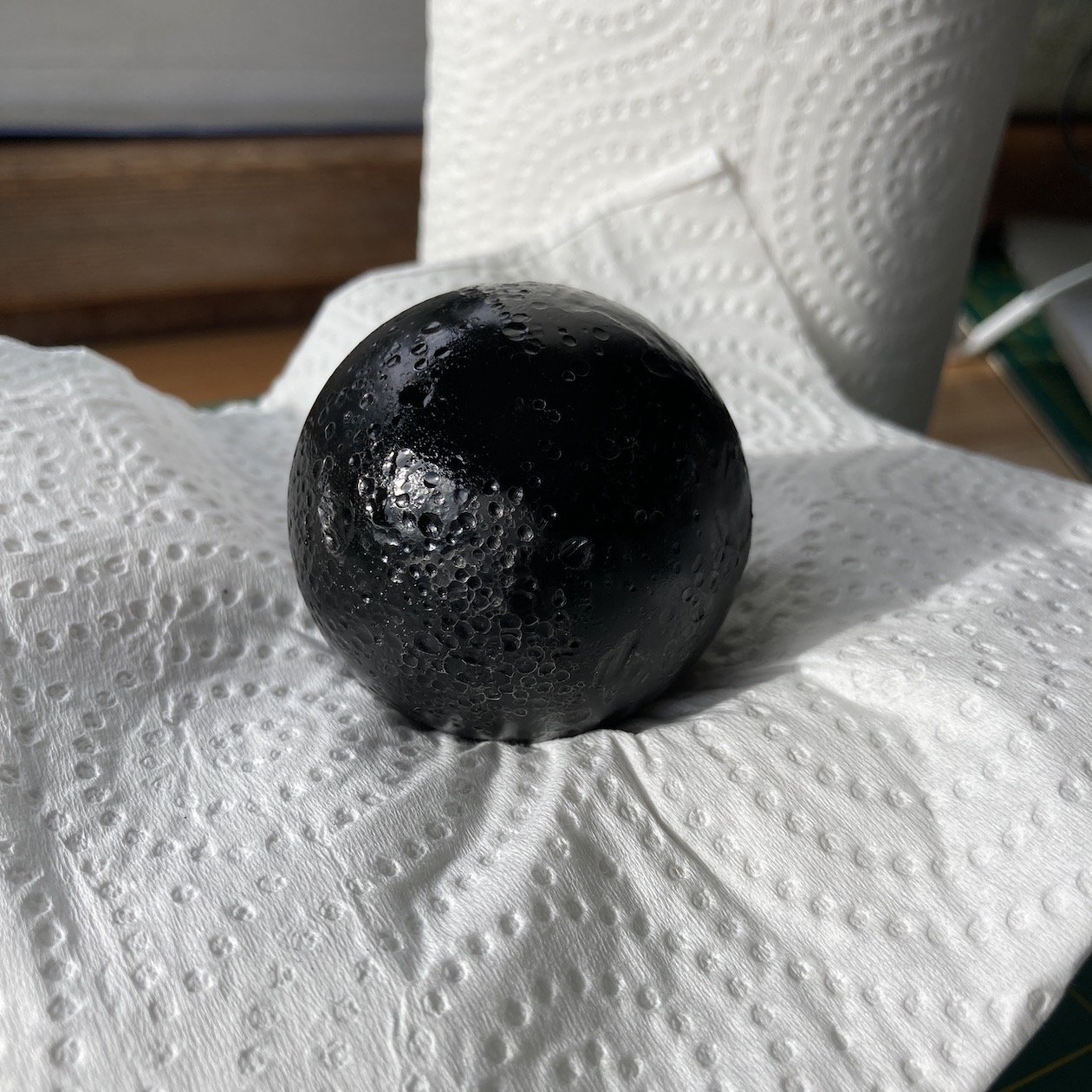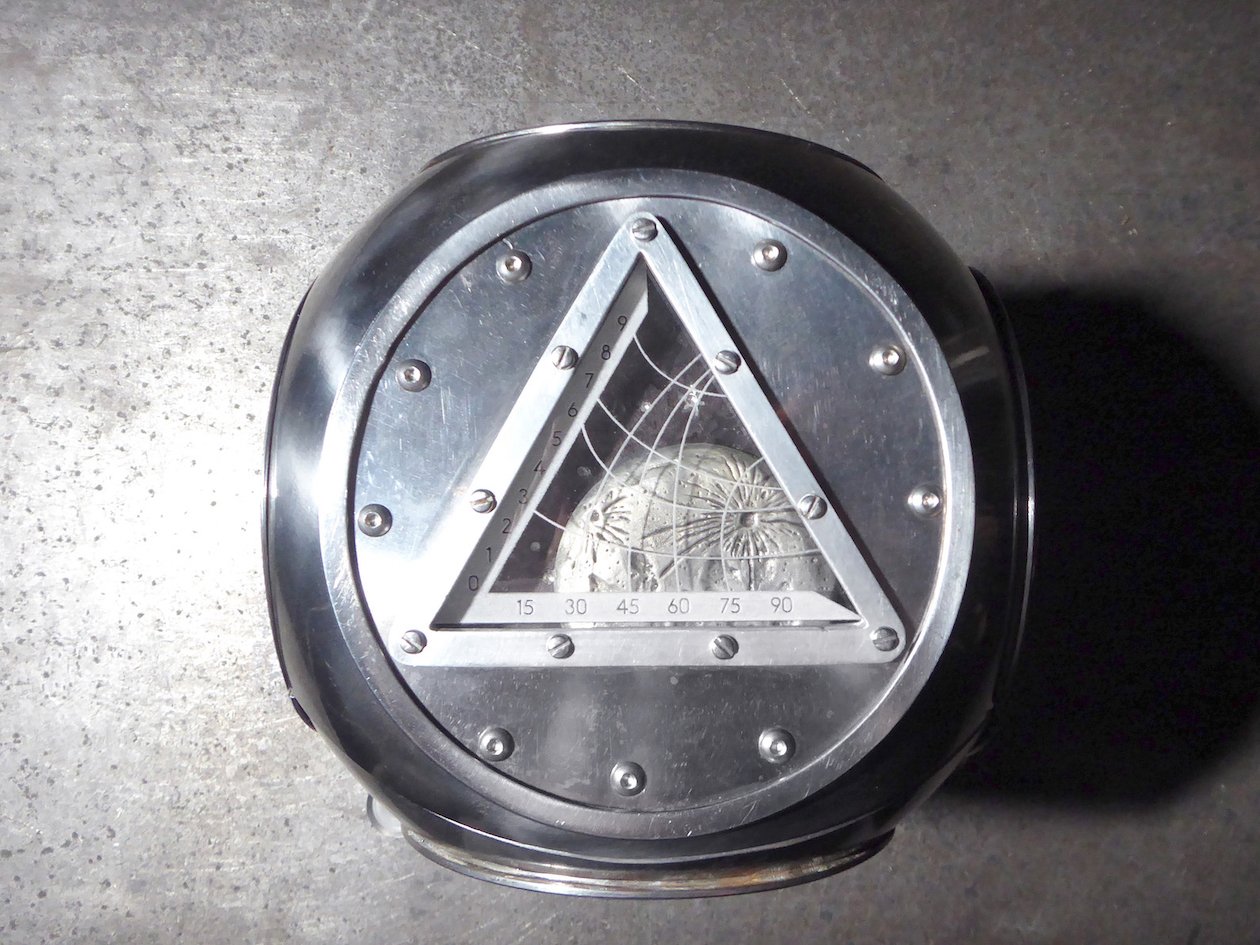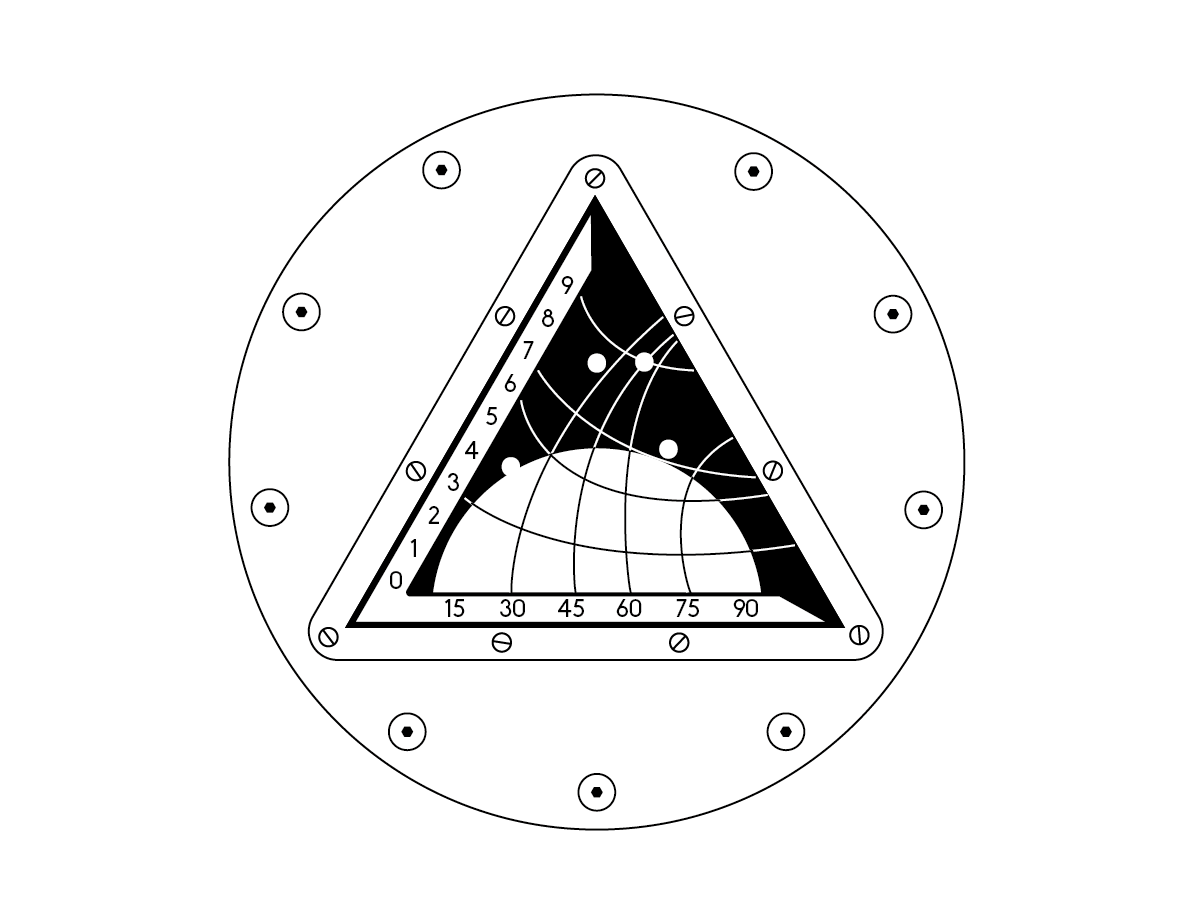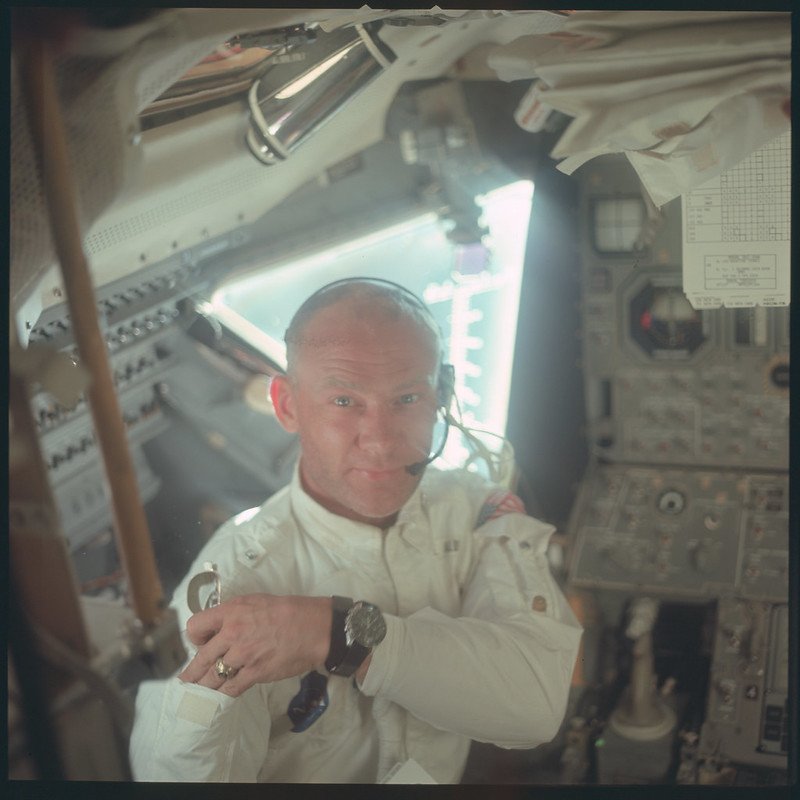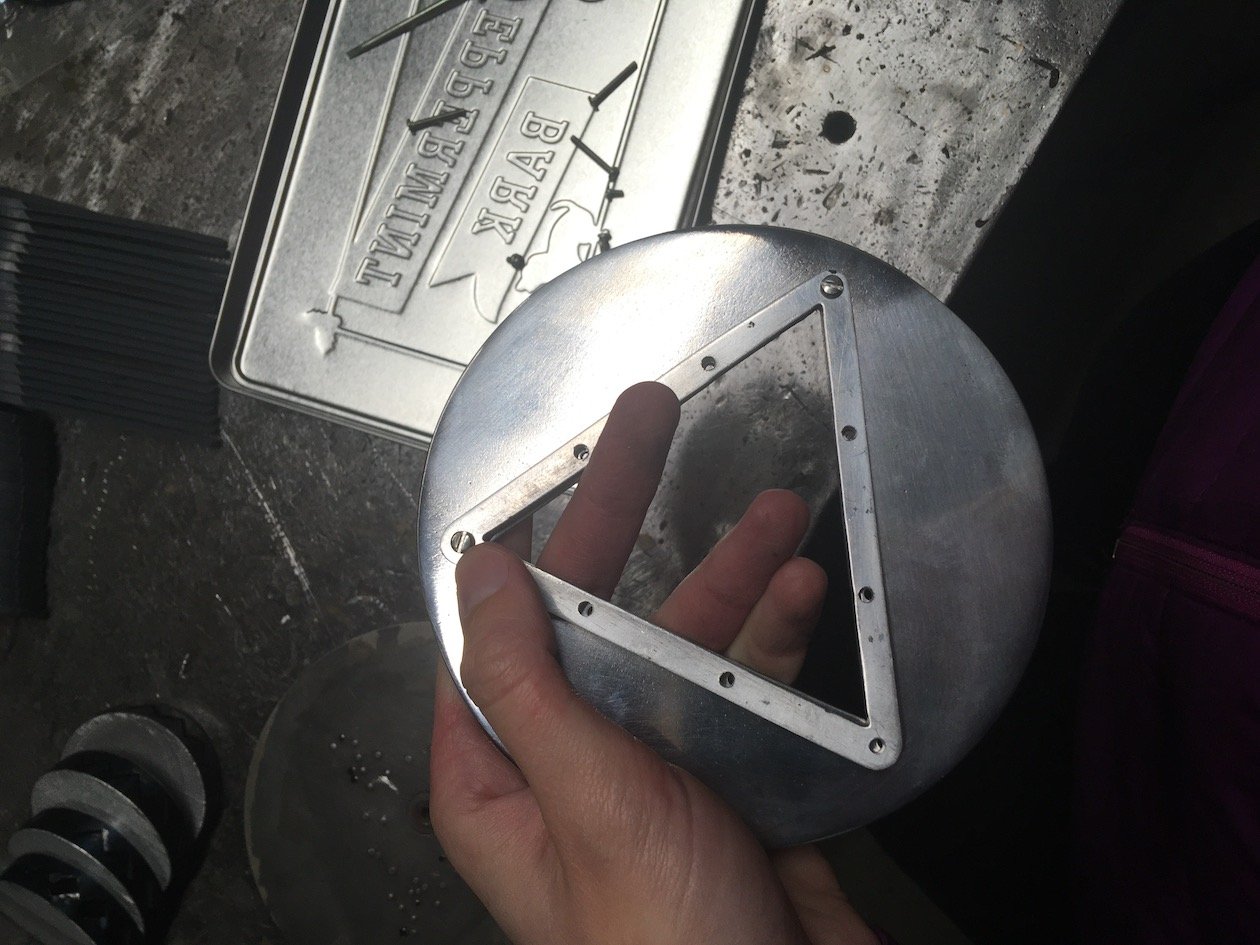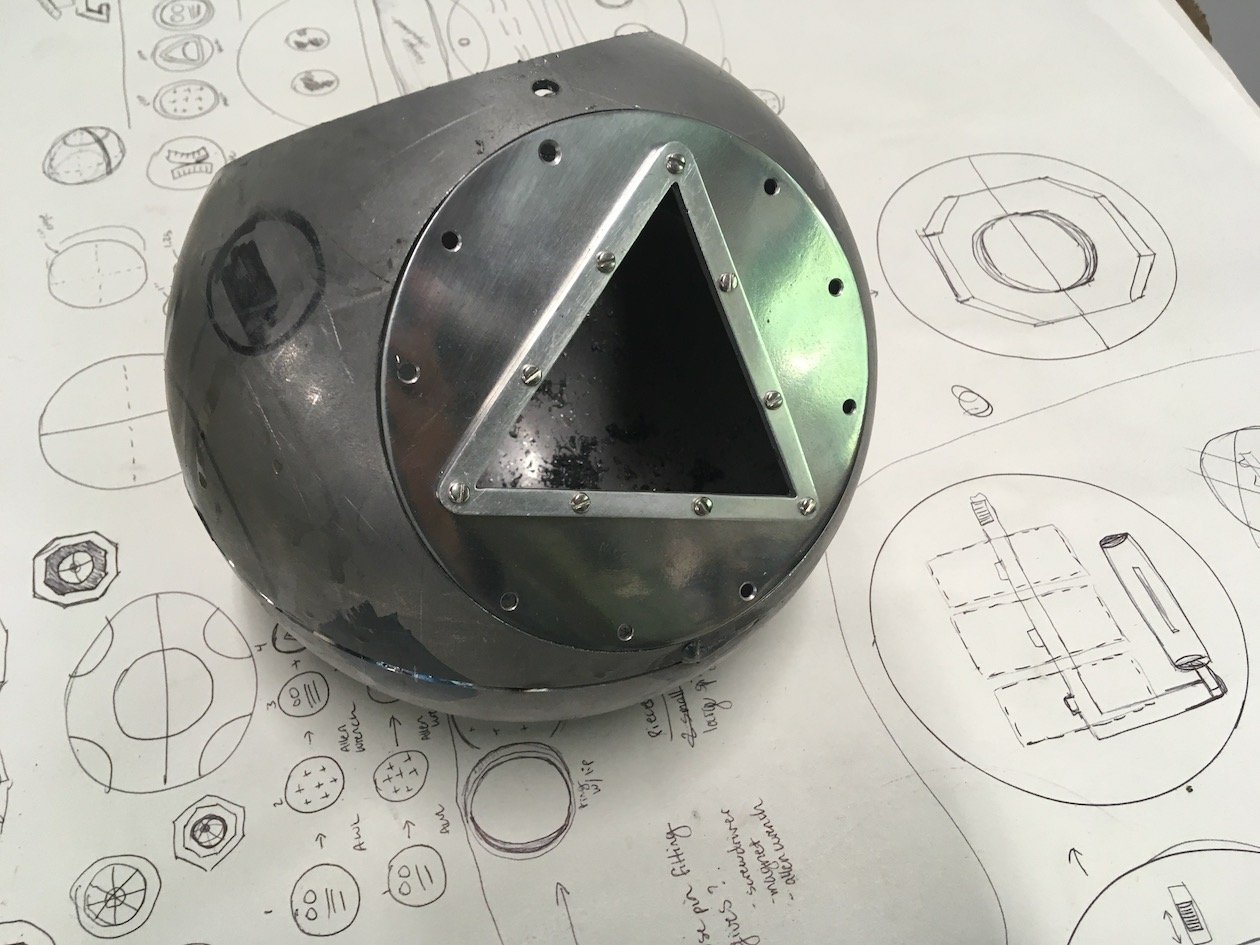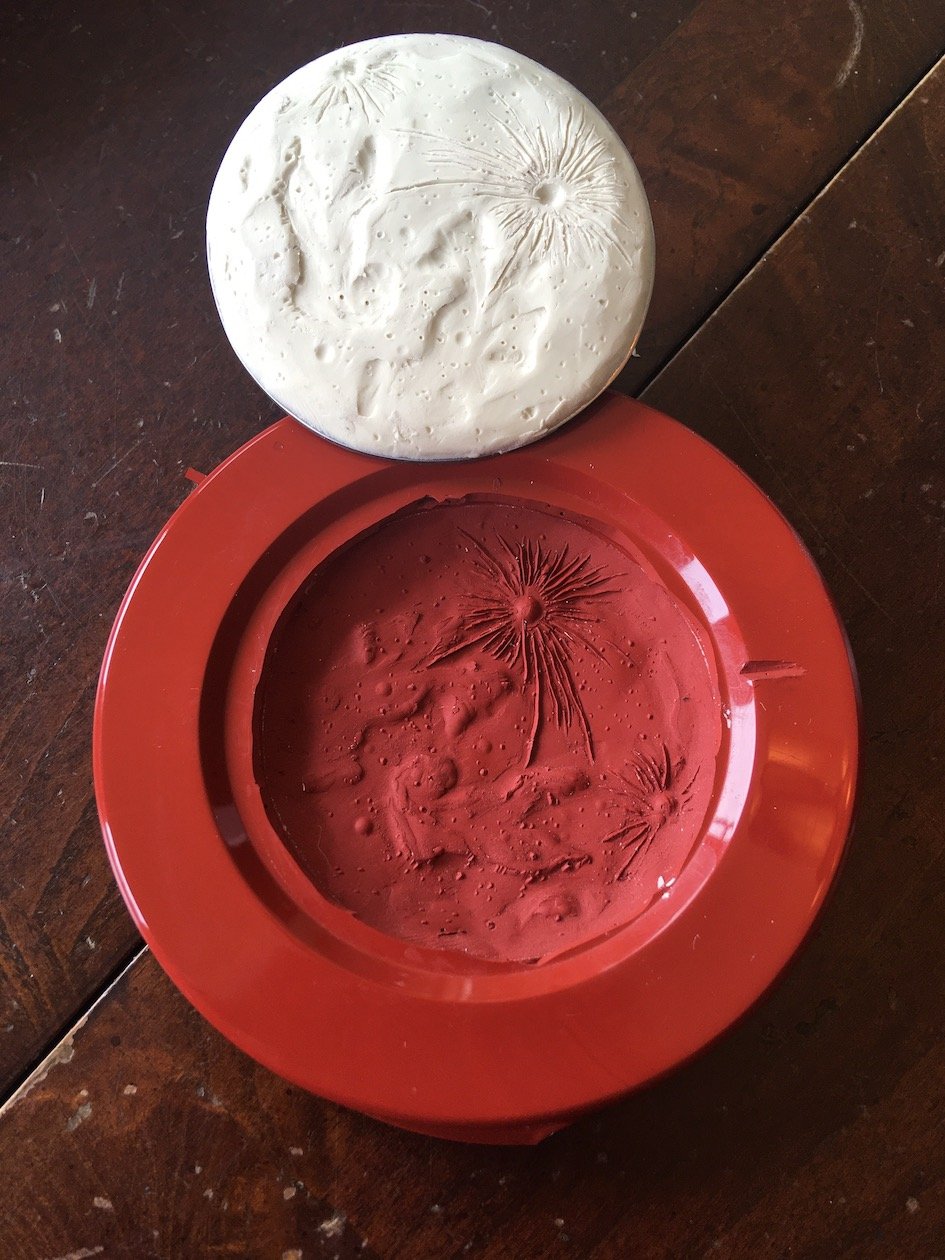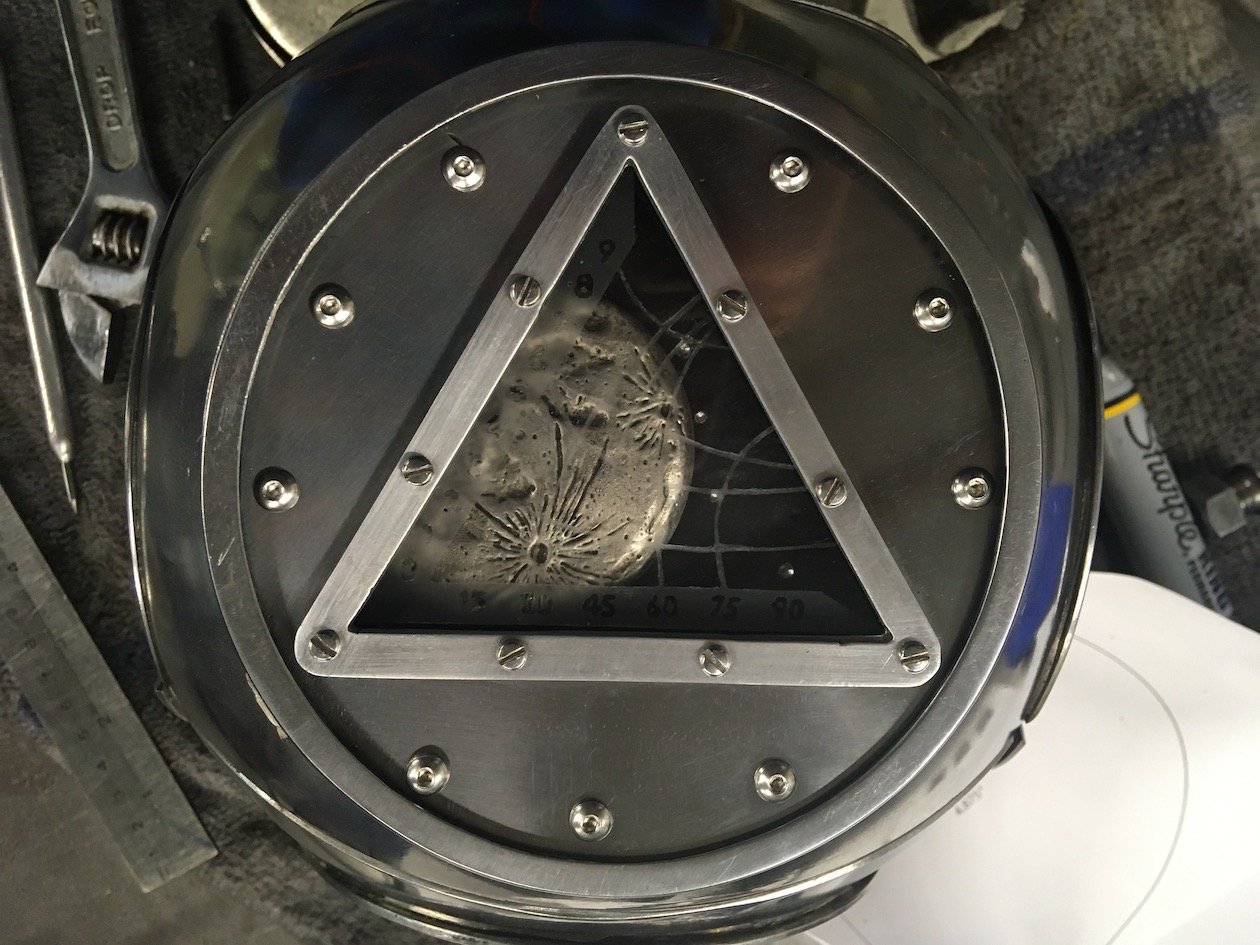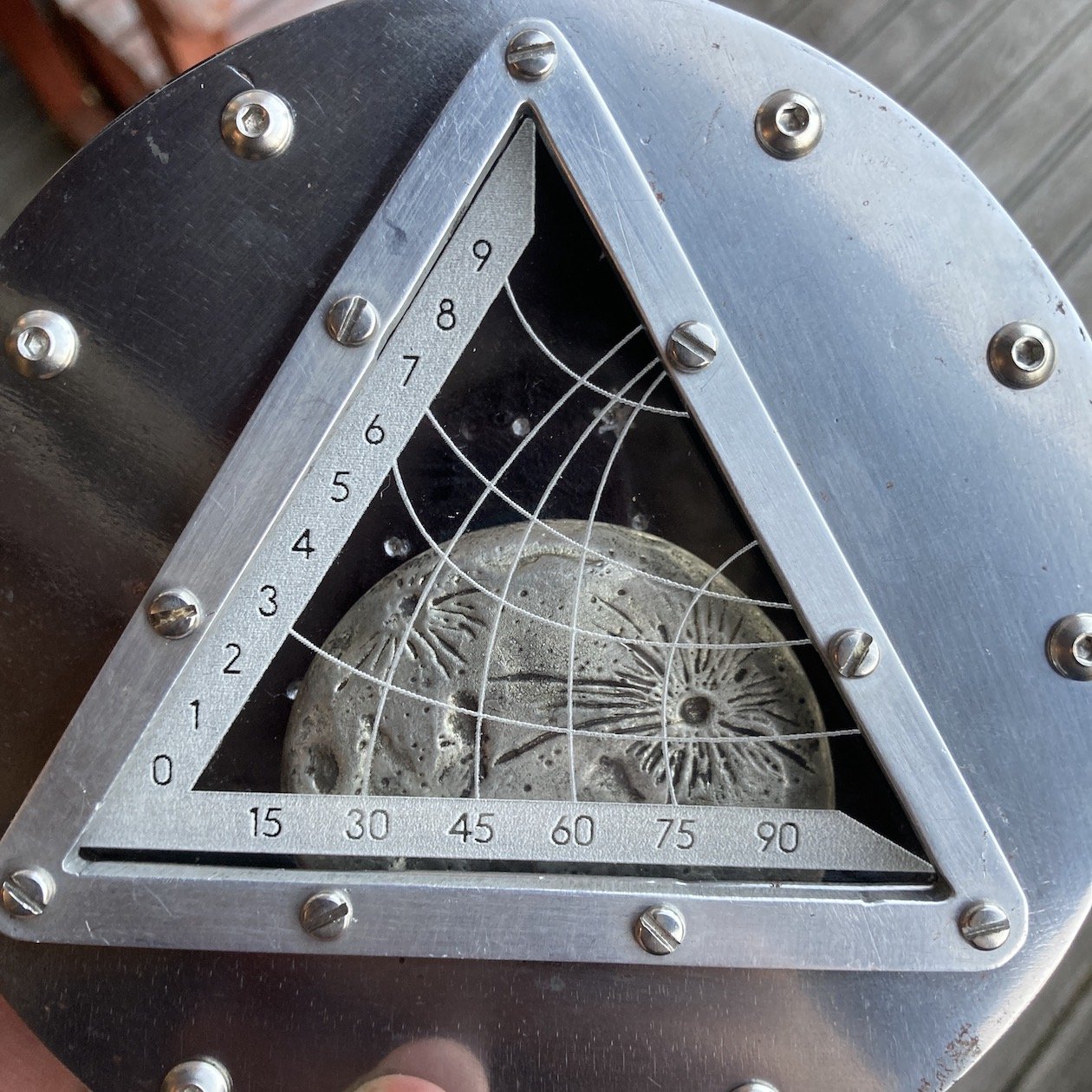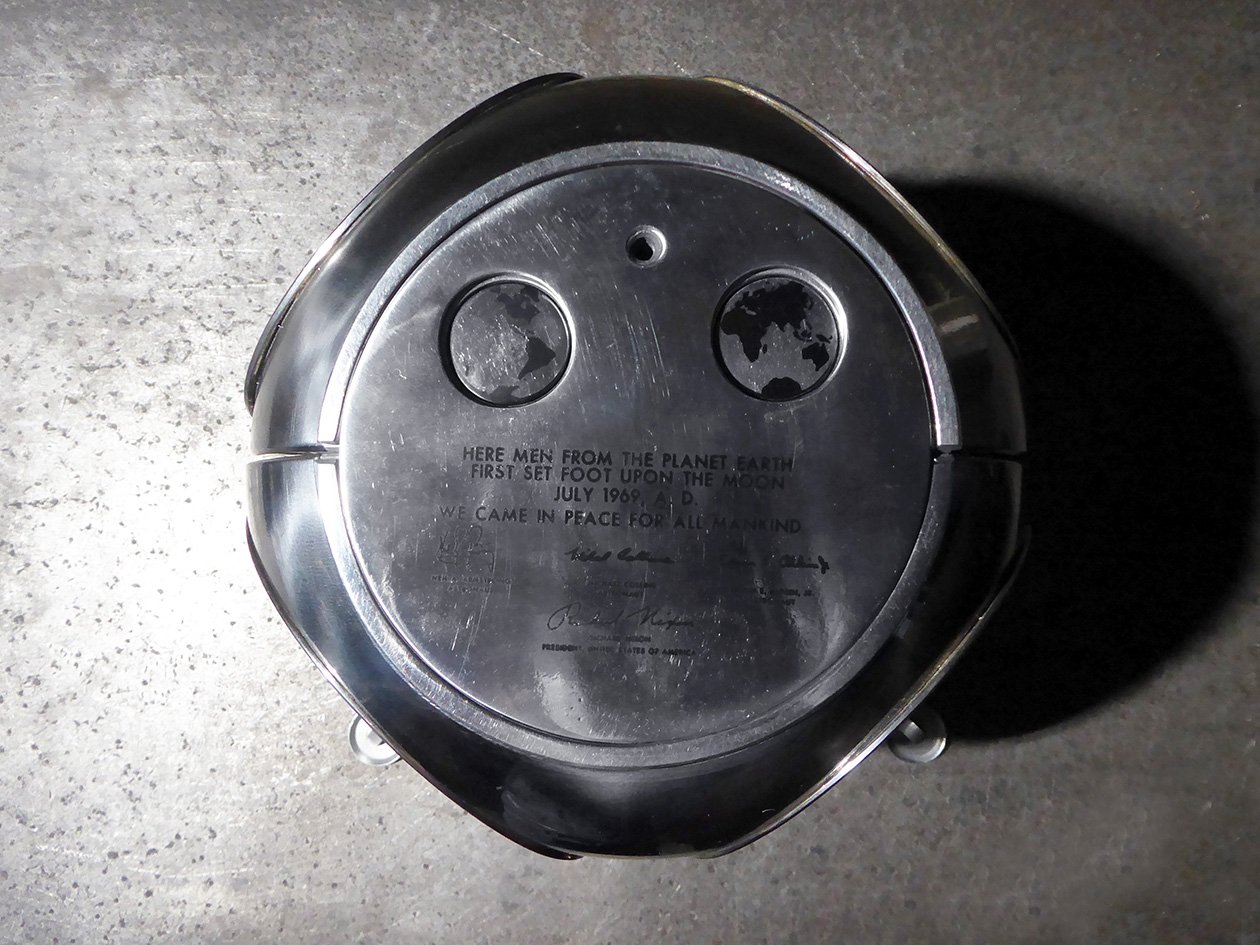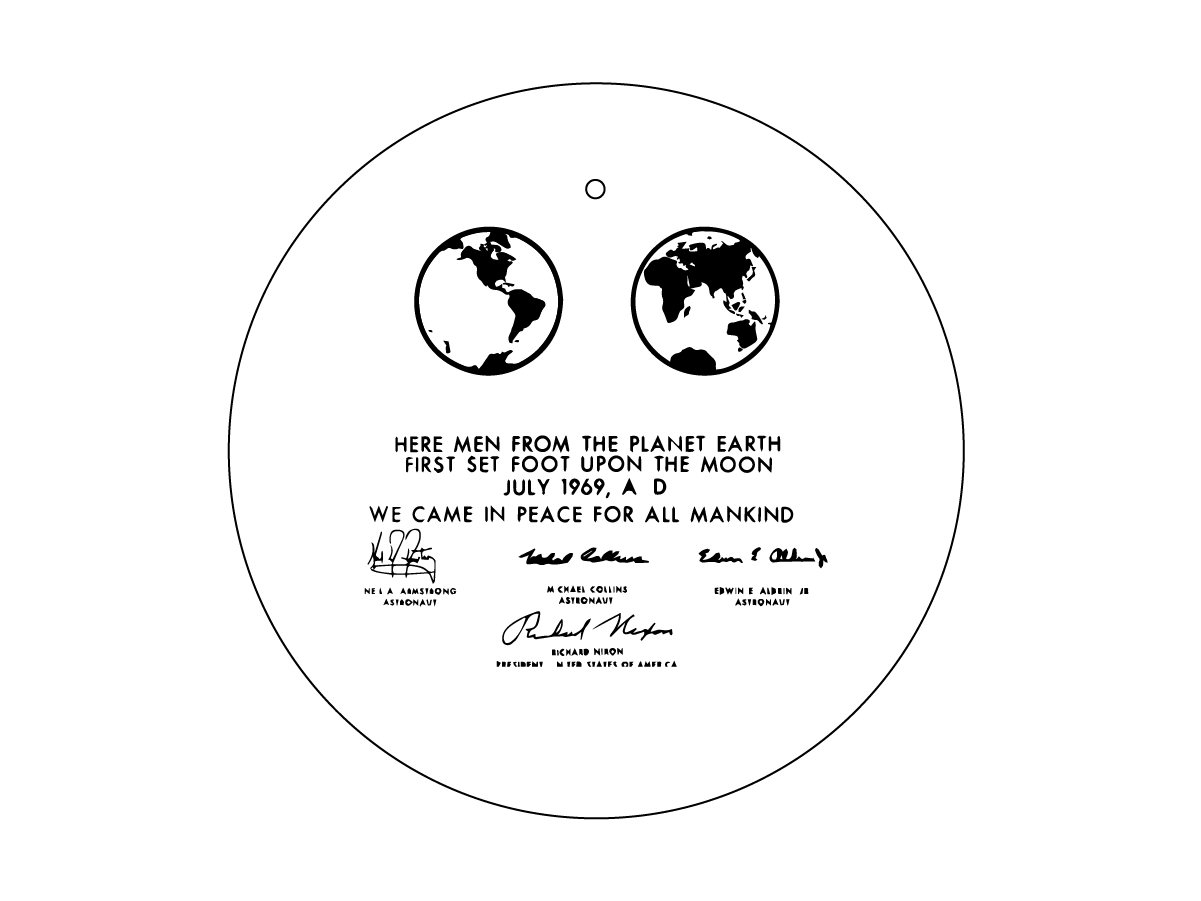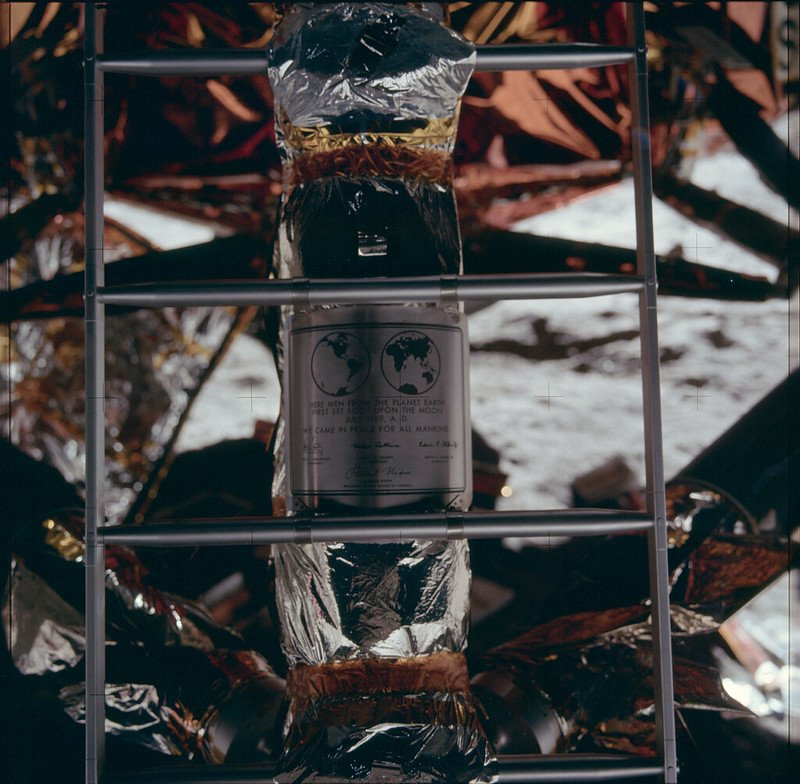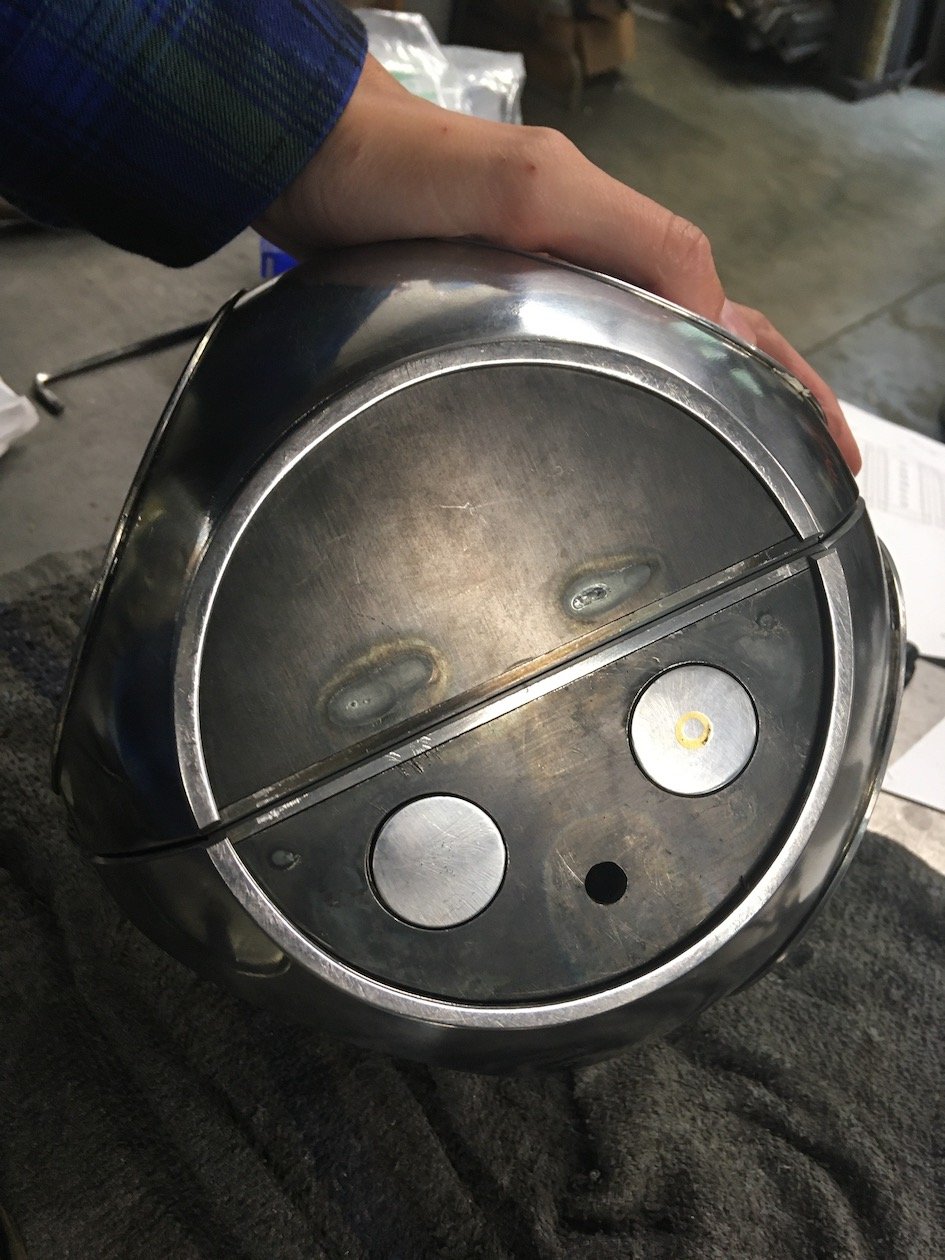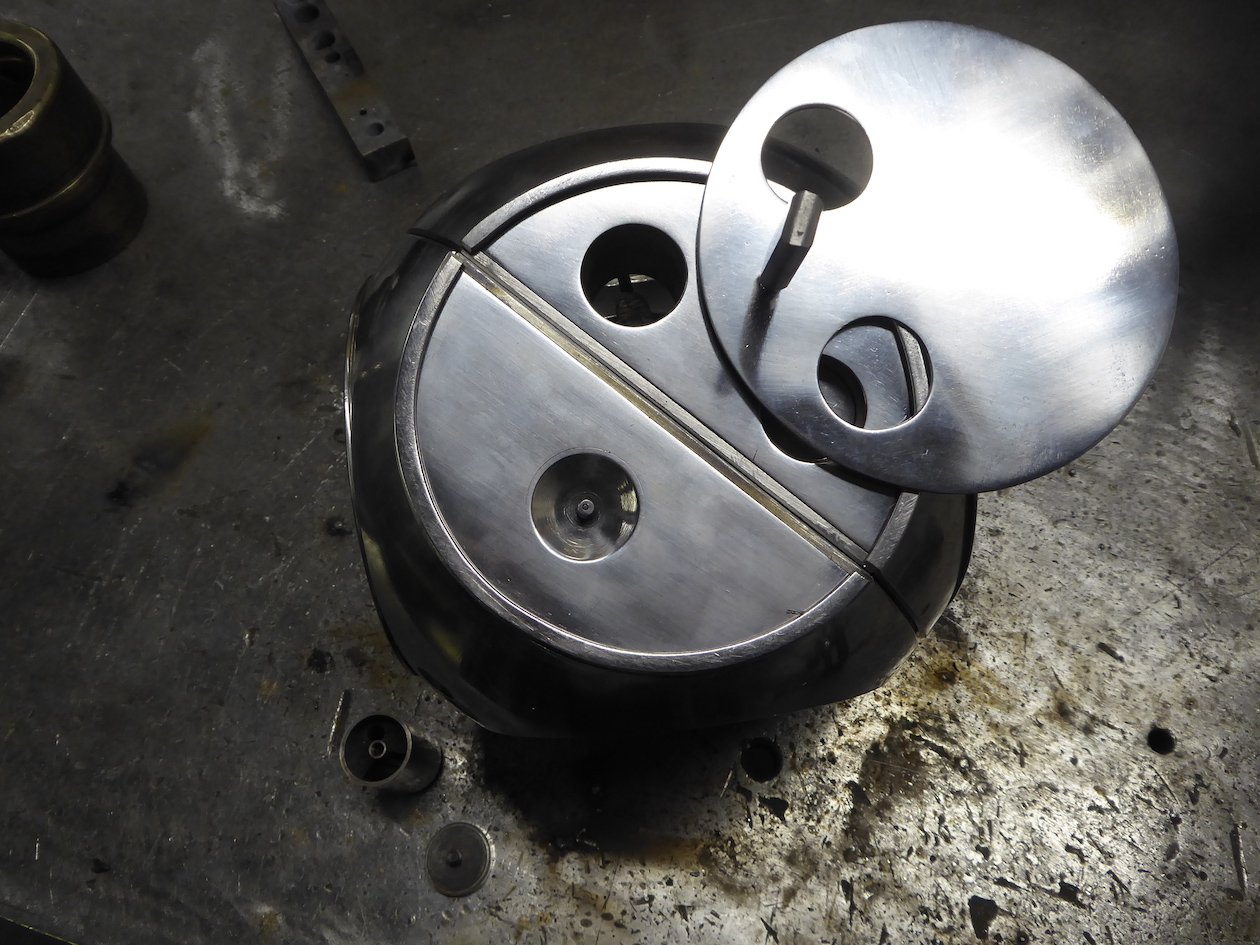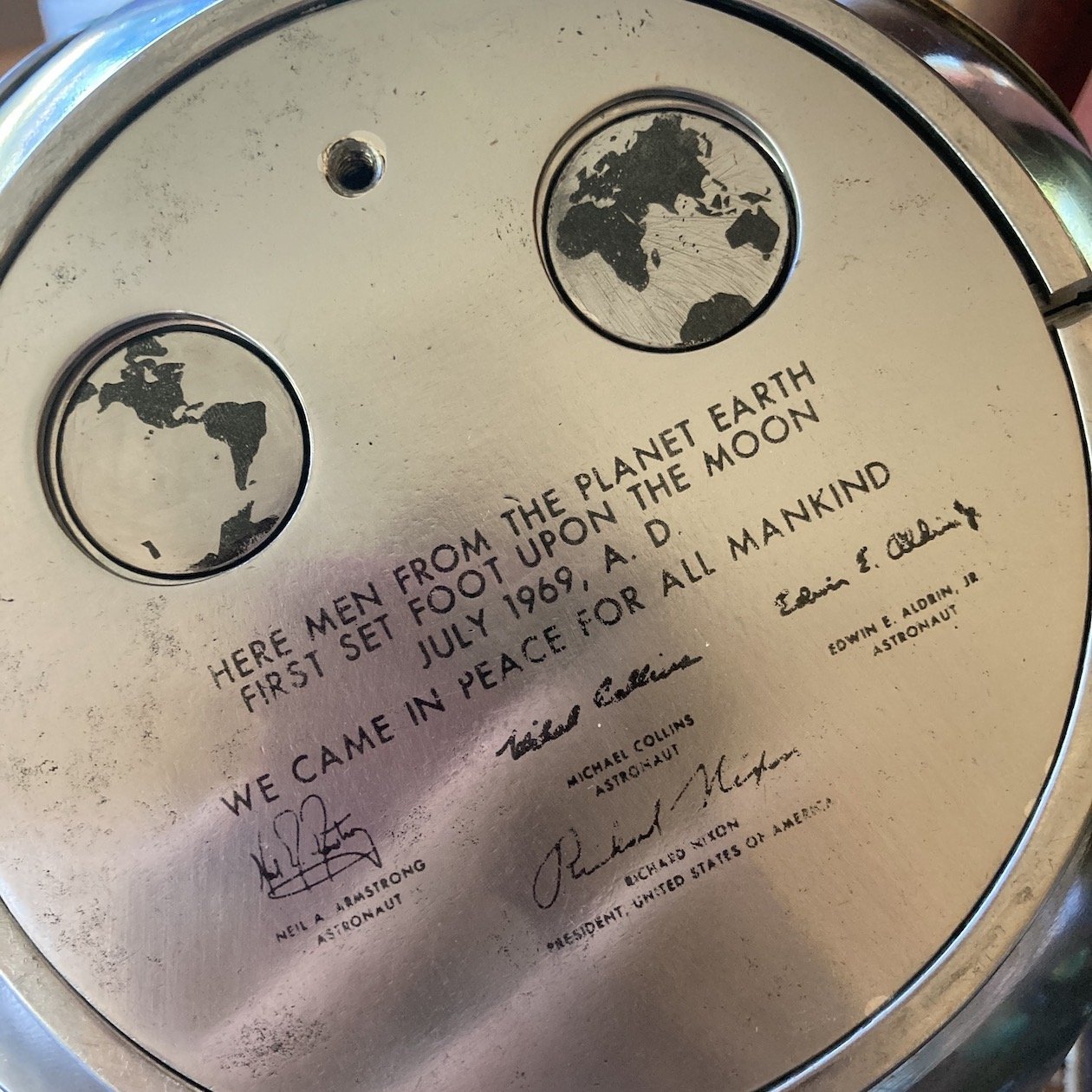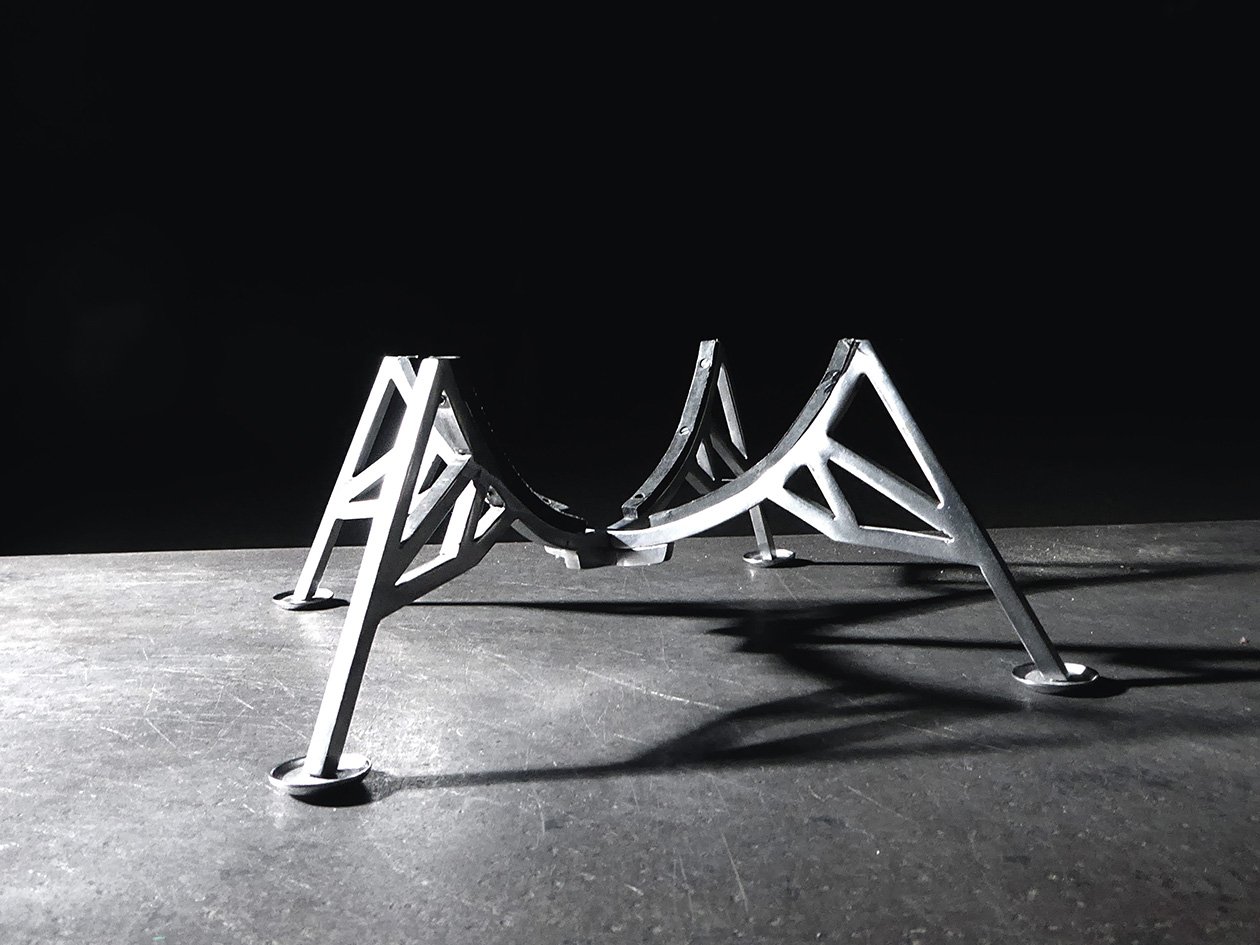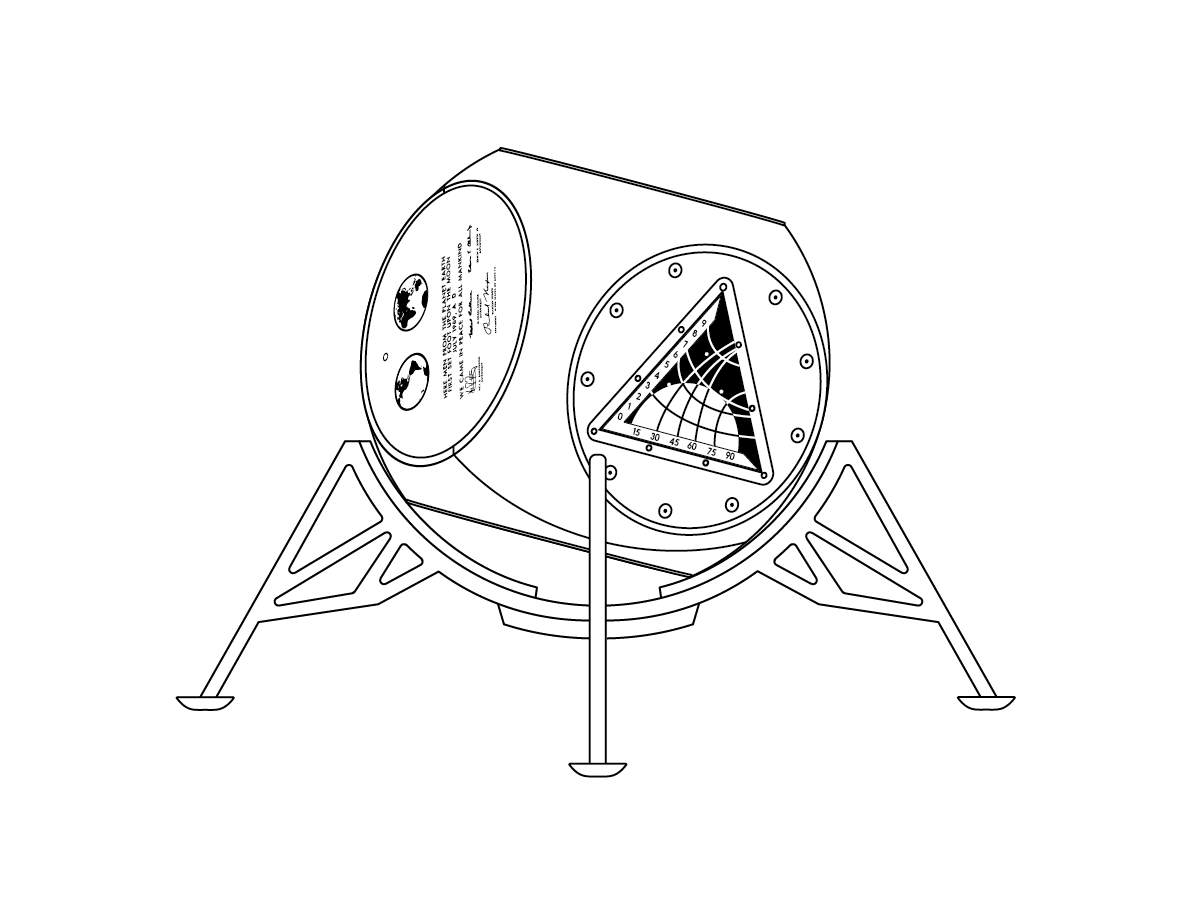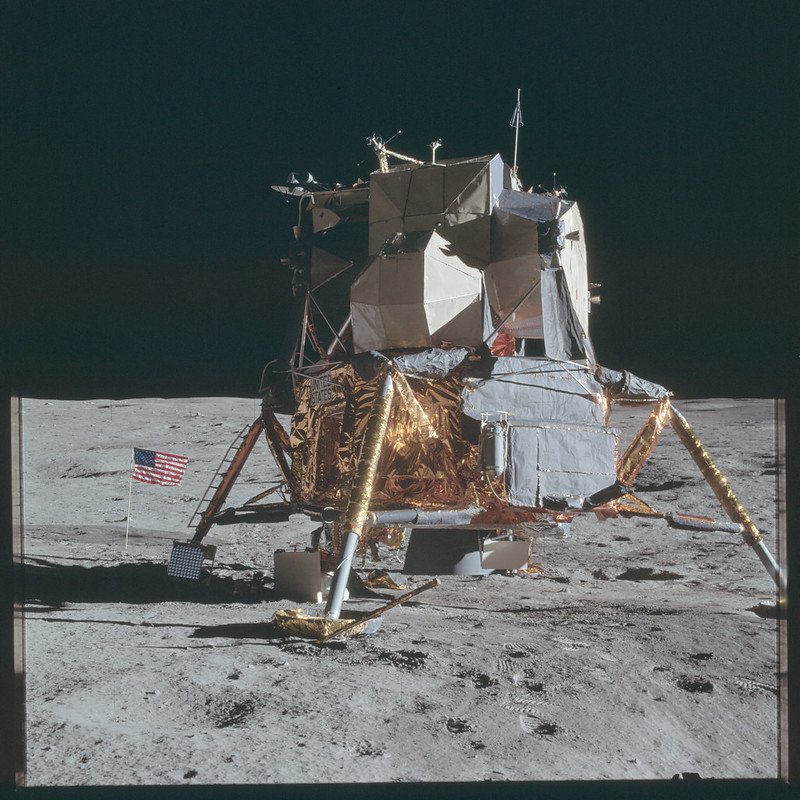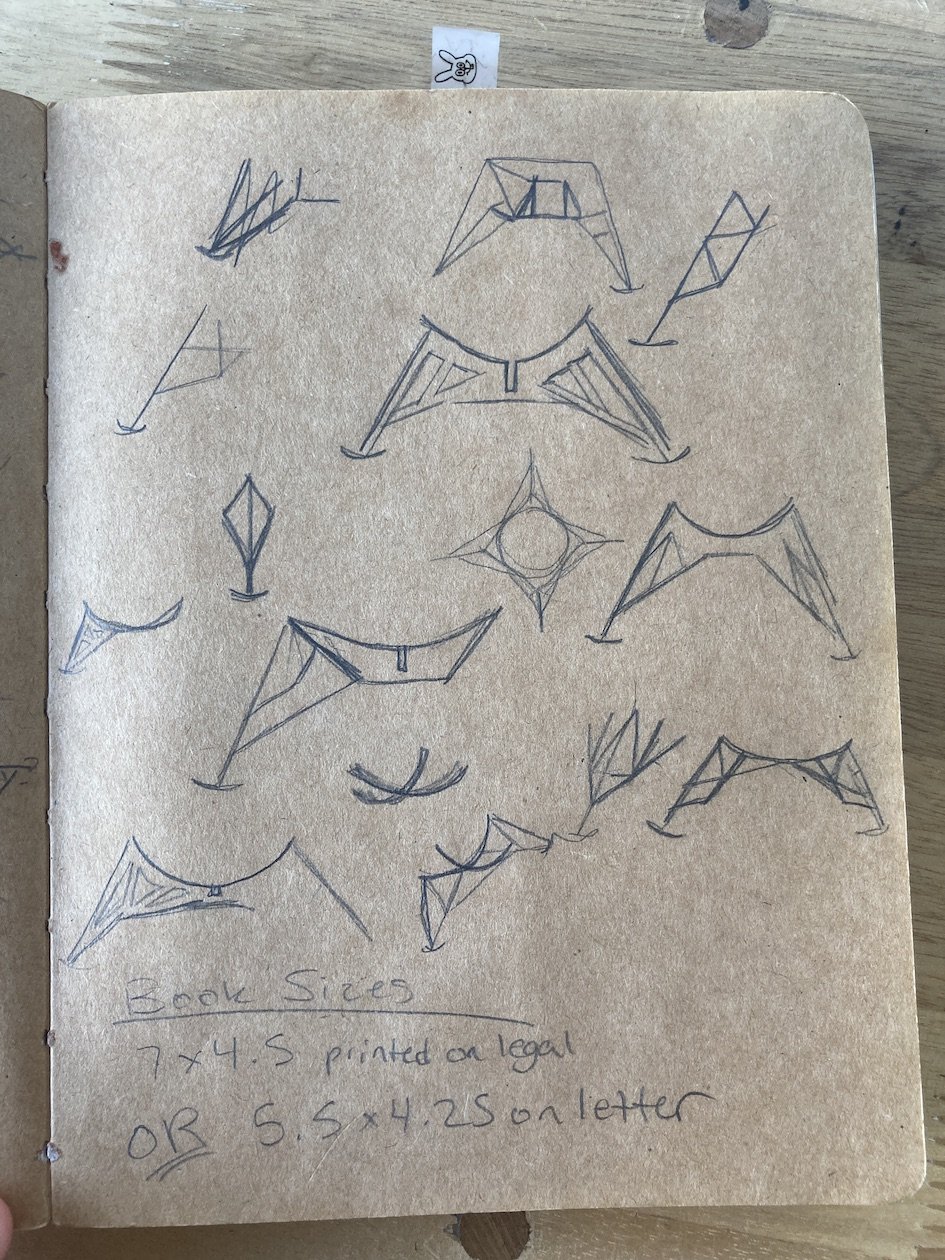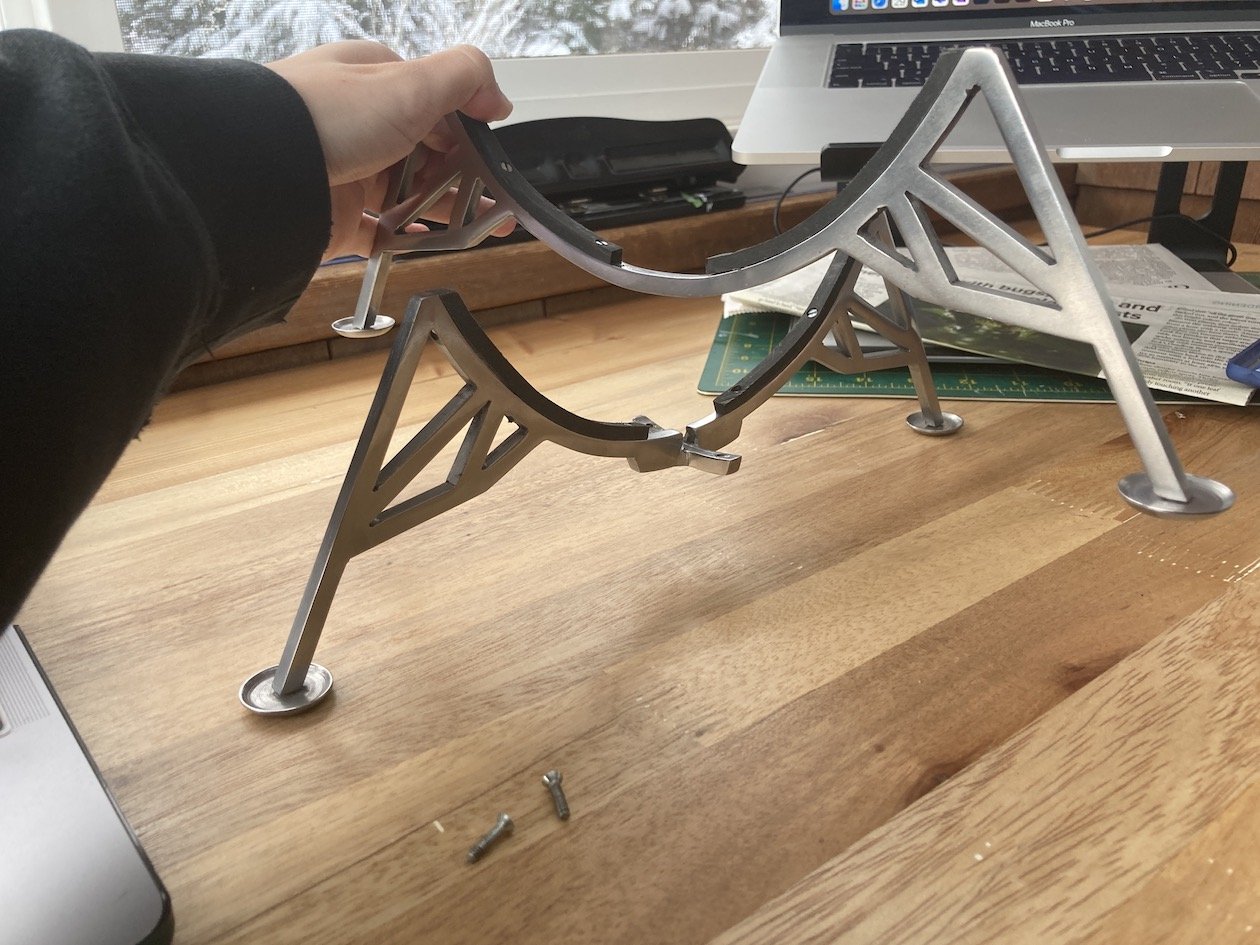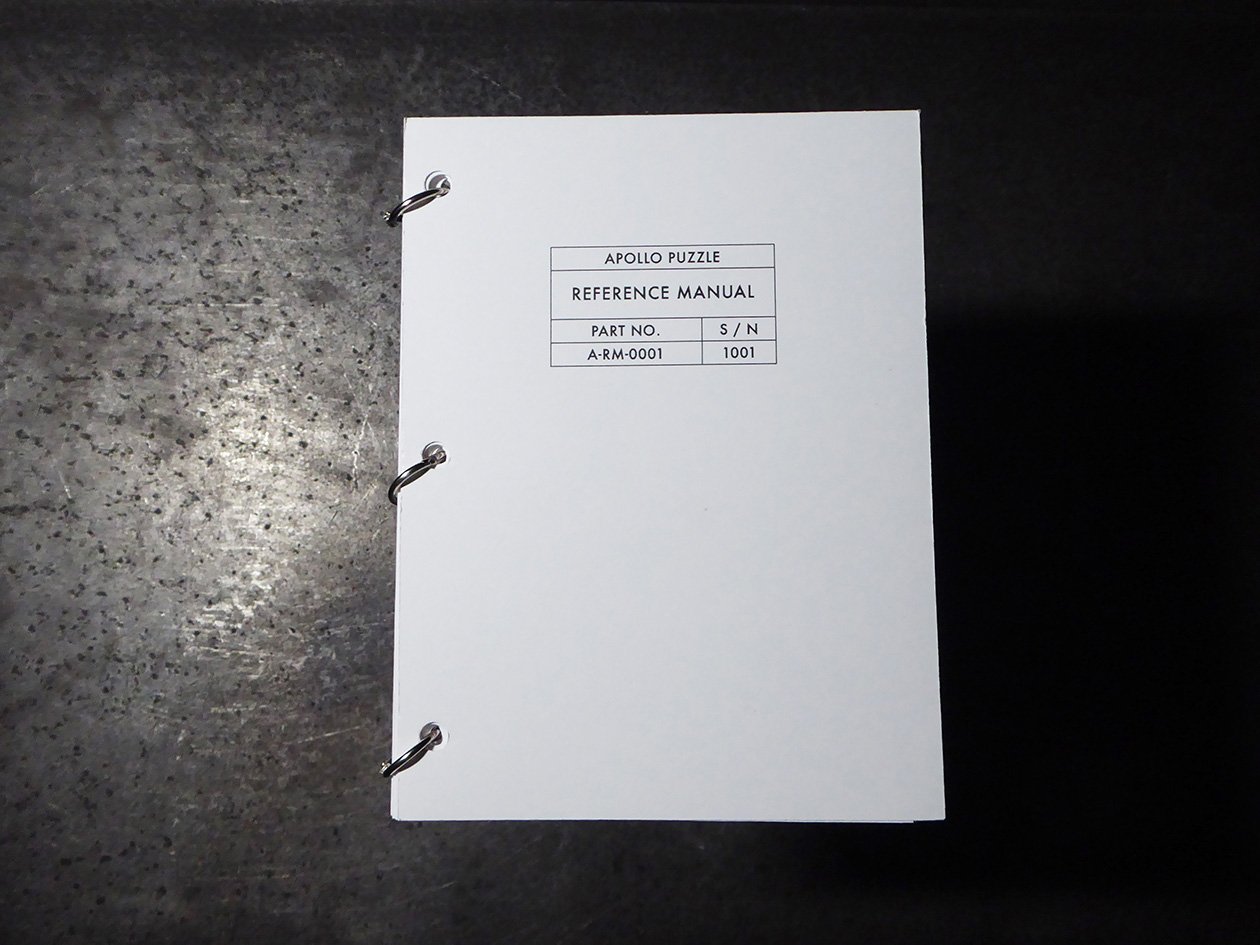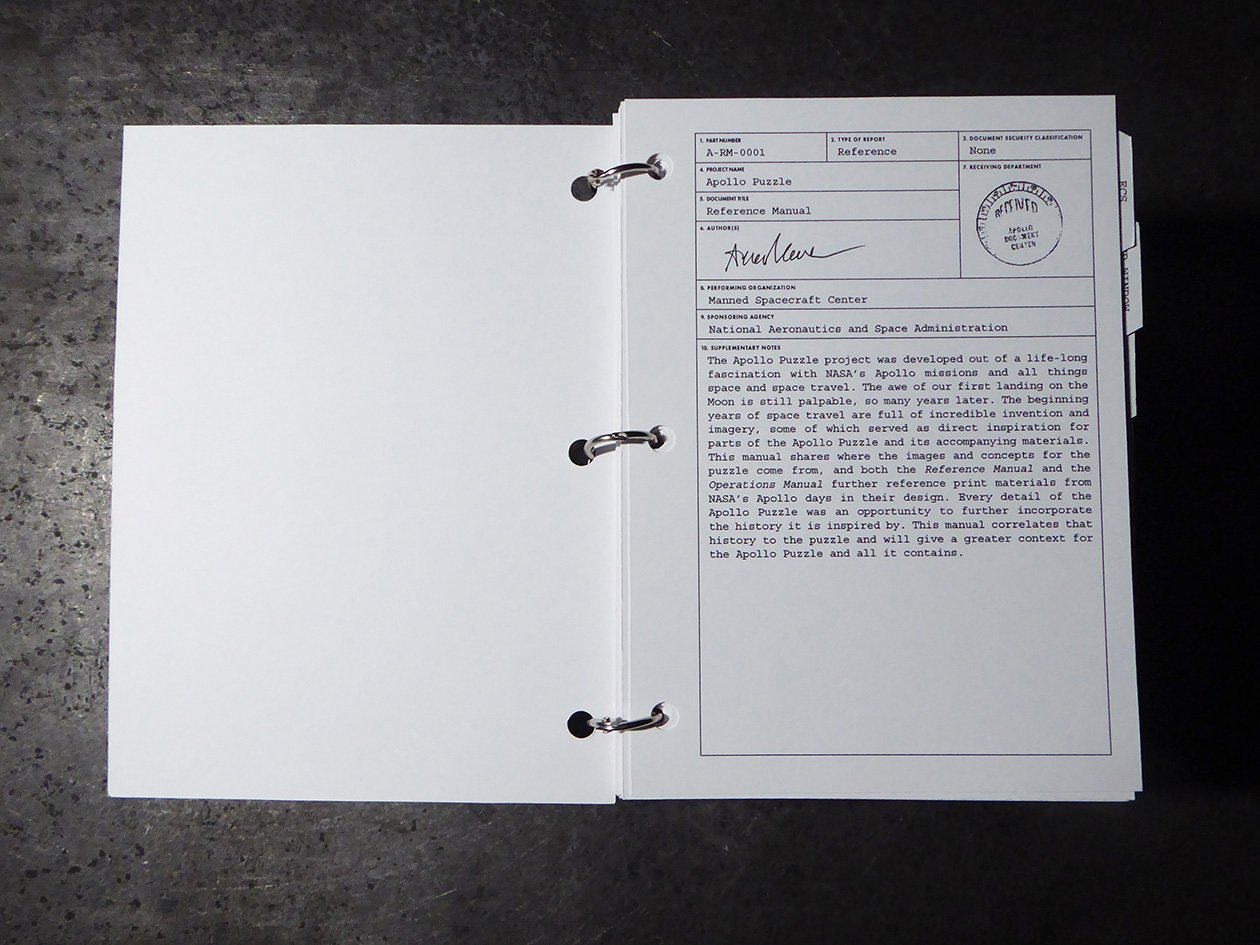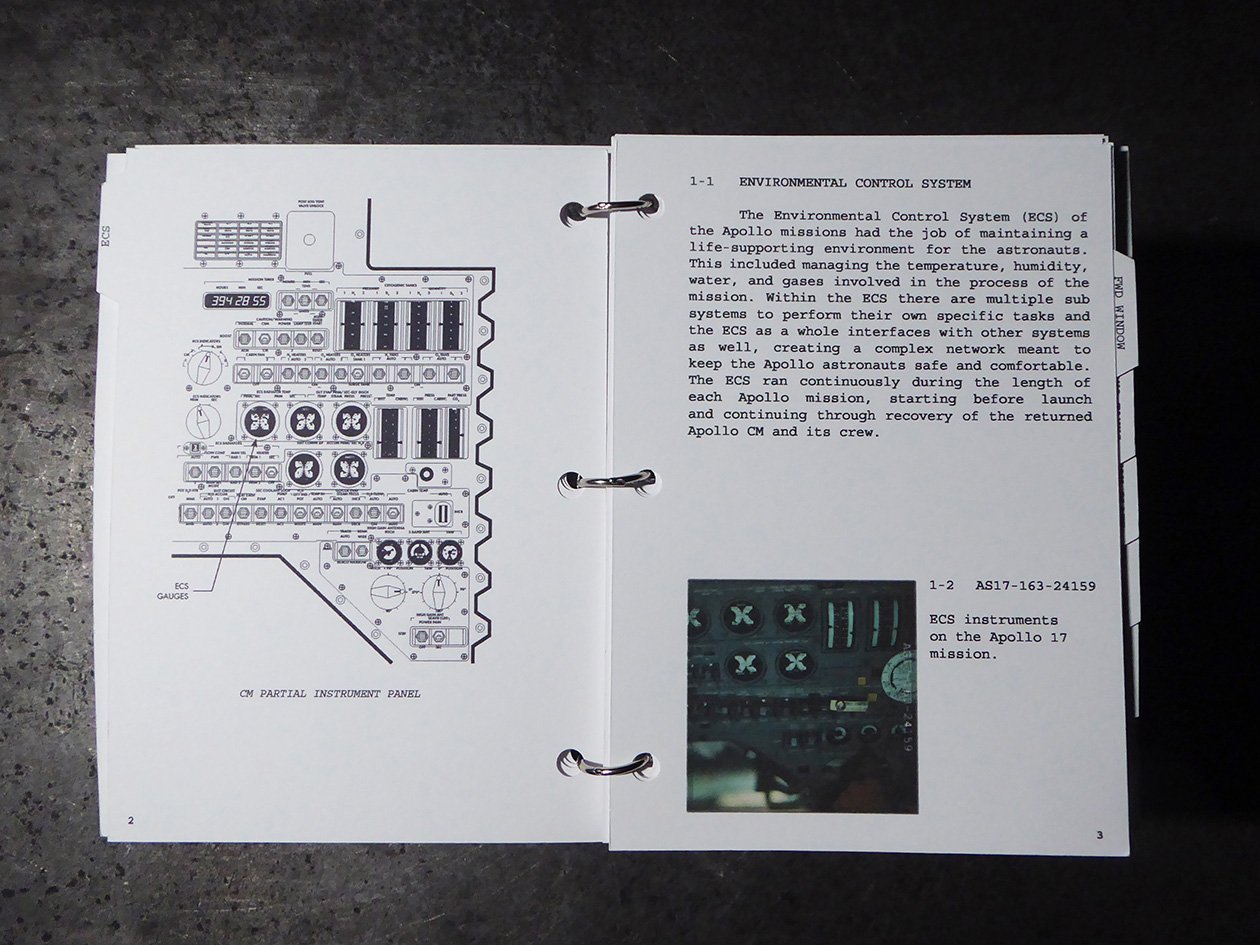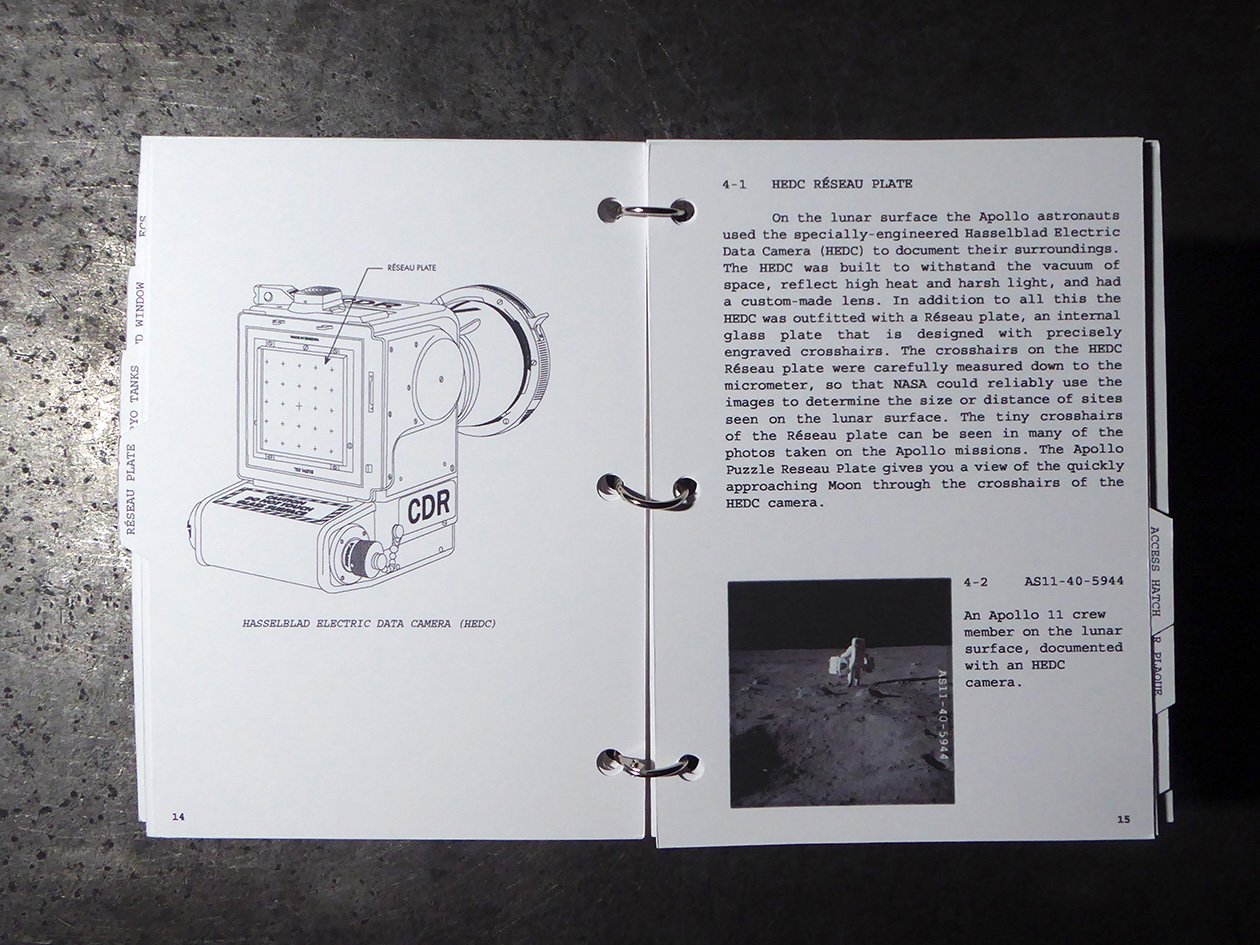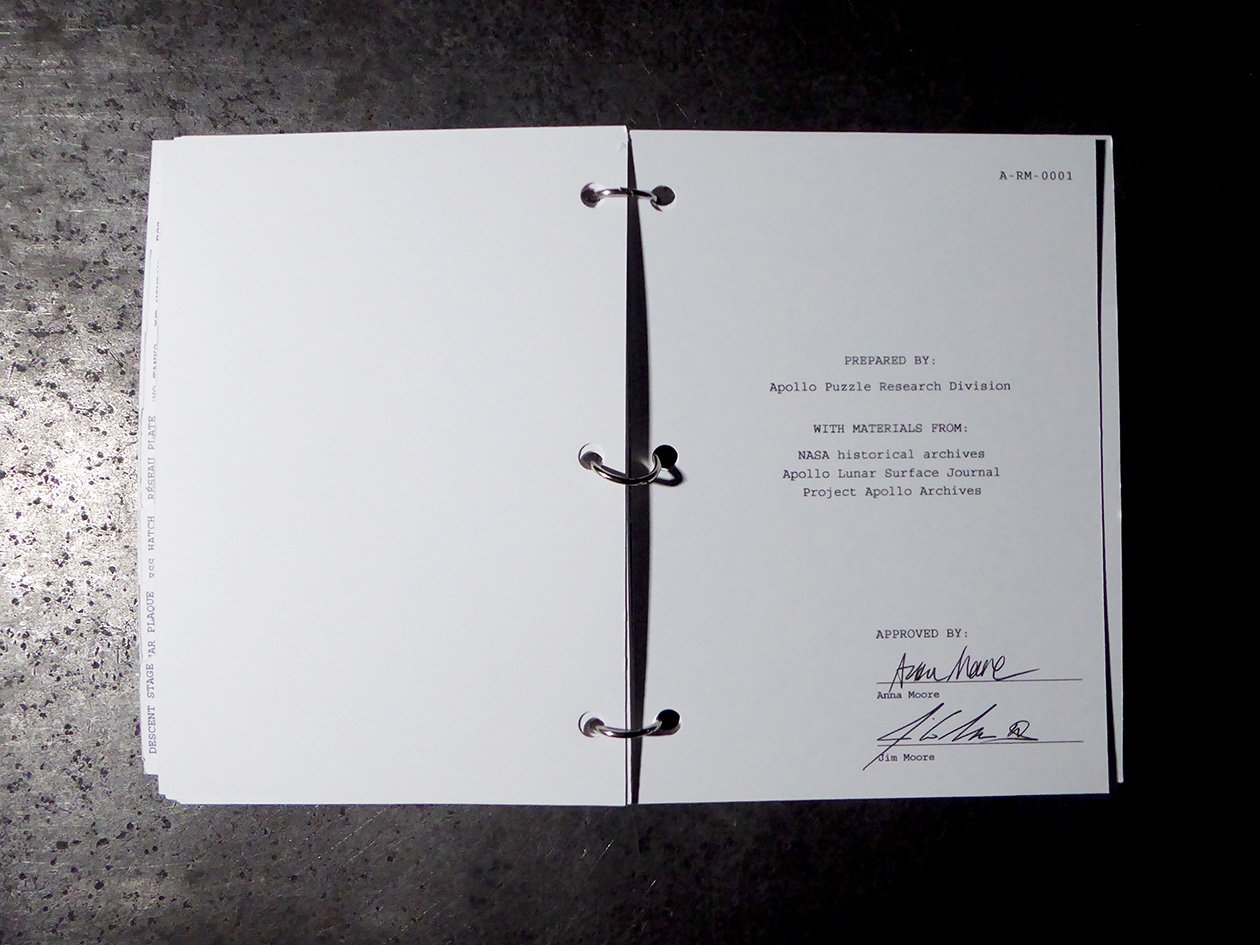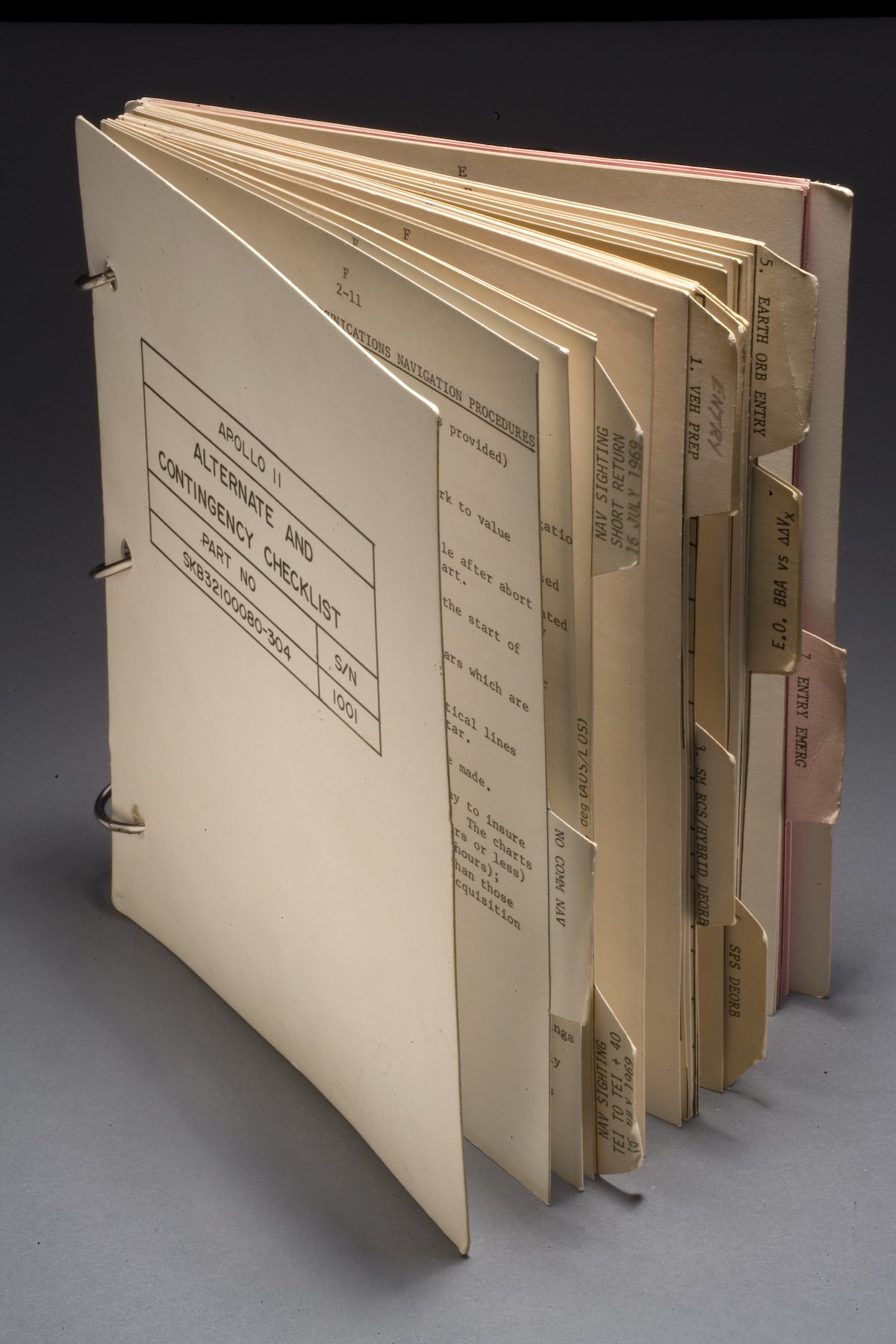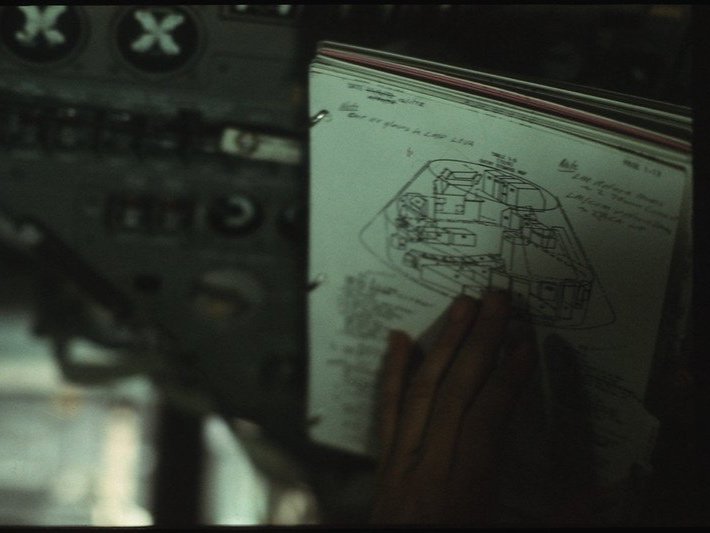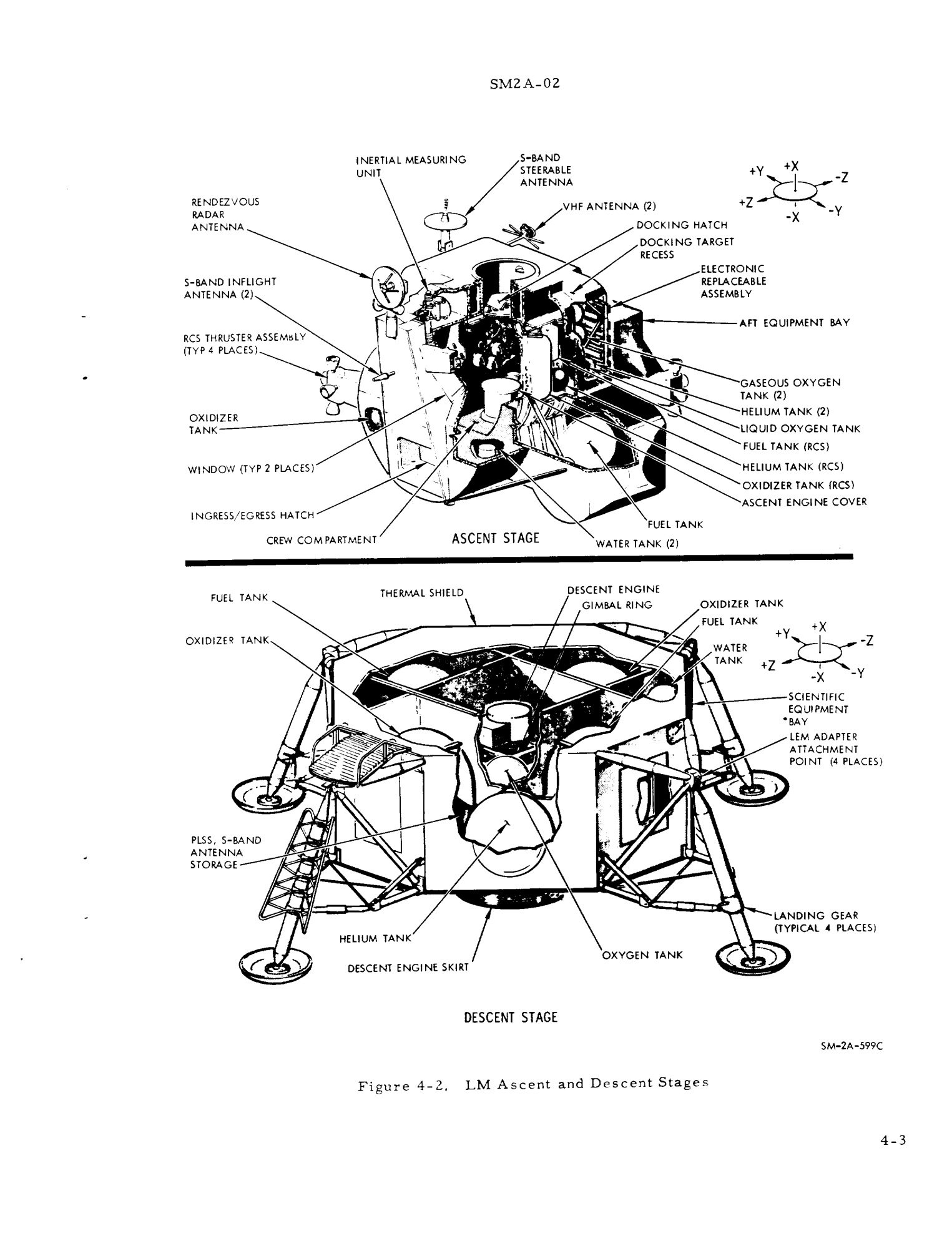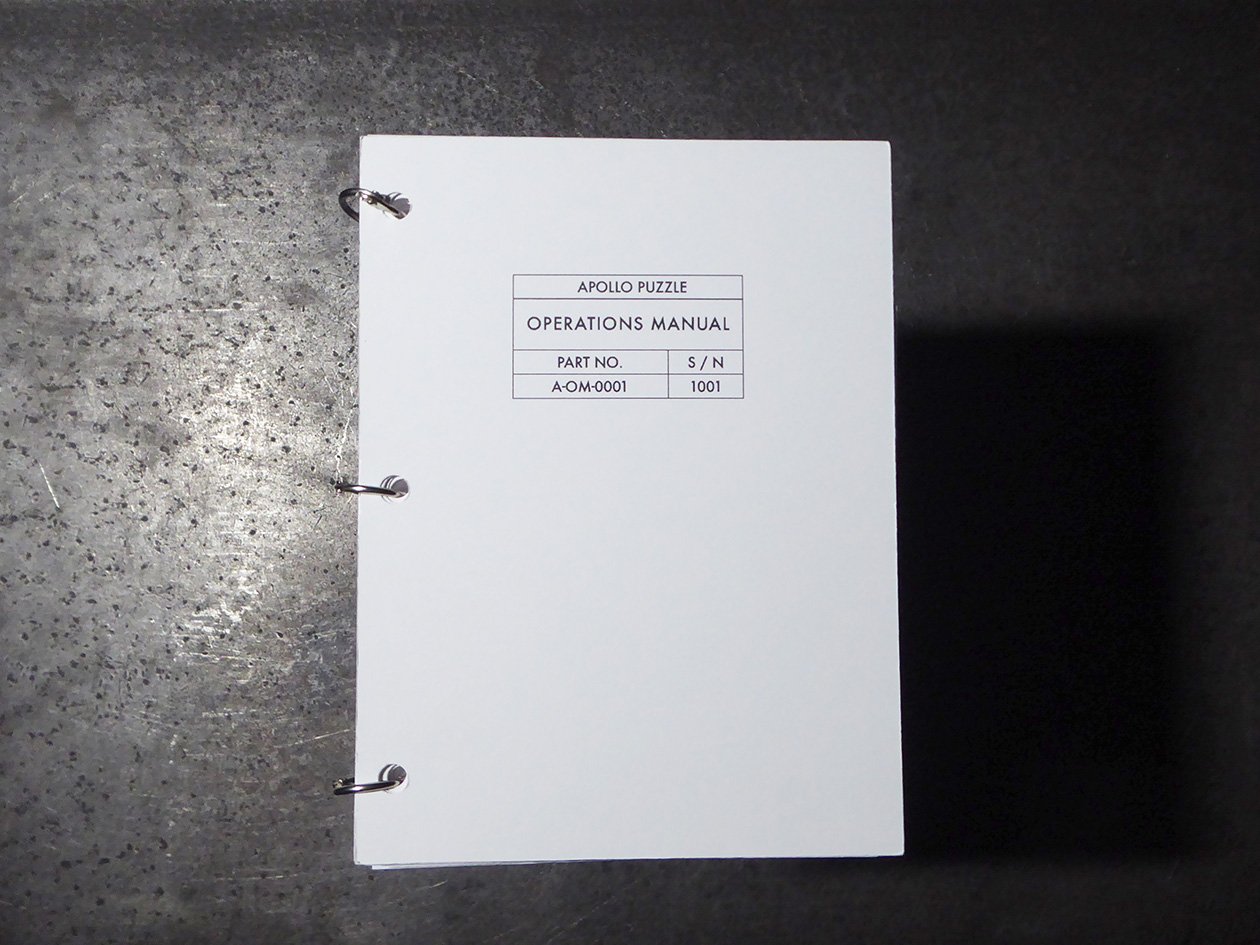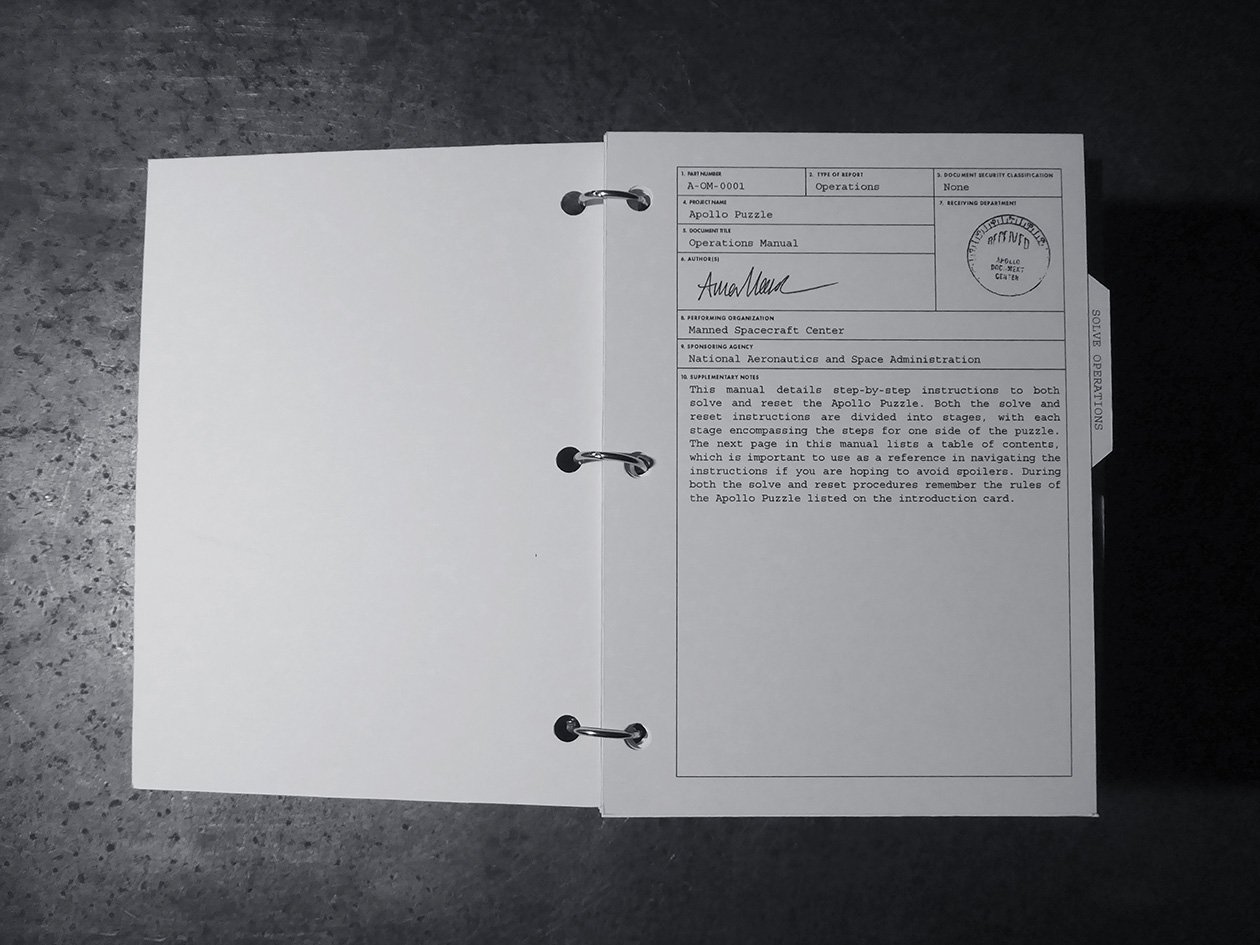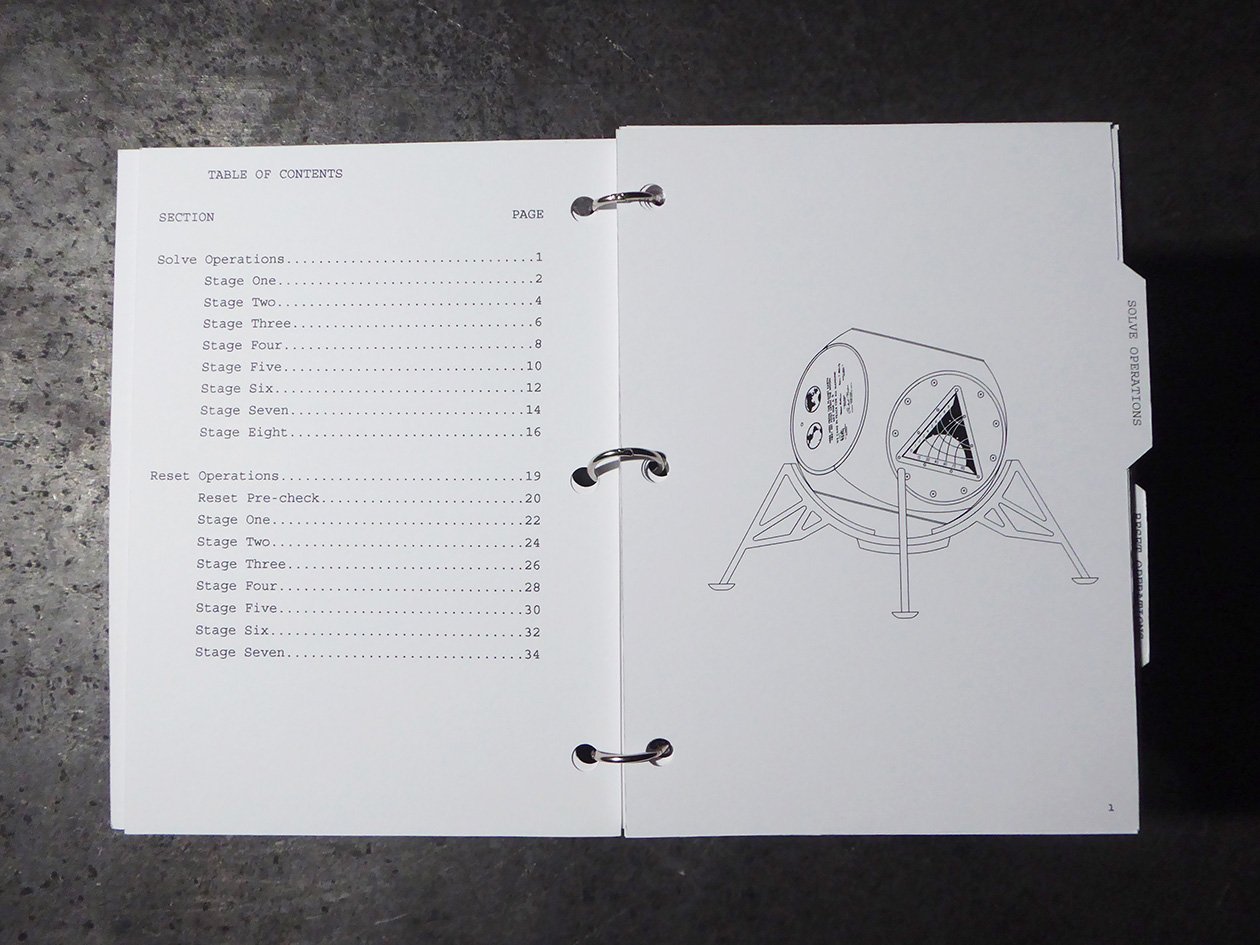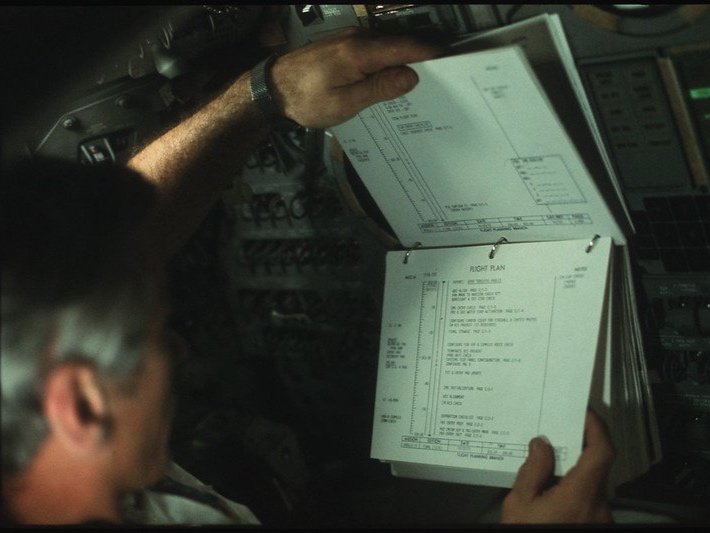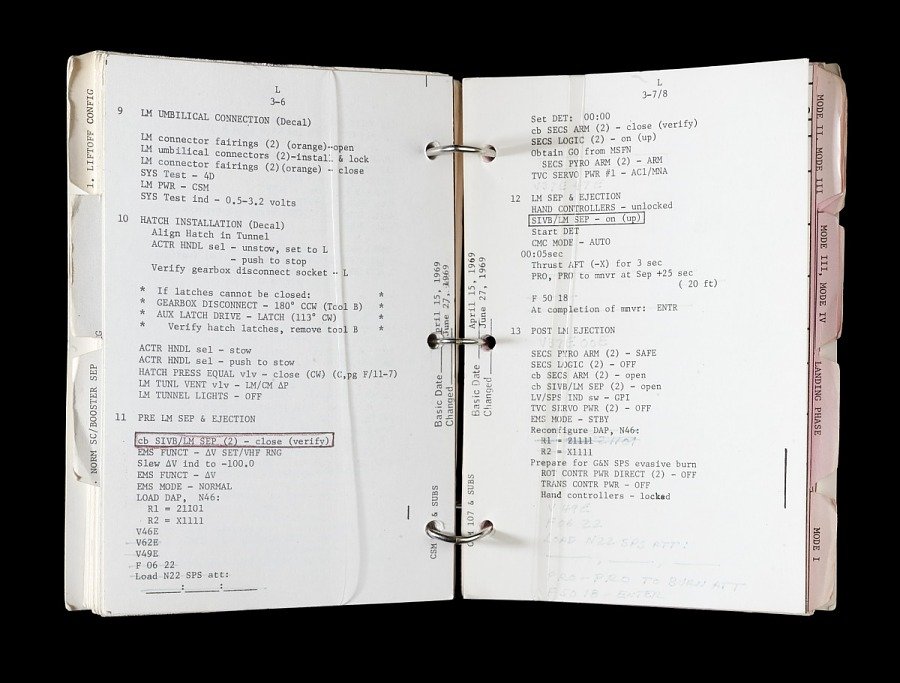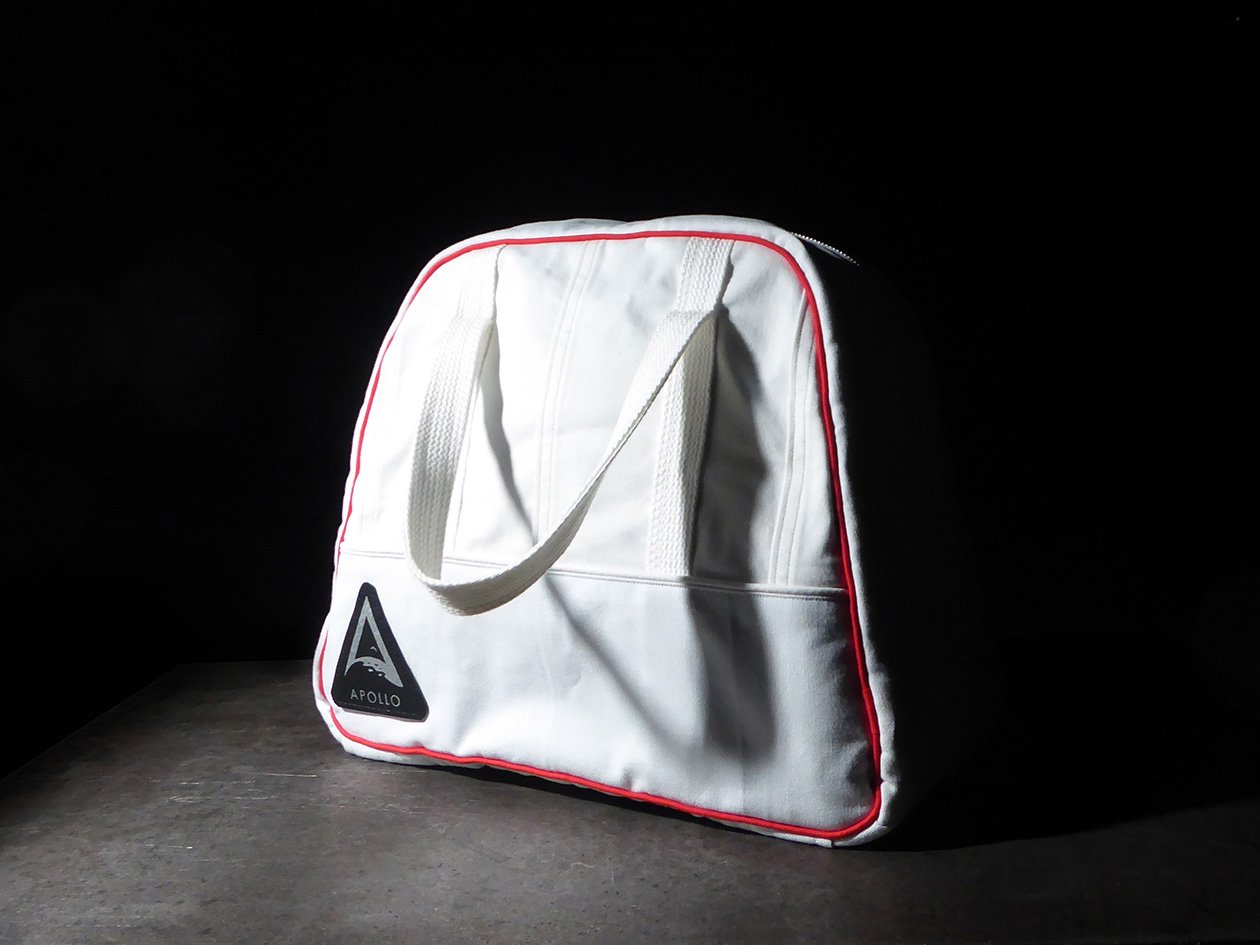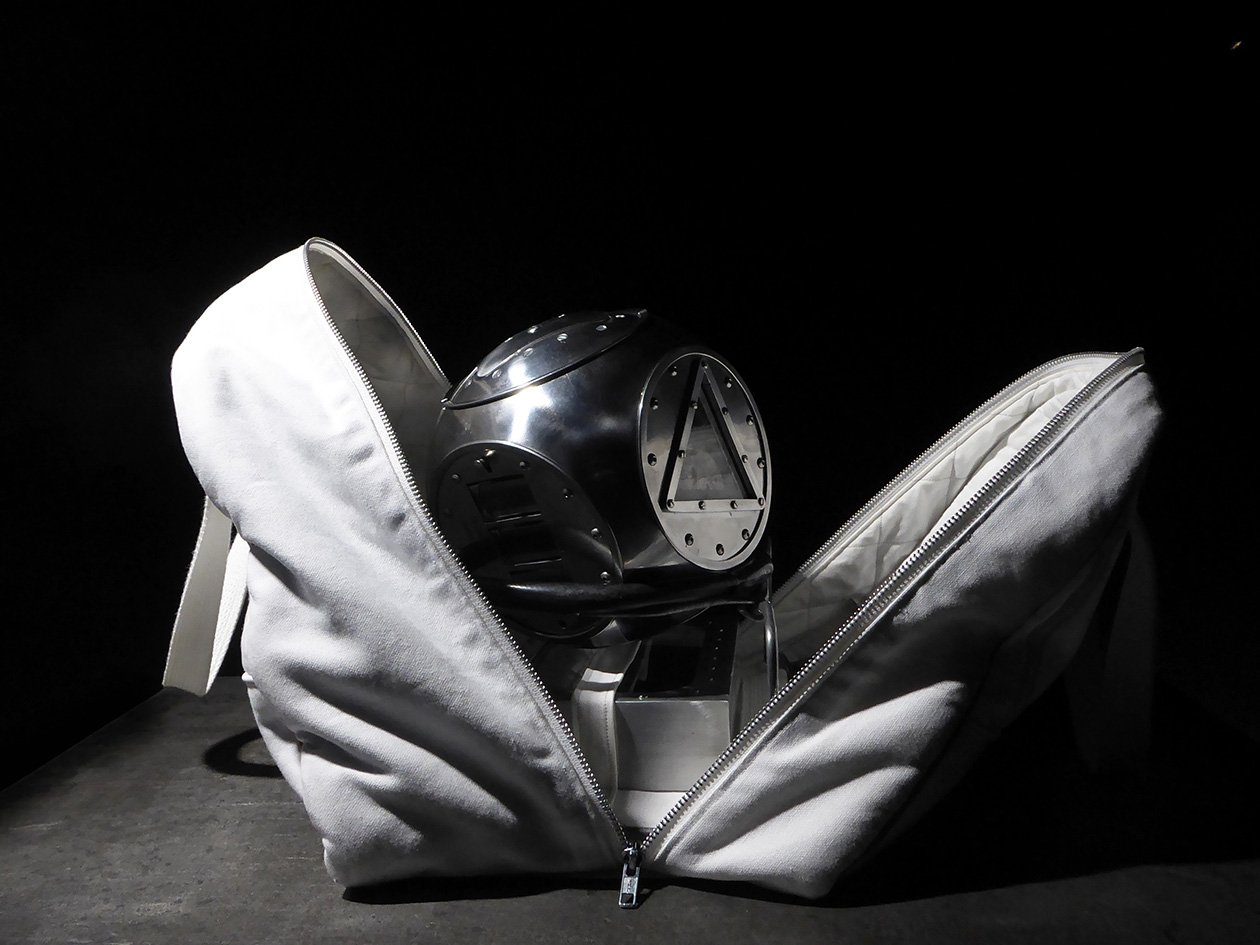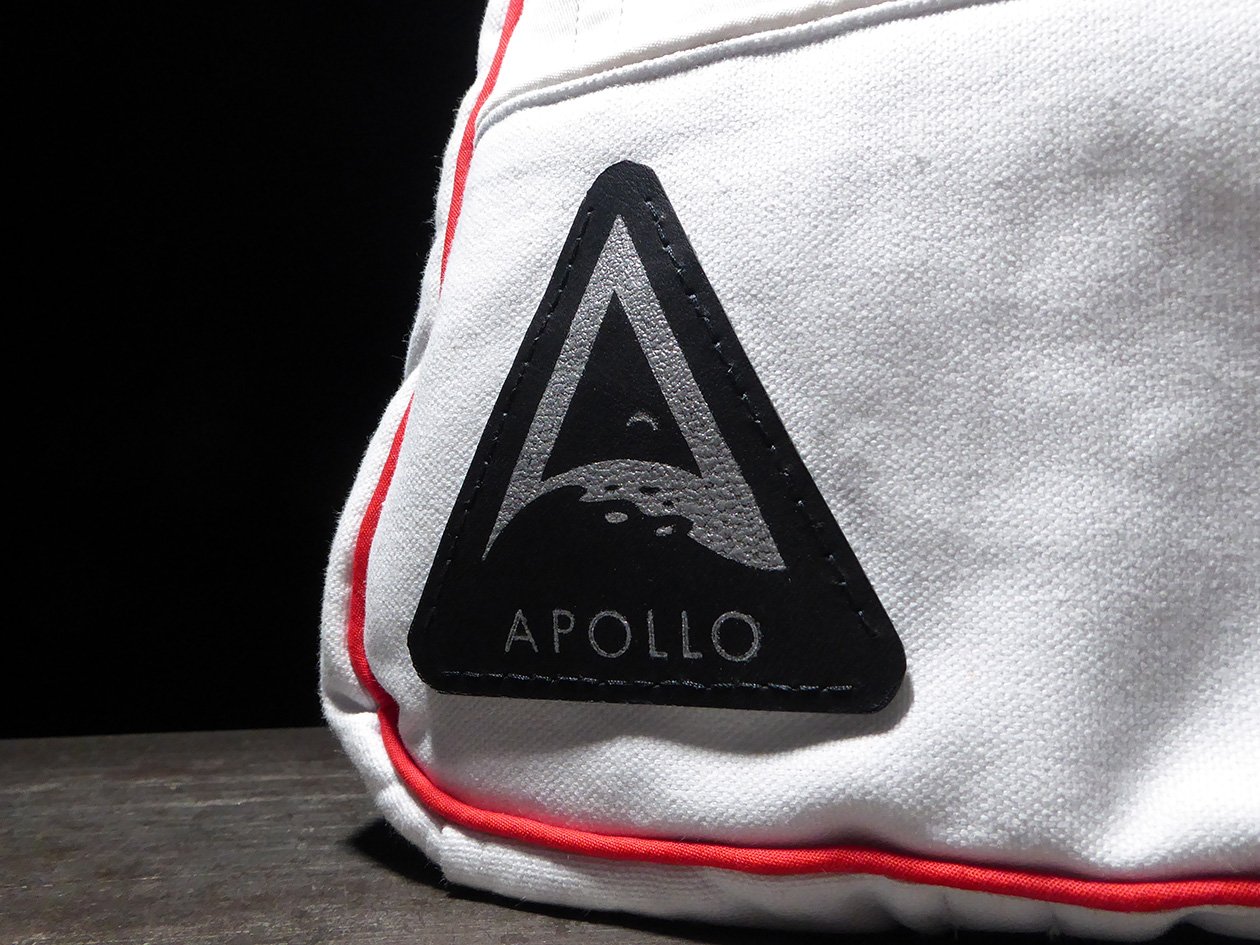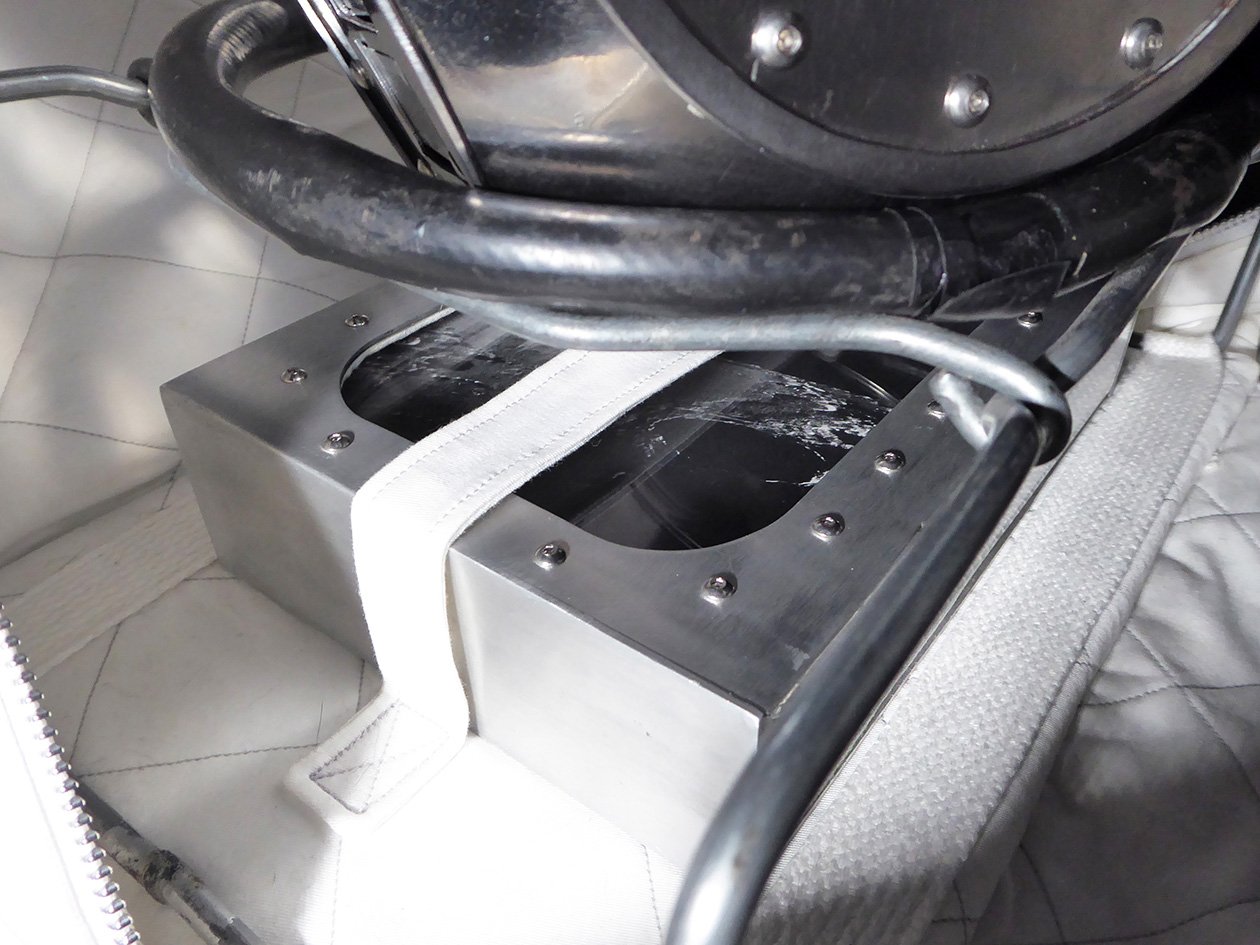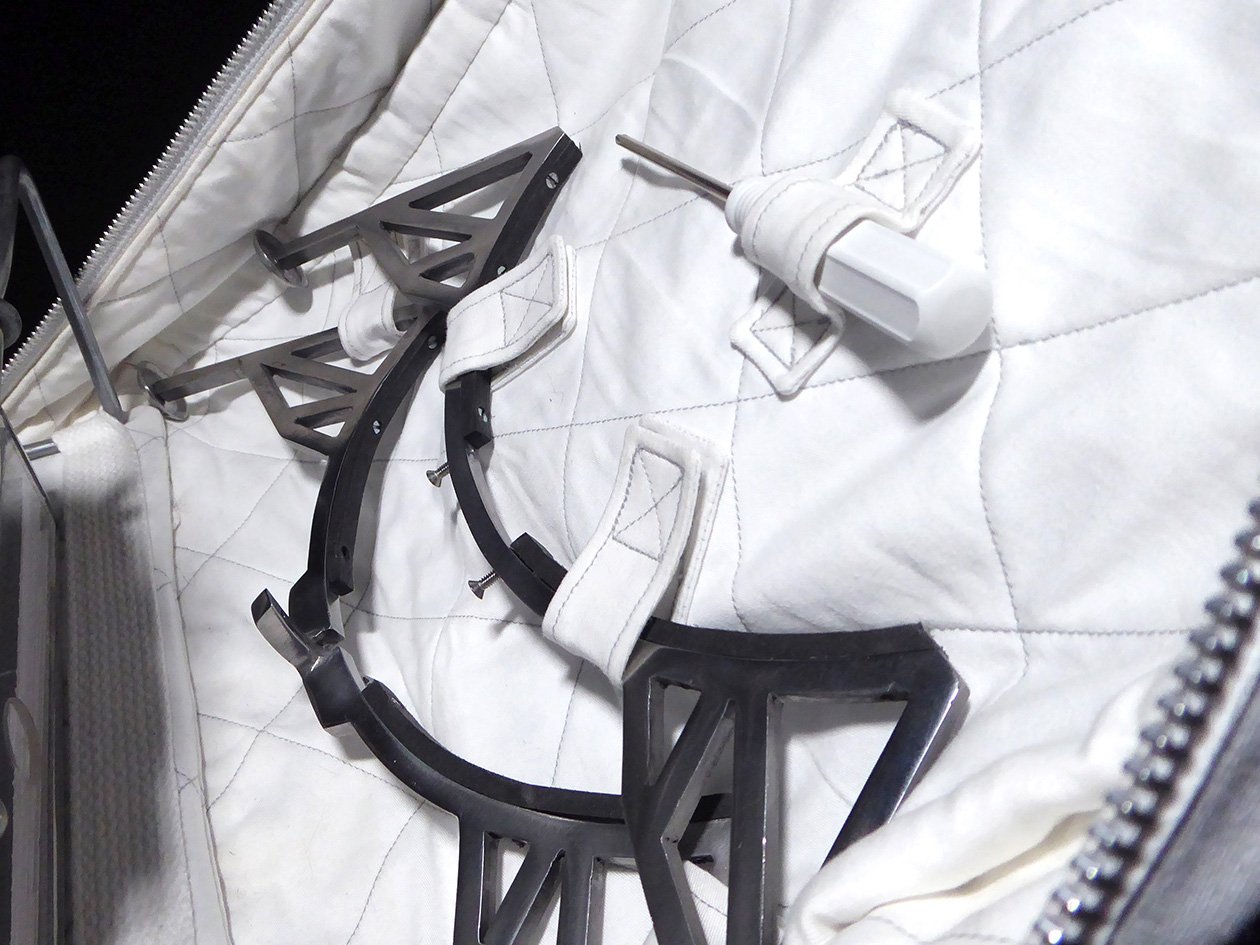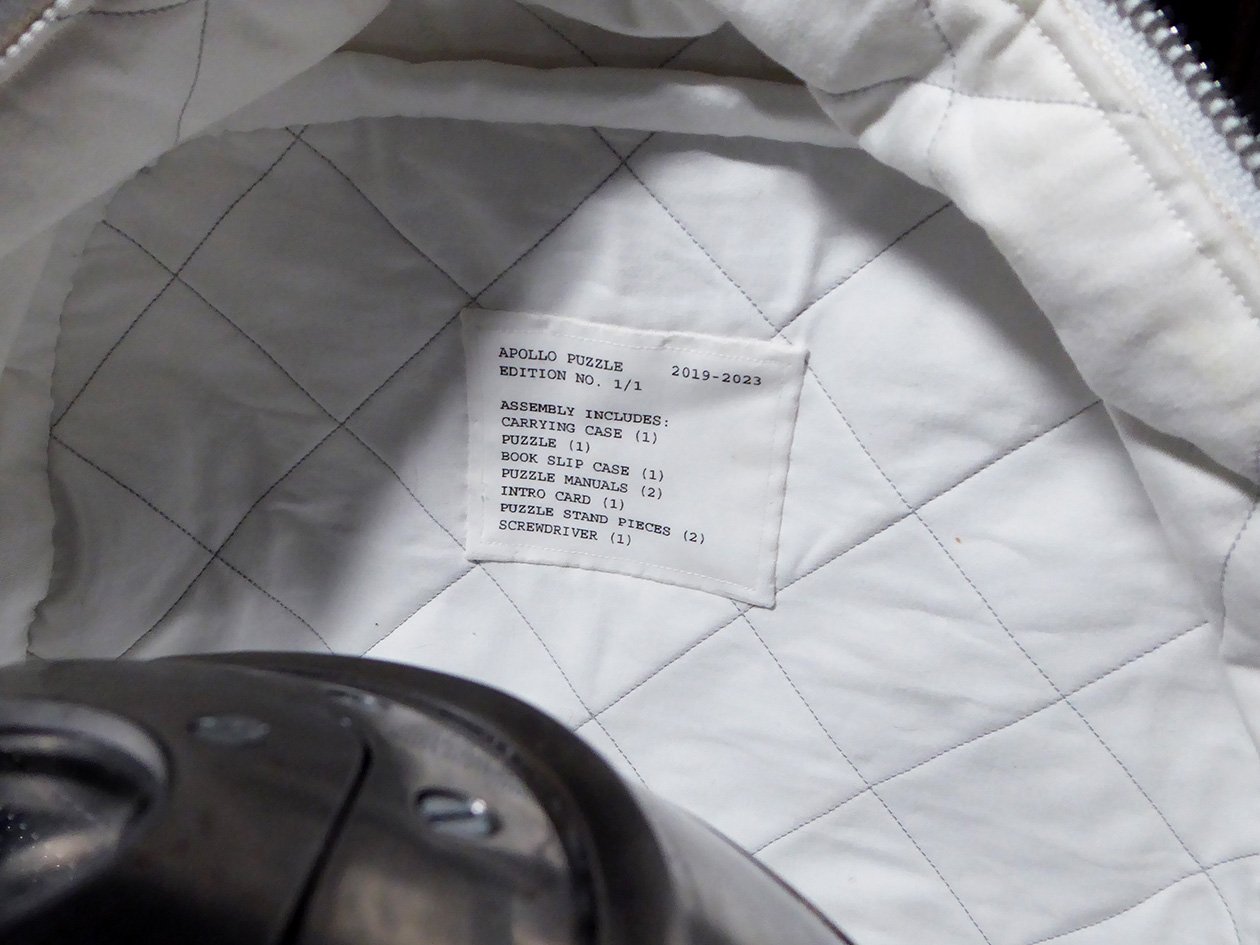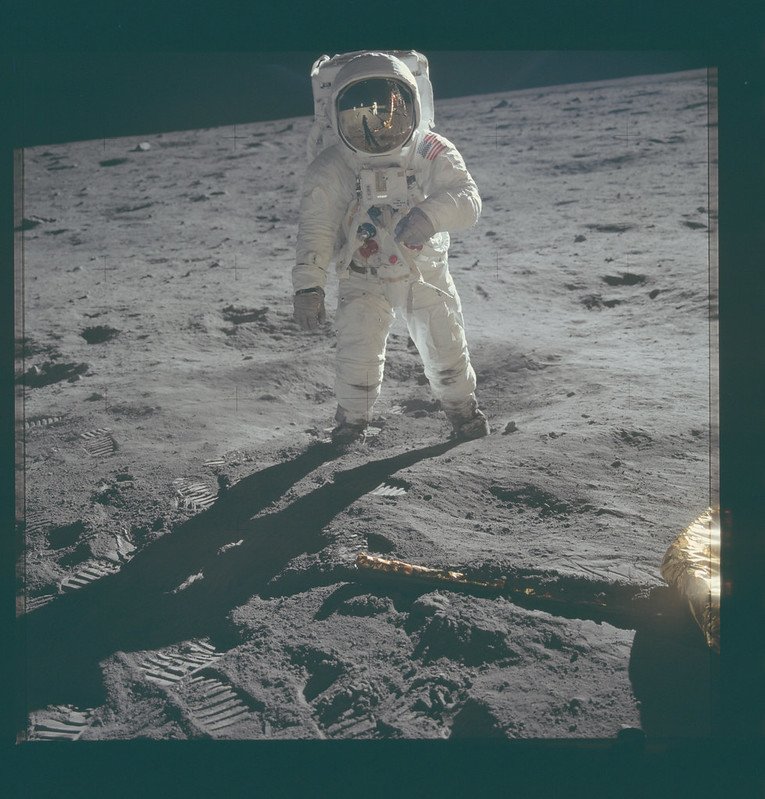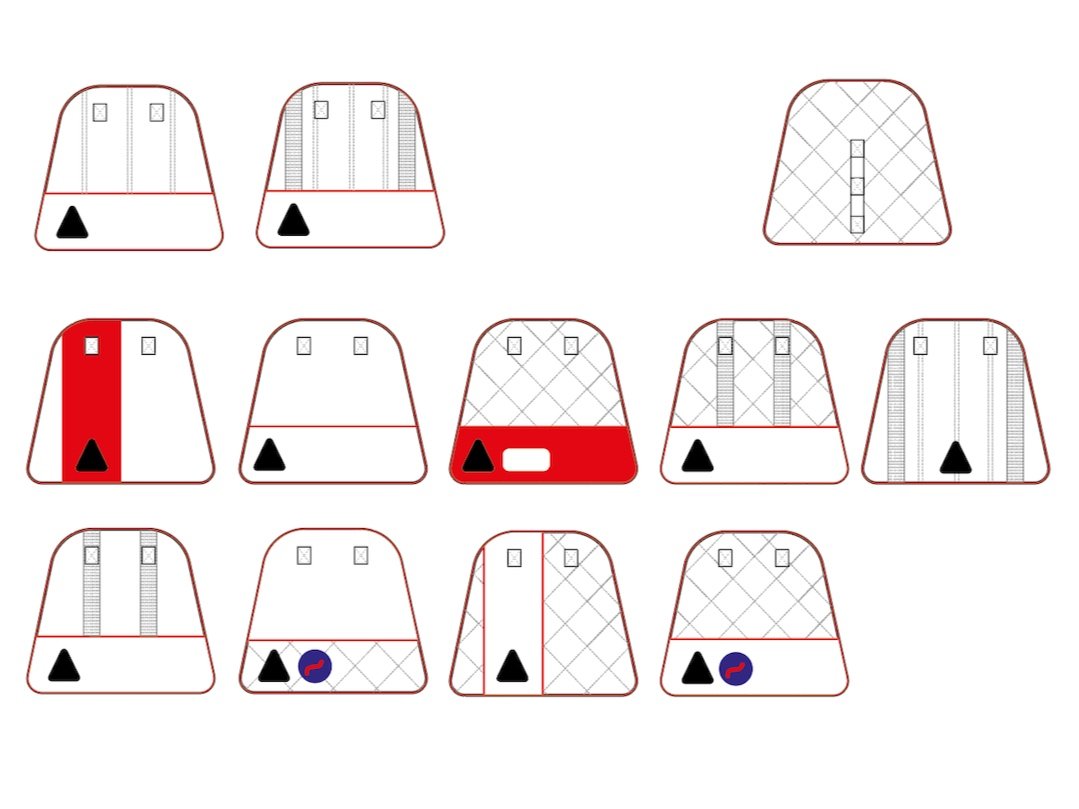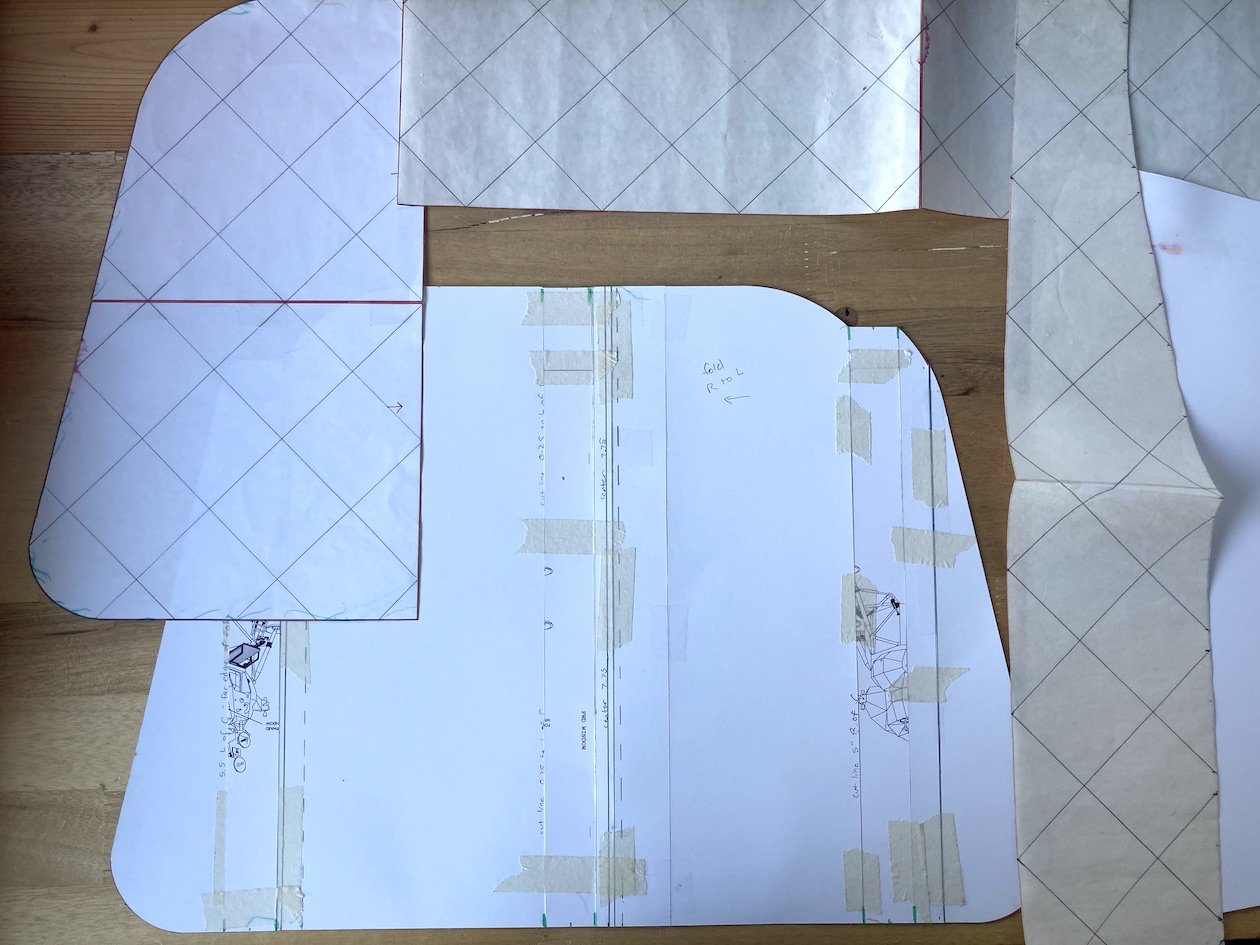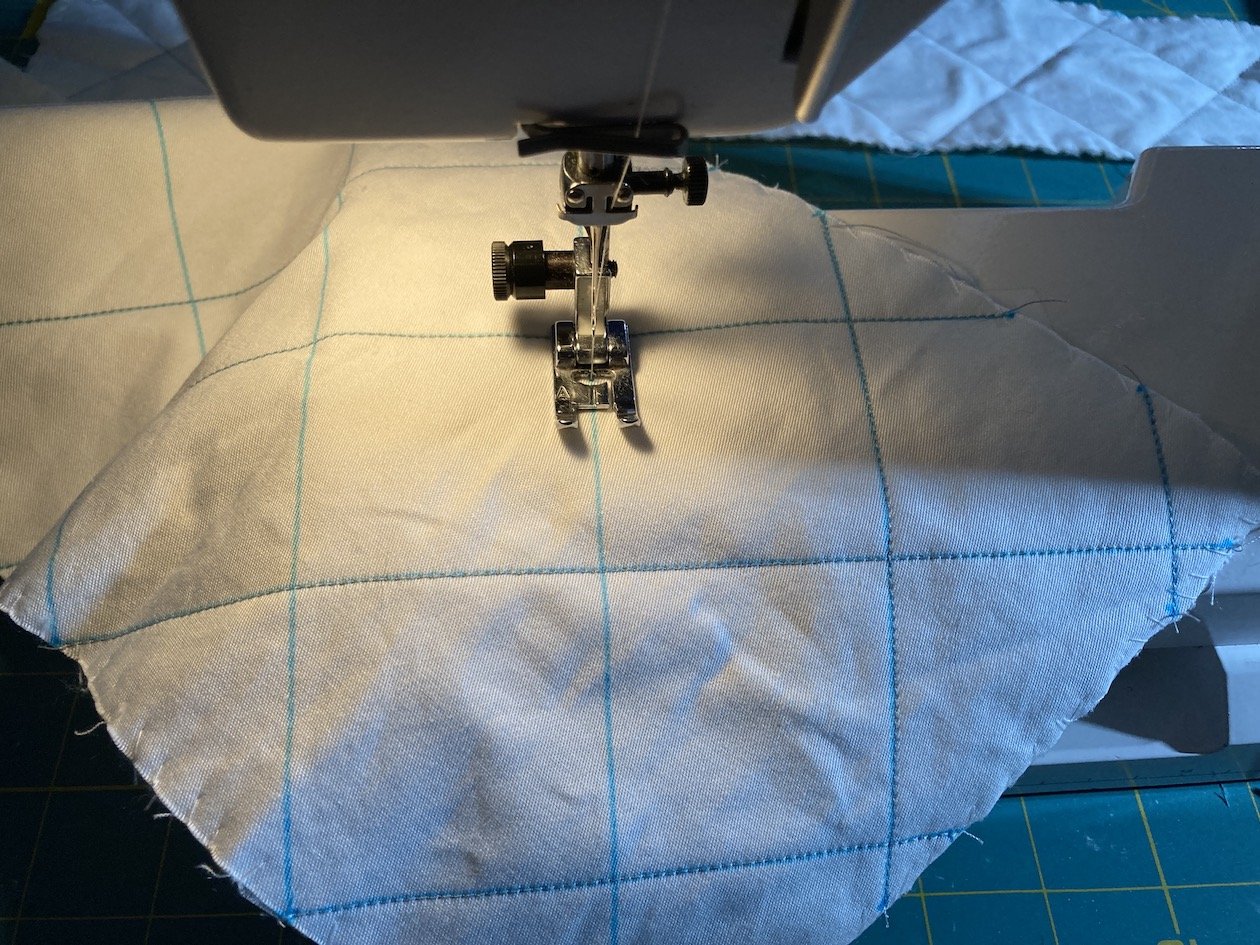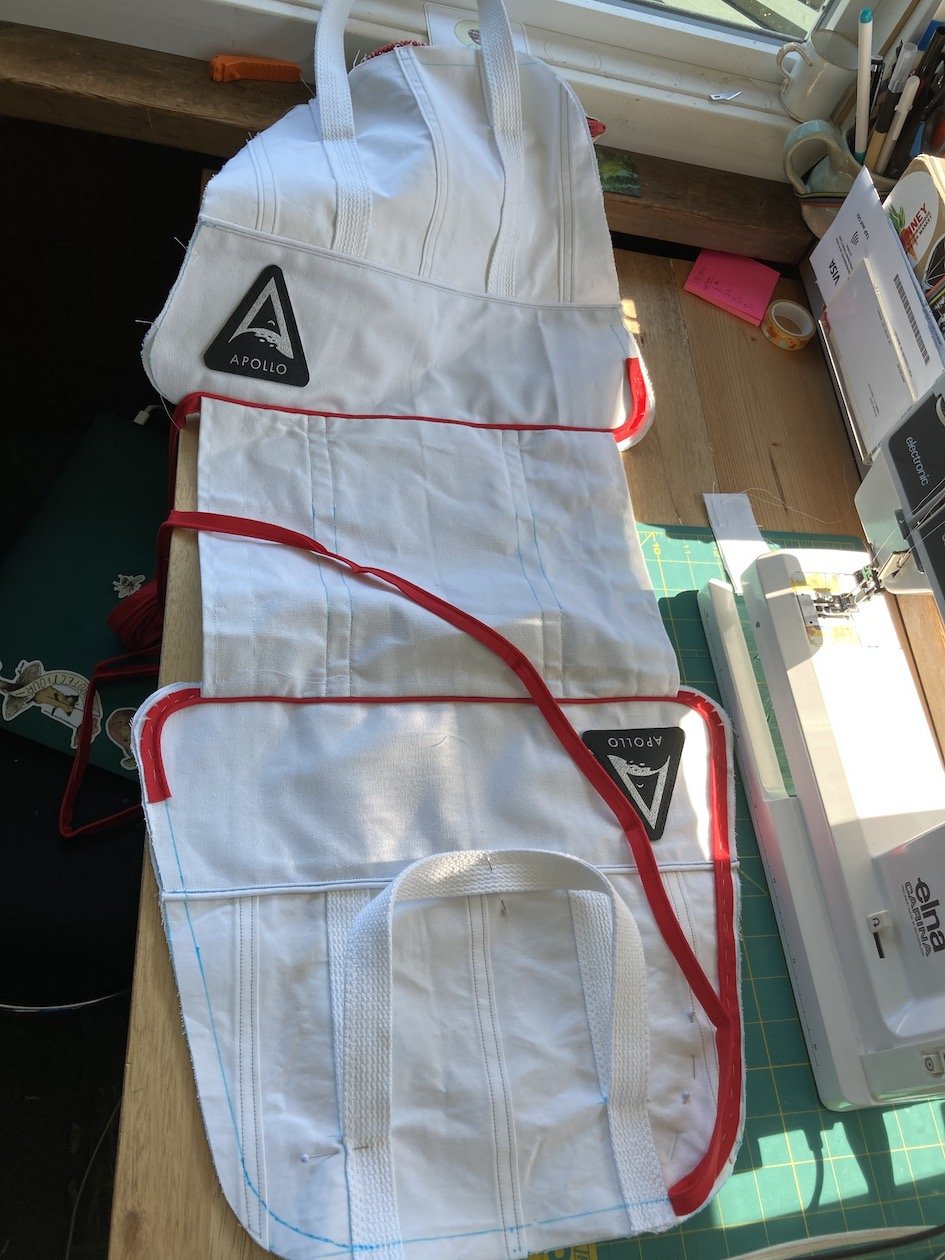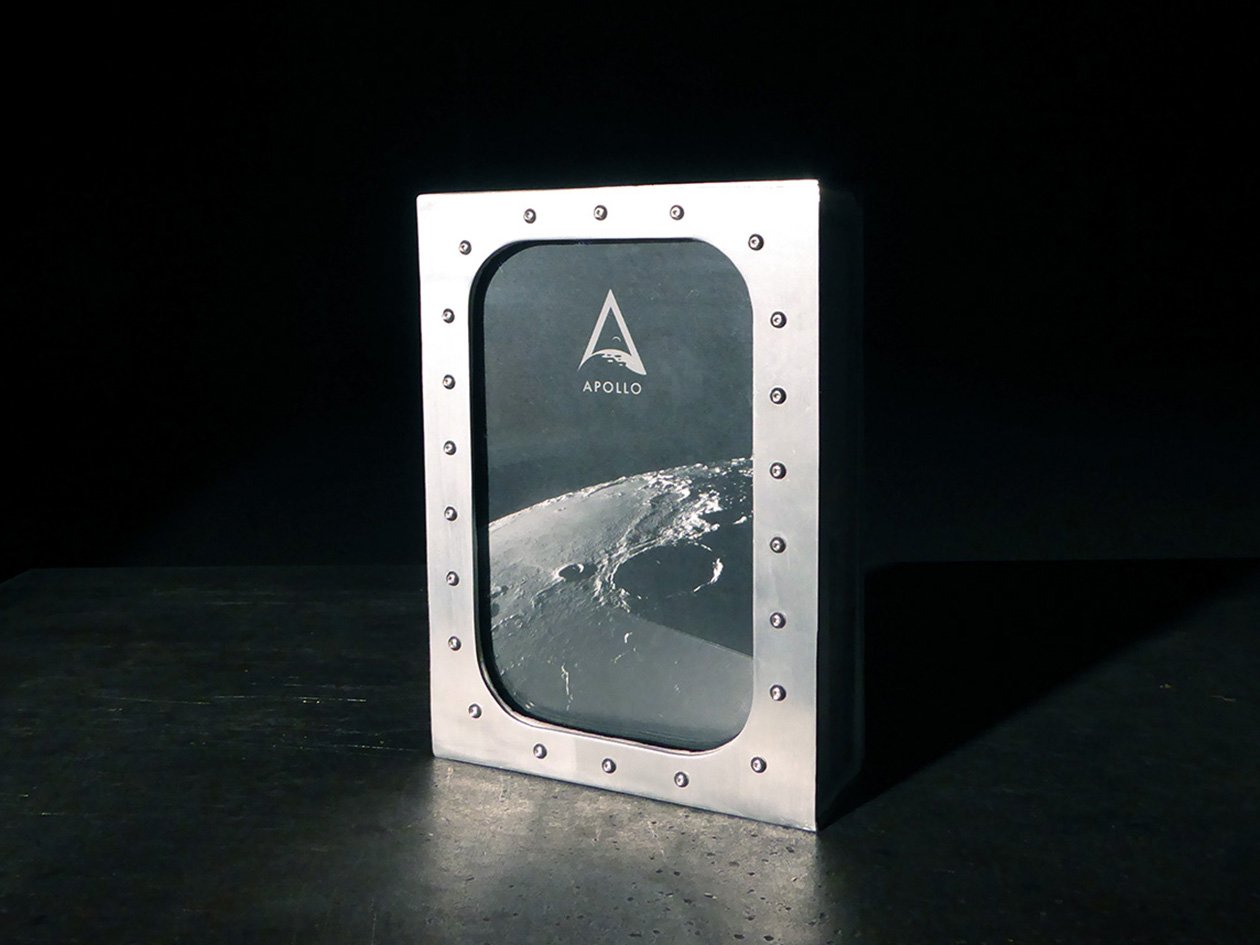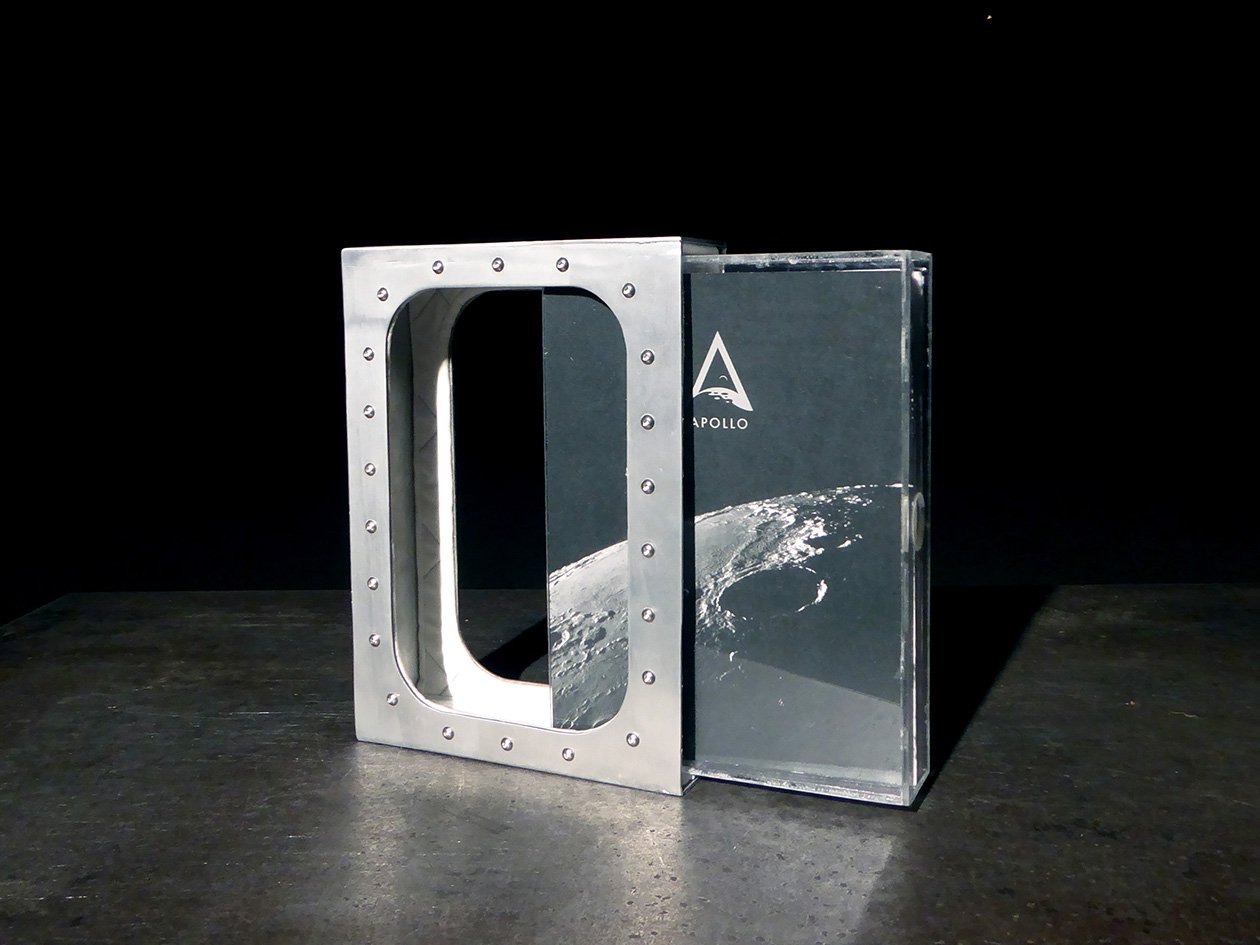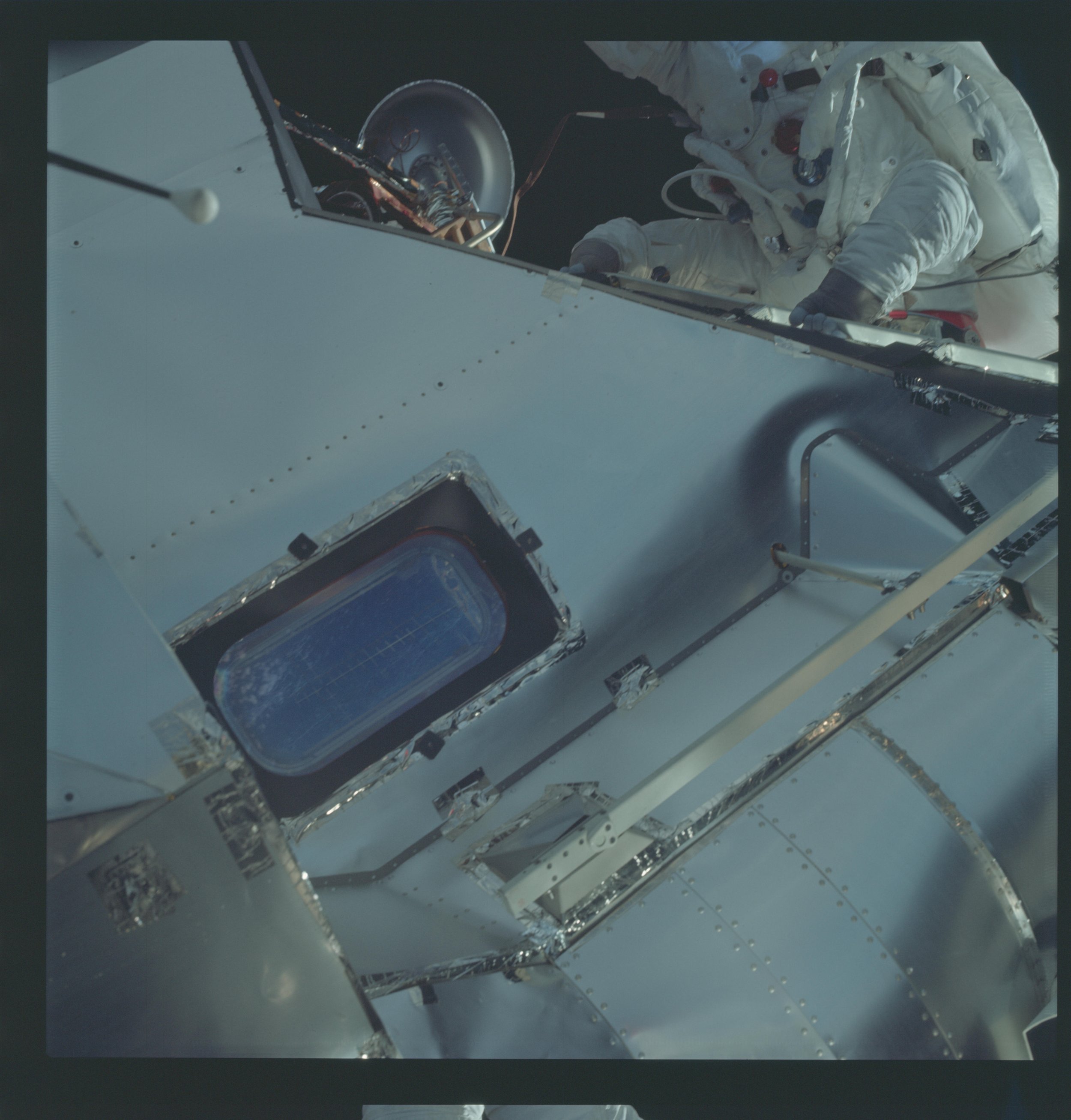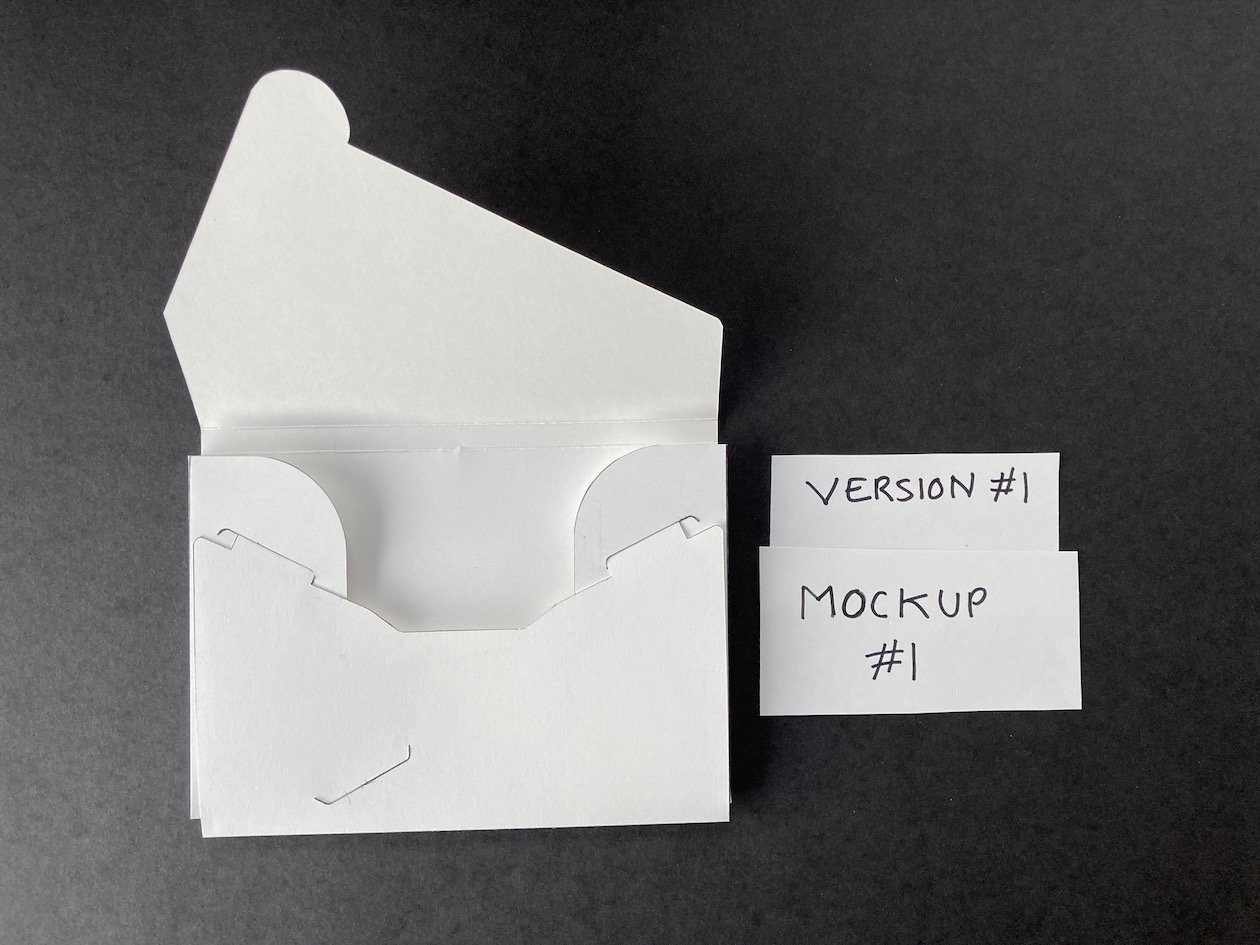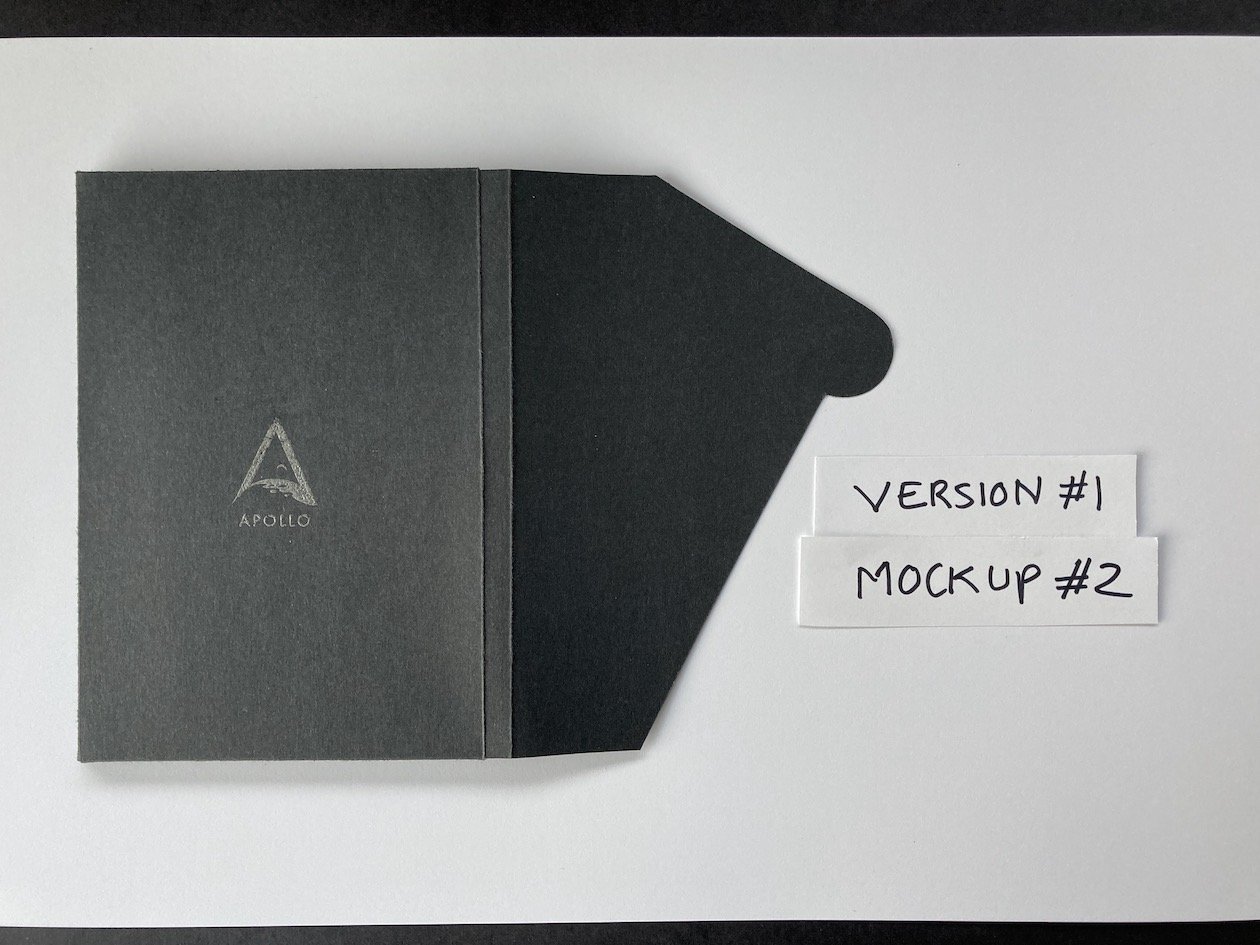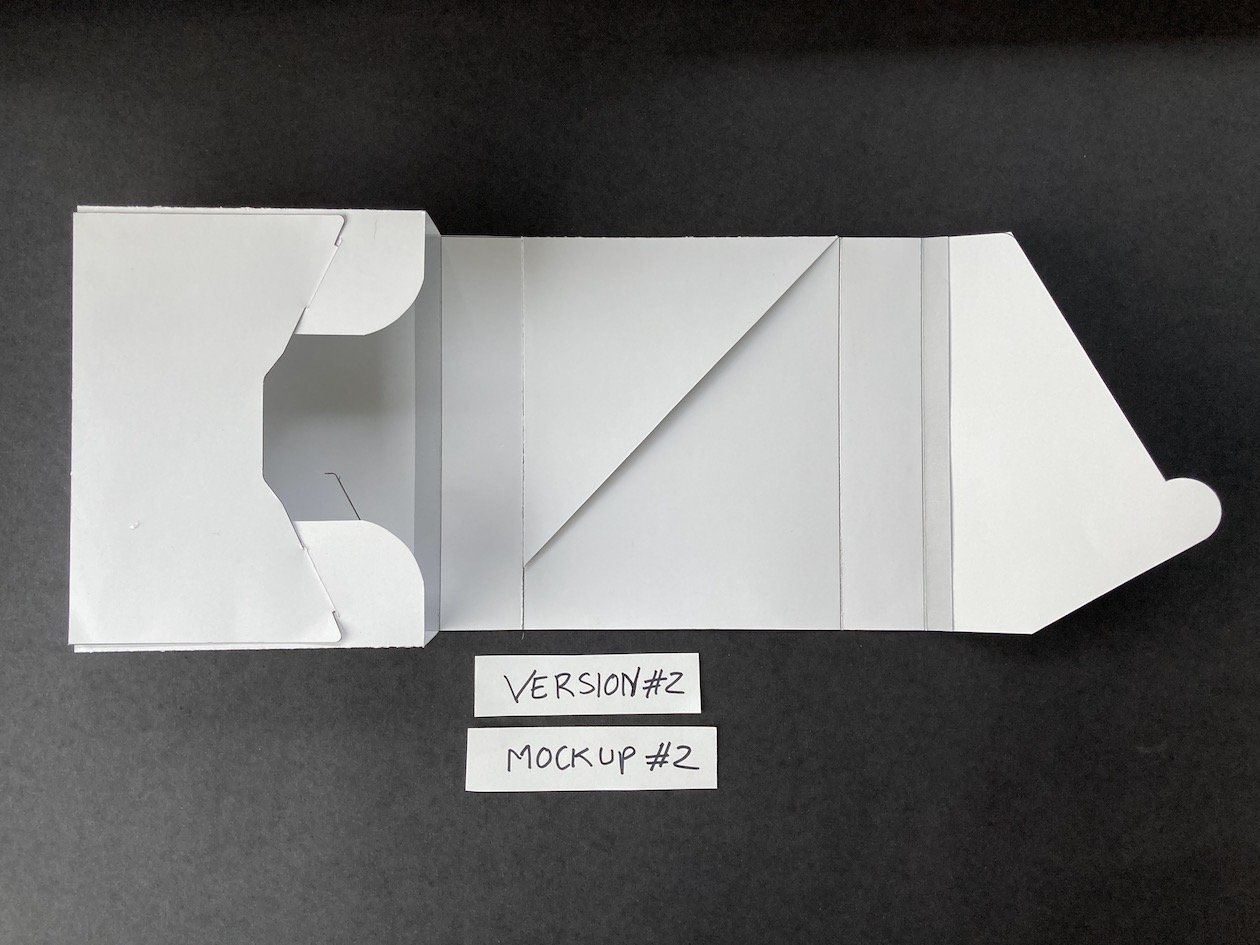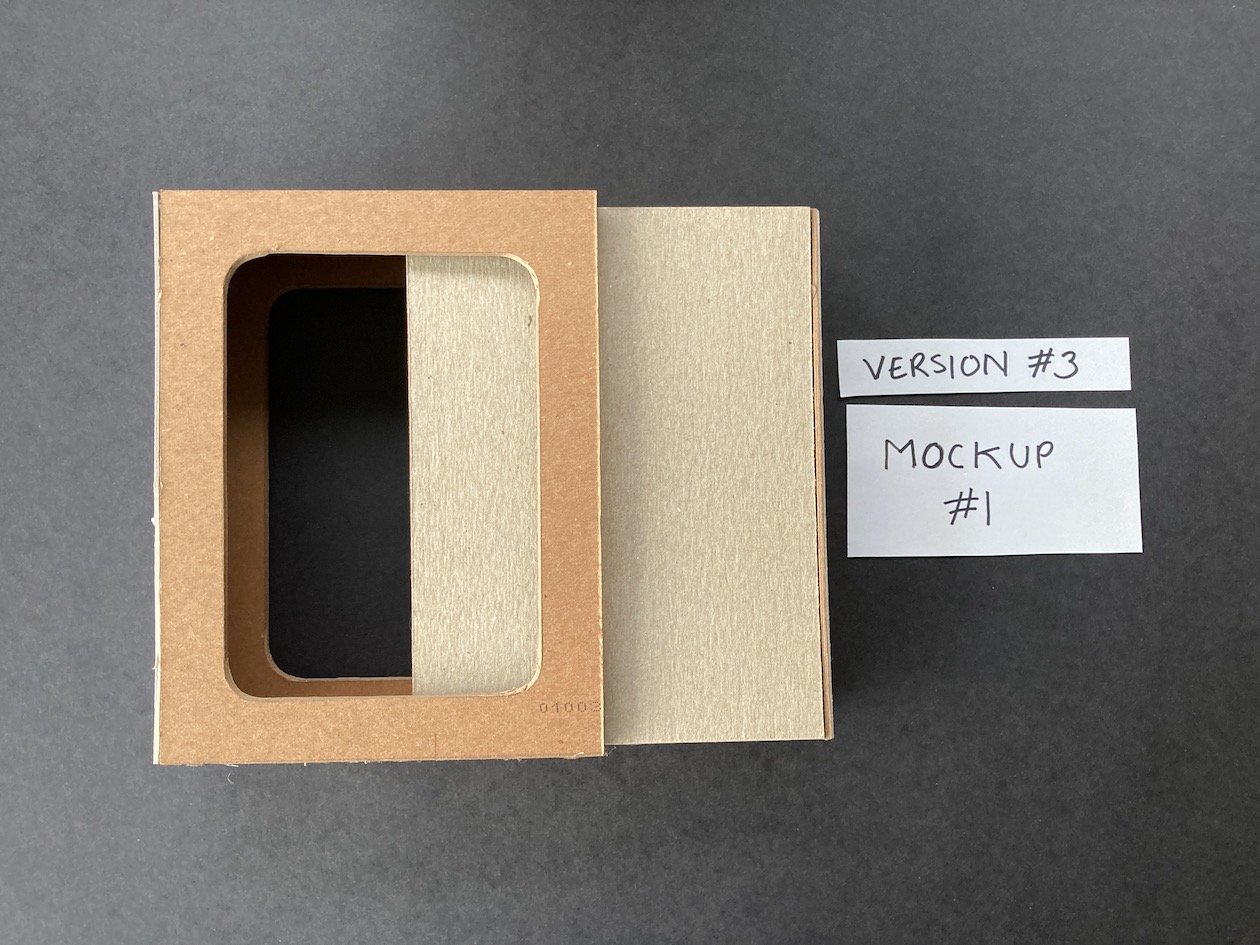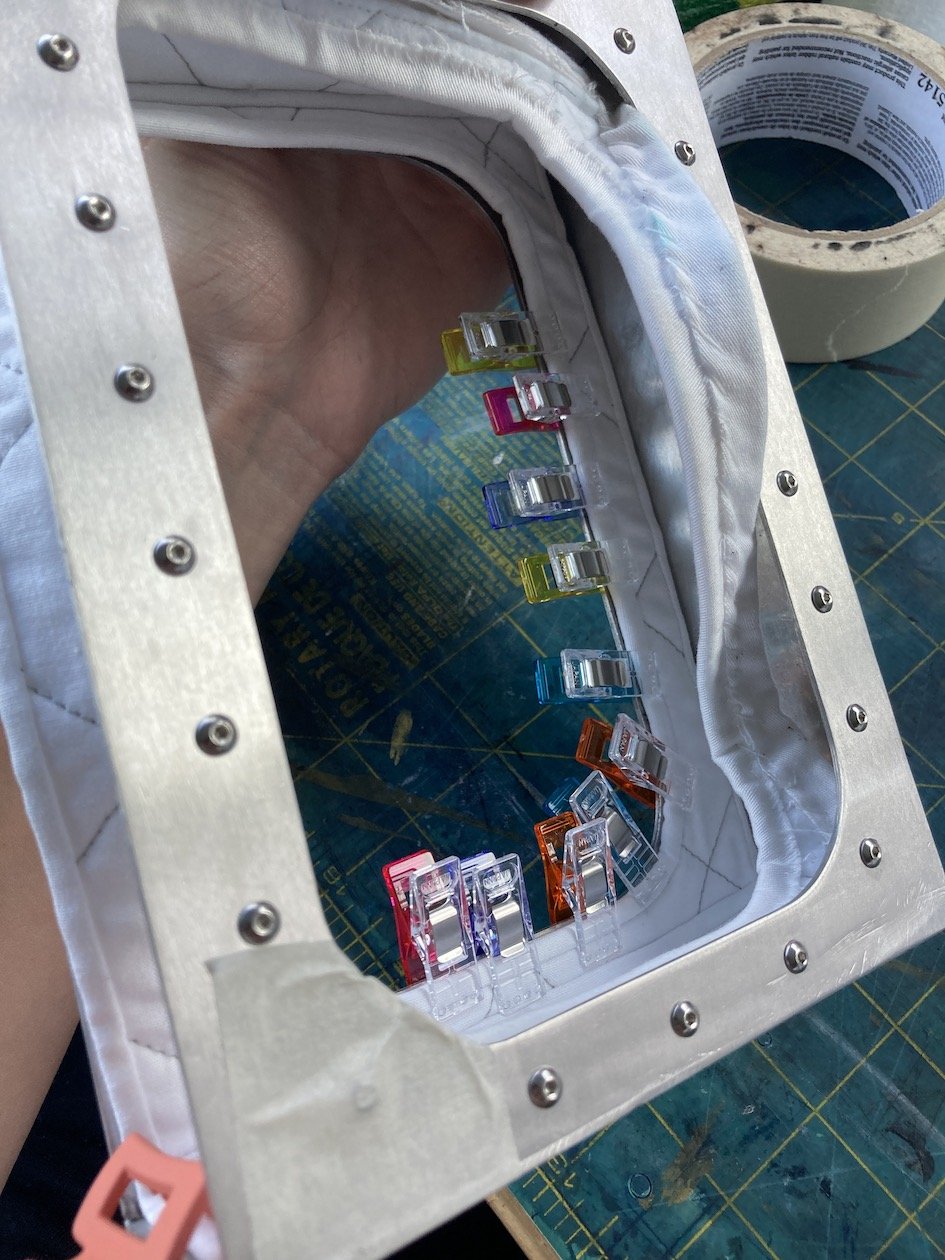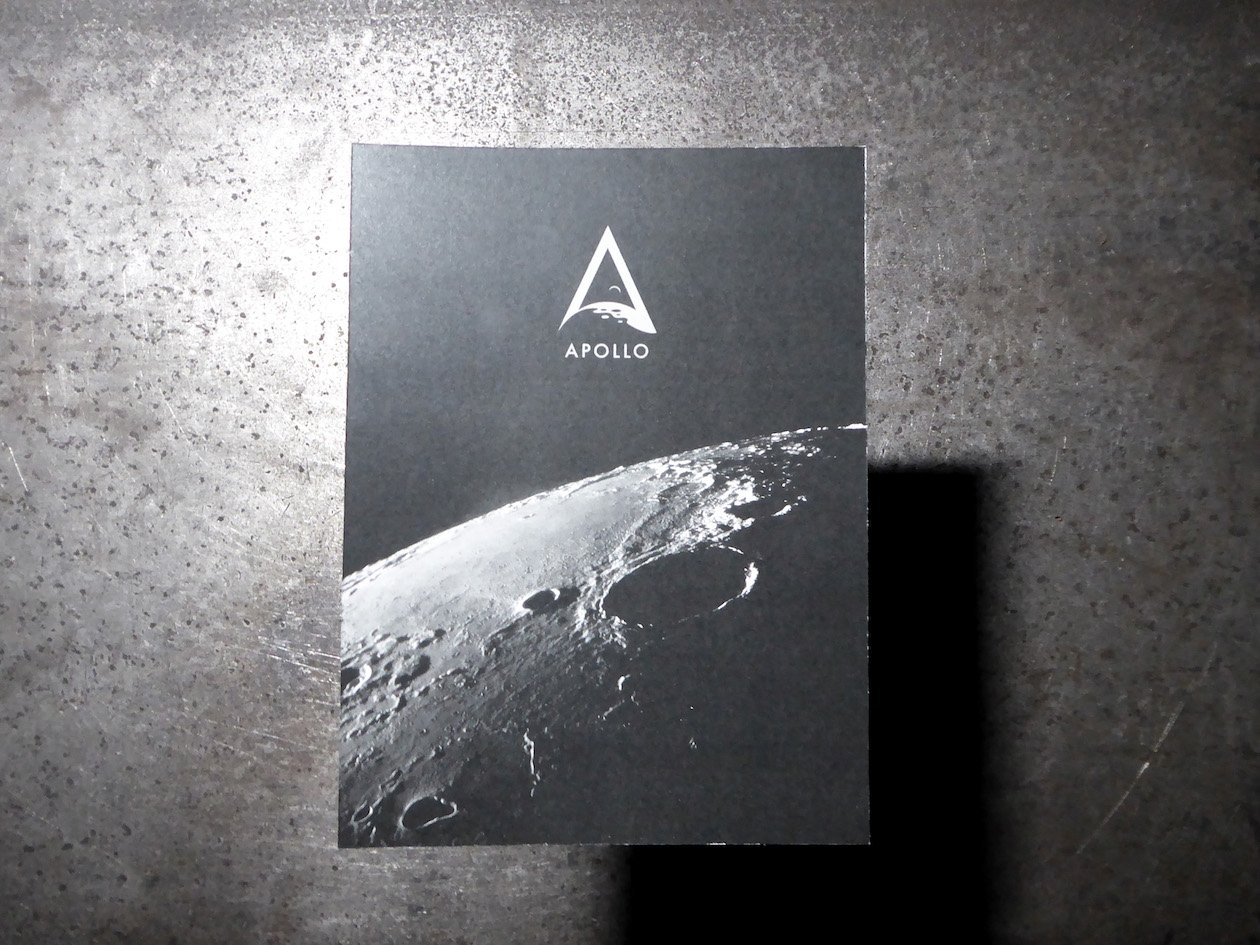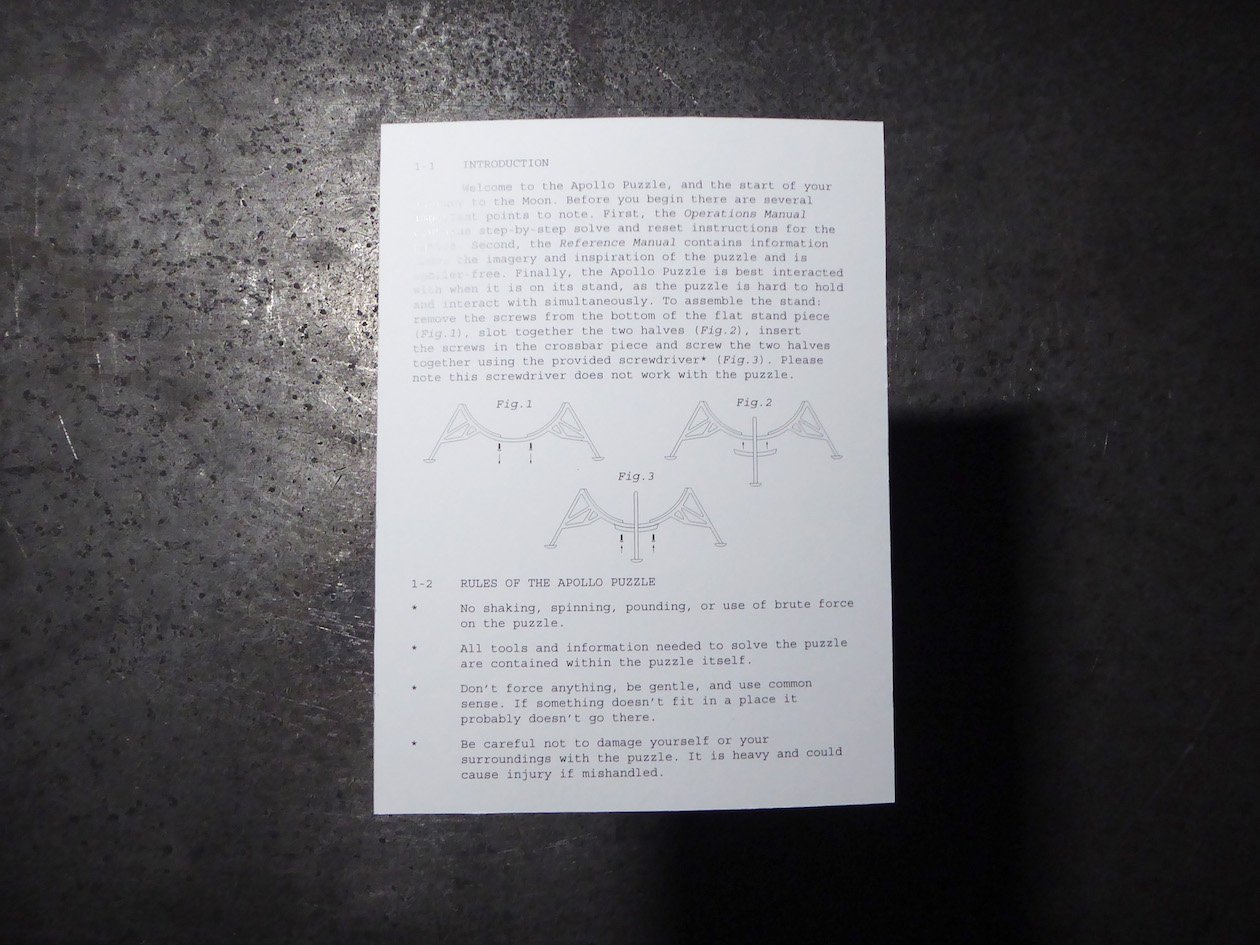the Apollo Puzzle
The Apollo Puzzle project began in the fall of 2019 with the idea of making a metal, space-themed, story-driven puzzle box. The original ideas looked a lot different than the finished puzzle, but the main ideas from the project’s beginning have remained the same all the way through. The Apollo Puzzle is a sequential discovery puzzle, played on a linear path with all the means of solving the puzzle contained within. The puzzle alone weighs 11.5 pounds, and combine with the full collection of items that go with the puzzle it all weighs about 15 pounds.
Part of the drive behind the Apollo Puzzle was a desire to get my hands dirty and truly build something. As much as I enjoy graphic design it is not a field that often allows me to build. Starting in November of 2019 I began designing a fully mechanical metal puzzle box, and began constructing it in December of 2019 with the help and expertise of my dad. The box is constructed from steel, aluminum, brass, plexiglass, and cast pewter. The box is a loving homage to NASA’s Apollo missions, and the awe that space and space travel has brought me my whole life. This project not only allowed me to get my hands dirty, but it brings analytical and creative thinking together in a way that graphic design doesn’t always manage to do. Playing through theoretical puzzles in my head engages a type of creativity that I wish I could use more often. It has been an experiment on many levels, and a learning experience in every way.
Puzzle INSPIRATION & RESEARCH
The Apollo Puzzle project was developed out of a life-long fascination with NASA’s Apollo missions and all things space and space travel. The awe of our first landing on the Moon is still palpable, so many years later. The beginning years of space travel are full of incredible invention and imagery, some of which served as direct inspiration for parts of the Apollo Puzzle and its accompanying materials. Every detail of the Apollo Puzzle was an opportunity to further incorporate the history it is inspired by. Two of the first elements of the puzzle that were decided on were that it had to be round and it had to be metal - two distinct features that immediately gave it a space age feel. From there a rabbit hole of space history opened up, and the process of research follow by inspiration which initiated more research (and so on and so forth) began.
Puzzle design & creation PROCESS
The Apollo Puzzle is a 10” diameter steel sphere with six flat 5” sides, each containing one or more puzzles. The fabrication of the box involved originally cutting nearly every piece by hand, a great deal of trial and error, and many learning curves. It was important that everything that was built be something that could be taken apart, for the sake of repair and improvements. Several pieces of the box were made by sculpting pieces out of clay, making molds from the sculpts, and casting the pieces out of pewter alloy. One piece of the puzzle was created by carving right into an aluminum sphere, using various punches and a foredom tool. The mechanisms within the puzzle use tools and techniques such as magnets, springs, re-imagined combination locks, and more to create its six unique sides. It was important that the puzzle itself as well as the process of solving it told a story, and this goal was omnipresent during the design process. Every puzzle, every bit of imagery, and every reference was carefully combined to make a cohesive journey within the box.
THE FINISHED PUZZLE
access hatch
The Access Hatch on the Apollo Puzzle is specifically inspired by the Command Module (CM) crew access hatch. The CM hatch was the entrance for the Apollo astronauts beginning their missions and their exit when their CM was recovered at the end of the mission. This hatch was also used during EVA (Extravehicular Activity a.k.a spacewalk) tasks once in space.
CRYOGENIC TANKS
The Apollo Cryogenic Storage System housed in the Service Module provided oxygen for the crew members and oxygen and hydrogen to the Power Generation Systems. The graphics on the Cryogenic Tanks side of the Apollo Puzzle are inspired by the meters on the instrument panel that track the pressure and quantity of the hydrogen and oxygen in various tanks.
ENVIRONMENTAL CONTROL SYSTEM
The Environmental Control System (ECS) side of the Apollo Puzzle was inspired by the ECS instrument in the Apollo Command Modules. The ECS had the job of maintaining a life-supporting environment for the astronauts, and ran continuously during the length of each Apollo mission, starting before launch and continuing through recovery of the returned Apollo Command Module and its crew.
RÉSEAU PLATE
The name of the Réseau Plate side of the puzzle comes from the internal glass plate used in the specially-engineered Hasselblad Electric Data Camera (HEDC) the astronauts used. The crosshairs engraved on the HEDC Réseau plate were carefully measured down to the micrometer so that NASA could reliably use the images to determine the size or distance of sites seen on the lunar surface. The puzzle’s Réseau Plate gives you a view of the quickly approaching Moon through the crosshairs of the HEDC camera. The pewter-alloy lunar surface underneath the Réseau-plate-inspired acrylic sheet was hand sculpted, cast, and weathered.
The moon
The Moon-like sphere element of the puzzle was originally sculpted and then cast, using the same method as the other two cast moon elements in the puzzle. This was attempted with two different sculpts (one more spherical than the first) but neither came out with the desired shape or detail. The final moon was made by carving away at an aluminum sphere using various punches and a foredom tool, and then blackened to give the detail in the piece some depth.
FORWARD WINDOW
The Forward Window references the thrilling glimpses of the moon caught through the triangular forward windows on the Apollo missions. The markings on the window are specifically inspired by the Landing Point Designator markings seen on the left forward window of the Landing Module. The rotating moon in this puzzle was hand sculpted and cast, set under steel and acrylic, with a triangular aluminum frame.
lunar plaque
The imagery on the Lunar Plaque side of the Apollo Puzzle was pulled directly from the lunar plaque used during Apollo 11. Lunar plaques were made for Apollo missions 11 though 17, and the design varied throughout their use. Each plaque was affixed to the Lunar Module’s ladder and was left behind on the Moon with the Lunar Module’s descent stage. The Apollo 11 plaque reads: "Here men from the planet Earth first set foot upon the Moon July 1969, A.D. We came in peace for all mankind.” It also bears the signatures of then president Richard Nixon and the three Apollo 11 astronauts: Neil A. Armstrong, Michael Collins, and Edwin E. Aldrin, Jr.
Descent Stage
The unique form of the Lunar Module descent stage is part of what makes the Apollo crafts so iconic. The Lunar Module was made of two parts - the ascent stage and descent stage. The Lunar Module would land on the moon’s surface as one unit but the two astronauts onboard would then depart the Moon in the ascent stage, leaving the descent stage behind. The spidery frame of the descent stage made for perfect inspiration for the stand for the Apollo Puzzle. The stand comes apart into two pieces for simpler stowing within the case.
Additional Elements
Story telling is at the center of the Apollo Puzzle, and so creating additional elements that added to the context and story of the puzzle was irresistible. It also expanded the materials and skills involved in the Apollo Puzzle to include more graphic design, illustration, book binding, sewing, and more.
reference manual
The Apollo Puzzle Reference Manual notes the inspiration for the various elements of the puzzle and includes photos and write-ups about the specific pieces of hardware that inspired the look, feel, and mechanics of the puzzle. The Reference Manual (and the Operations Manual) was inspired by the booklets of flight plans and checklists for the Apollo missions. As a bookbinder and graphic designer it was impossible to resist creating books inspired by the distinct sparse and functional style of the Apollo materials. I dug through checklists, manuals, reports, memos, and all sort of other print materials from the Apollo era and found inspiration in their layouts, graphics, stamps, and more.
Operations Manual
The Apollo Puzzle Reference Manual is the instruction manual for solving and resetting the puzzle, for those who may get stumped along the way. It is organized by stages aka sides of the puzzle, and is split into a “solve” half and “reset” half. The Operations Manual (and the Reference Manual) was inspired by the booklets of flight plans and checklists for the Apollo missions. As a bookbinder and graphic designer it was impossible to resist creating books inspired by the distinct sparse and functional style of the Apollo materials. I dug through checklists, manuals, reports, memos, and all sort of other print materials from the Apollo era and found inspiration in their layouts, graphics, stamps, and more.
Carrying CAse
About 3 years into the course of the 4 years spent on the Apollo Puzzle I learned to sew. I also realized that if I ever wanted to take the 11.5 pound puzzle anywhere I would need a safe way to carry it. These two elements led to the creation of the puzzle’s carrying case. The shape and design of the case was patterned and then adapted from an old bowling ball bag, and the style of it was inspired by the iconic white suits of the Apollo crew. The case holds the puzzle, the deconstructed puzzle stand, a screwdriver for assembling the stand, and the book slipcase with the two books and the intro card.
Intro Card
The Intro Card serves the simple but important role of giving the puzzler the lay of the land within the Apollo Puzzle. It details all the materials contained within the case, the rules of puzzle, and how to set up the puzzle’s stand.
Book Box
The slipcase for storing the books and card that accompany the Apollo Puzzle had a long evolution. It started as a simple envelope, then grew into a more complex envelope, than into an acrylic case, and finally into a series of two interlocking cases - one acrylic and one aluminum, lined with sewn padding. The final result was inspired by the long and rounded Docking Window on the Lunar Module.


